





millingandgrain.com Julio 2022 In this issue: Milling and Grain .Volumen 133 Número 7 . Julio 2022 Proud supporter of Download the Milling and Grain app to your smart phone INARECEN T POLL, MILLINGANDGRA I N W A S V O#DET LLIMDETSURTTSOMI GN MEMYBENIZAGAM SRE O F U K F L OU MILLERS YOUR GLOBAL PARTNER Volumen 133 Número 7 Bühler Días de Networking 2022 - Agricultura China Informe del Panorama (2022-2031) - Molinos inteligentes - Control rentable de Salmonella en piensos - Escocia el ingenioso - Refrigeradores del ciclo de compresión de vapor













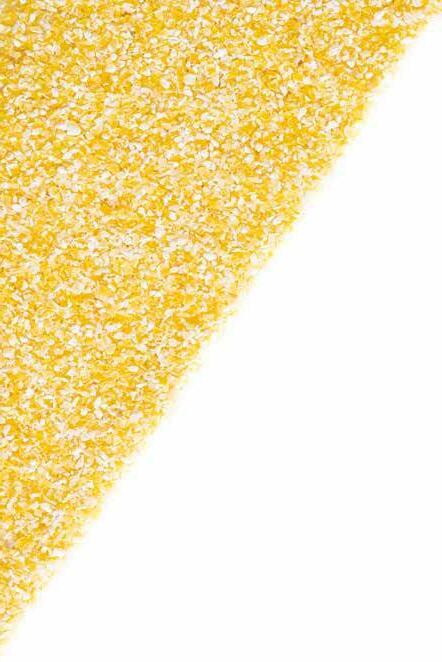



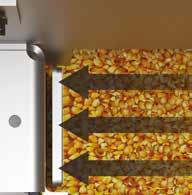
















*Patent Pending More profitable grain drying? NEW TrueGrain™ Moisture Sensor System With Parallel Sensing Technology™ Whatever moisture level you set your grain dryer to hit, is what you get. With Brock’s exclusive* TrueGrain™ System, grain passes through a parallel sensing field in a fixed vertical chamber that isolates outside factors. This advancement allows your Brock dryer to output more accurate grain moisture levels and more consistent profitability. See this one-of-a-kind technology at brockgrain.com/TrueGrain Precisely! TrueGrain and Storage | Handling | Drying & Conditioning | Structures +1 866.658.4191 sales@brockgrain.com


Pneumatic and mechanical ship (un)loaders Up to 2500 tph for loaders and up to 1200 tph for unloaders. Low noise & no dust emission Turnkey solutions for cereals, soy flour, fertilizer, pellets and more... Handle bulk with efficiency and reliability
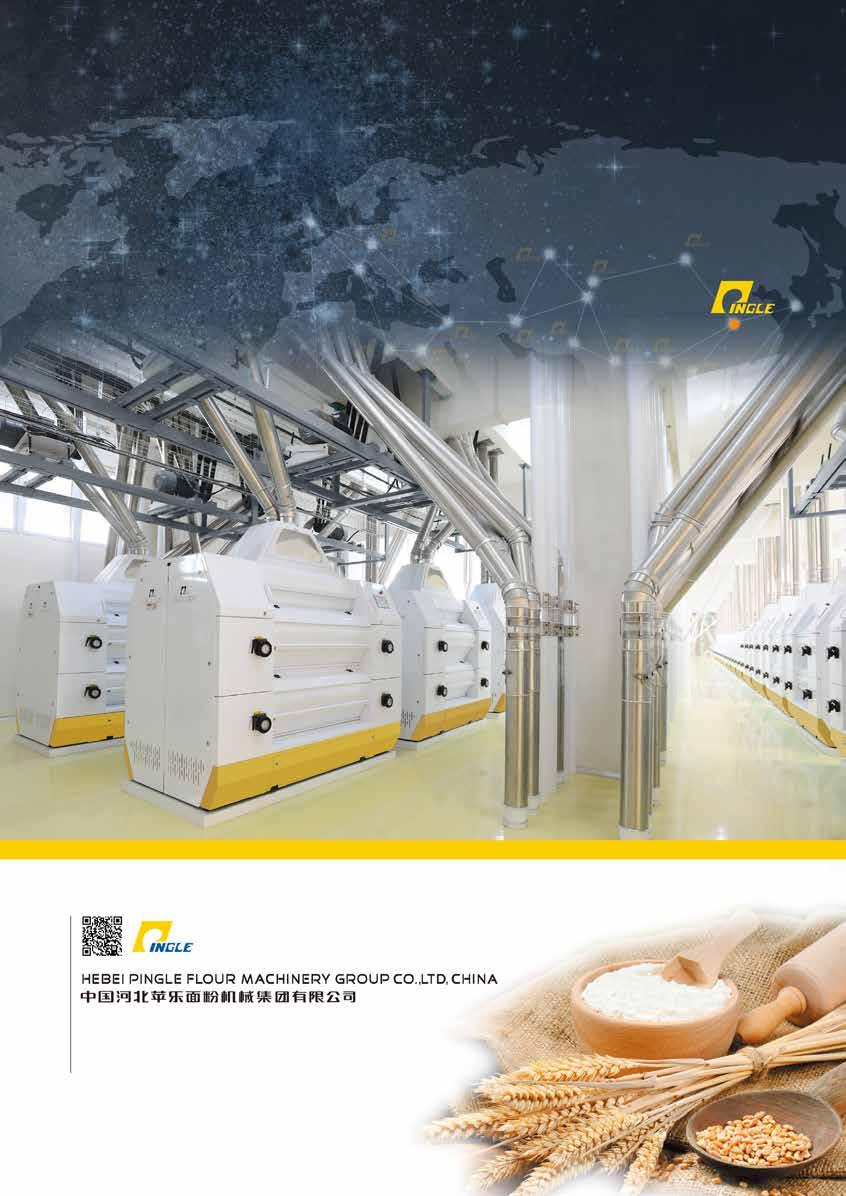
PINGLE. PROFESSIONAL MANUFACTURER OF GRAIN MACHINERY ★ INTEGRATED MILLING SOLUTION PROVIDER ★ ISO 9001:2015 CERTIFIED Аdd: Zhengding, Shijiazhuang,Hebei,China Tel: +86-311-88268111 Fax: +86-311-88268777 E-mail:pingle@pingle.cn / www.pinglemachine.com
Perendale Publishers Ltd



7 St George’s Terrace St James’ Square, Cheltenham, Glos, GL50 3PT, United Kingdom
Tel: +44 1242 267700
Editor
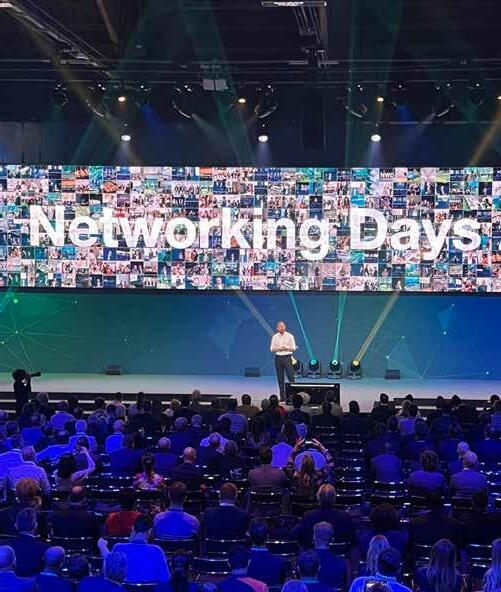
Roger Gilbert

rogerg@perendale.co.uk
Equipo de Marketing Internacional Darren Parris darrenp@perendale.co.uk Fred Norwood Tel: +1 405 834 2043 fredn@perendale.com

Equipo de Marketing de Asia Dante Feng Tel: +886 227930286 dantef@perendale.com
Equipo de Marketing de Latinoamérica
Clarissa Garza de Yta Tel: +52 669 120 0140 clarissag@perendale.com
Cristina María Roldán Otero Tel: +44 1242 267700 cristinaot@perendale.co.uk
Equipo de Marketing de Nigeria Nathan Nwosu Tel: +234 8132 478092 nathann@perendale.com
Equipo de Marketing Egipcio Mohamed Baromh Tel: +20 100 358 3839 mohamedb@perendale.com
Equipo de Marketing de Turquía, Eurasia y Medio Oriente Mehmet Ugur Gürkaynak Tel: +90 537 3646457 mehmetg@perendale.com

Director Editorial
Peter Parker peterp@perendale.co.uk
Subeditor Andrew Wilkinson andreww@perendale.co.uk
Asistente Editorial
Levana Hall levanah@perendale.co.uk
Caitlin Gittins caitling@perendale.co.uk
Editores Internacionales
Dr Roberto Luis Bernardi robertob@perendale.com
Professor Wenbin Wu wenbinw@perendale.com Mehmet Ugur Gürkaynak mehmetg@perendale.com

Director de Diseño
James Taylor jamest@perendale.co.uk 0
Circulación y Eventos Tuti Tan tutit@perendale.co.uk
Director de Desarrollo Antoine Tanguy antoinet@perendale.co.uk
millingandgrain.com ISSN No: 2058-5101
ARTÍCULOS
VOLUMEN 133 NÚMERO 7 NOTICIAS 10-29 44 Bühler Networking Days 2022 47 Levantándonos para enfrentar juntos
los desafíos globales 50 Impacto en la Cúpula 58 Otras historias
Networking Days 62 Informe sobre las perspectivas de la agricultura en China
66 Molinos inteligentes 72 Escocia el ingenioso 76 Control rentable de Salmonella en piensos ALMACENAMIENTO 78 Refrigeradores del ciclo de compresión de vapor 8 EDITOR Roger Gilbert 116 ENTREVISTA Andy Sharpe ©Copyright 2019 Perendale Publishers Ltd. Todos los derechos reservados. Ninguna parte
esta publicación puede
reproducida
ninguna
medio
“Global
EVENTOS 100 Listas de eventos, reseñas y vistas previas COLUMNS 10 MAG TV 10 The Global Miller 22 Mildred Cookson 28 La colección Rex Wailes 30 Dr Mahmoud Riyad CARAS 118 Noticias de personas de la industria mundial de la molienda CAPACITACIÓN 35 Noticias de capacitación del sector ENFOQUE DE PRODUCTO 38 ESTUDIO DE CASO 98 PERFIL DE LA INDUSTRIA 96 Grain & Feed Milling Technology magazine was rebranded to Milling and Grain in 2015 Julio
más información
44
a
de
(2022-2031)
de
ser
de
forma ni por ningún
sin el permiso previo del propietario de los derechos de autor. Puede encontrar más información en www.perendale.com Perendale Publishers Ltd también publica el “International Milling Directory” y el servicio de noticias
Miller”
2022 IMAGEN DE PORTADA: Bühler Networking Days 2022 -
en la página
Networking Days 2022 Más información en la página 44
Bühler
90 MERCADOS John Buckley
¡No me esperaba eso!
¿Cómo podría una empresa superar su propio umbral de logro tan fácilmente, pero lo hizo y convincentemente. De lo que estoy hablando es el resultado de los Bühler Networking Days celebrados en la última semana de junio.





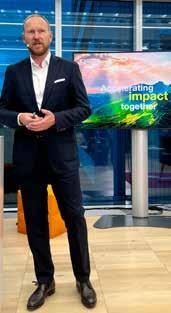
Los tres días que pasé con mis compañeros en la oficina central de la empresa en Uzwil, Suiza levantó totalmente la tapa de lo que nuestra industria –la molienda de alimentos y piensos, además de otras– está afrontando en el futuro inmediato en términos del cambio climático y el trabajo que tendremos que hacer para desempeñar un papel de liderazgo en la solución del problema.

Los más de 1000 clientes invitados y el personal de Bühler de todo el mundo (y participantes invitados que se presentaron desde el podio), se enfrentaron a la realidad de que nuestra industria debe dar un paso adelante y asumir la responsabilidad de la reducción de su huella de carbono, con el objetivo de alcanzar un net-zero para 2050. Y esa acción tiene que comenzar ahora en cada molino.
Sin embargo, este es el desafío que enfrentamos como industria: ¿Cómo proporcionar los alimentos para 9,5 millones de soles en el planeta y, al mismo tiempo, eliminar la producción de gases perjudiciales para el clima? Sí, eso es lo que tenemos que hacer si queremos evitar el desastre que ha sido prevenido por nuestra comunidad científica.
Aunque en el pasado se nos ha animado a «seguir el dinero», ahora debemos desviar nuestra atención y nuestros recursos y «seguir la ciencia»
Como prensa invitada, nos sentimos abrumados por el detallado programa establecido para nosotros: El número y el valor de las presentaciones; las numerosas conferencias de prensa que se centraron en casi todos los aspectos de estos desafíos; las entrevistas con los líderes de la empresa y los presentadores clave, así como las conversaciones con nuevos socios y empresas nuevas exitosas relacionadas con la empresa y apoyadas por ella.



Esta conferencia abordó toda una serie de temas, desde el cambio climático y la sostenibilidad, hasta la necesidad de reducir


los residuos y el uso de agua y energía, además de temas sobre liderazgo, alimentos con proteínas vegetales, carnes cultivadas en laboratorio (que no implican daño al animal implicado), nuevas fuentes de proteínas (incluyendo uno de un proceso de captura de carbono) y el mantenimiento de la biodiversidad.
Hemos hablado de salud humana, obesidad, igualdad y pobreza y del papel que nuestras industrias deben desempeñar en todos estos ámbitos. Hemos oído a los molineros individualmente lo que estaban haciendo para hacer frente a estos desafíos. La lista continúa.
En total hubo más de 50 asociaciones y nuevas empresas anunciadas y/o discutidas, además de conferencias y presentaciones sobre temas de liderazgo, gestión, capacitación, educación y aprendizaje, de una gama de directores ejecutivos de la industria o destacados especialistas en sus campos.
Este fue un evento muy estimulante, una inmersión no sólo en la tecnología que está moliendo hoy en día, Y los avances que se están haciendo en todos los ámbitos de la manipulación y el procesamiento de granos –y no deben pasar por alto el sector de la movilidad de Bühler, que está implicado en la fabricación de componentes para vehículos y la tecnología de procesamiento de baterías–, sino que abarcan todo lo relacionado con los puestos de trabajo que tenemos en la producción nuestros alimentos.
¿Ha llegado el mensaje a los operadores de plantas de producción del mundo?
Tal vez no todavía, pero el impacto de los días de Bühler Networking 2022 se sentirá durante muchos meses, y traerá un mayor entendimiento y reconocimiento de la cuestión que nos enfrenta y proporcionará el incentivo para tomar medidas.

Como he dicho en el pasado y se repitió en la sala de conferencias, una vez que se entiende una situación, se tiene la obligación de tomar medidas. Usted puede elegir no tomar ninguna acción, pero será responsable de su decisión en algún momento en el futuro.
Como dice Stefan Scheiber, director general de Bühler: El planeta no es nuestro, sólo lo hemos tomado prestado de nuestros hijos. Ahora es el momento de tomar medidas y hacer un impacto!
Annual Subscription Rates Inside UK: UK£100 Outside: US$150/€133 More Information
Milling and Grain has a cooperative partnership with COFCOET
www.millingandgrain.com http://gfmt.blogspot.co.uk
Roger Gilbert
YOUR GLOBAL PARTNER https://store.magstand.com/milling_and_grain www.millingandgrain.com
Stefan Scheiber,
CEO,
Bühler:
The planet is not ours, we have only borrowed it from our children

Noticias Milling




Bienvenido a esta edición de julio de 2022 de su columna de Global Miller. Espero que te encontremos feliz, saludable y humilde y que estés afrontando la crisis financiera con amor, tolerancia y optimismo.
Aquí, en el hemisferio norte, los agricultores se encuentran en medio de uno de sus muchos períodos ocupados del año, con la producción de heno y la recolección de ensilaje teniendo lugar este mes. El campo está actualmente lleno de convoyes de grandes vehículos de gran altura, apilados hasta el borde de los recortes verdes asociados con estas actividades.
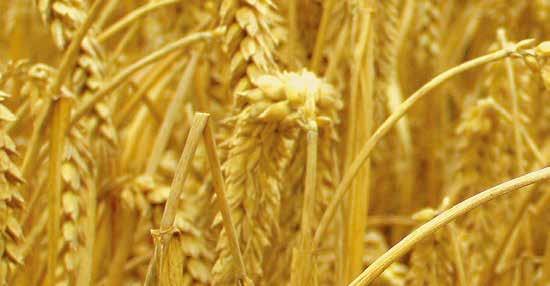
Otra actividad popular en este momento es el empacado, también forma gran parte del trabajo que se lleva a cabo en julio, con pacas cuadradas que normalmente se utilizan para alimentar caballos y pacas redondas son típicamente para ganado. Como he visto por mí mismo en el reciente evento de los cereales, las patatas siguen siendo mantenidas gracias al proceso de riego, y serán rociadas con pesticidas para evitar que el cultivo se dañe o se consuma.
Fue un placer contar con que el Dr. Mahmoud Riad, Secretario General de la Asociación Egipcia de Molienda - que representa tanto a los molinos de harina como a los molinos de piensos dentro del país - se uniera este mes al Rongorongo Live Video Studio. Nos conectamos a través de Zoom y le dio a Milling and Grain la oportunidad de preguntarle sobre el futuro inmediato de la industria, dadas las esperadas escaseces y dificultades a las que se enfrentará el mercado internacional del trigo en los próximos meses y posiblemente años.

El Dr. Riad declaró diciendo que a los egipcios les encanta el pan y mencionó el impresionante consumo per cápita y el número de panaderías que proporcionan pan; fascinante visión de un país donde el PIB nominal per cápita estimado para 2022 es de $4,176.00 dólares. En 2021 registró un crecimiento del PIB del 3,3 por ciento. Continuó describiendo el compromiso de su gobierno con el pueblo de Egipto en términos de mantener sus subsidios al pan suministrado a más de 80 millones de personas dentro de su población de 105 habitantes.

En marzo, el Primer Ministro, Moustafa Madbouly, fijó el precio del pan vendido comercialmente en 11,50 libras egipcias ($0,66) por kg, informó Reuters en ese momento. Reuters también declaró que los nuevos precios fijos para el «pan balady» plano y redondo se fijaban en 0,50, 0,75 y 1,00 libras egipcias para panes de 45, 65 y 90 gramos, respectivamente. (US$1:EGP€18,86).
El Dr. Riad confía en que el país puede capear la interrupción en los suministros de trigo en los próximos meses y temporadas. Ahora es un contribuyente regular a la Milling and Grain.

El vídeo del Doctor en el Rongorongo Live Video Studio puede verse aquí:
mymag.info/e/1472
Julio suele ser el comienzo de la temporada de cosechadoras para cereales como cebada y maíz, por lo que las cosechadoras serán una visión común en los campos y en las carreteras rurales, asegurándose de que llega tarde al trabajo o a esa cita si, como yo, tienes el placer de vivir ruralmente.
Dado que una serie de eventos del sector llega a su fin, hay mucha comodidad que se debe tomar de la aparente recuperación de ese aspecto de la forma en que hacemos negocios. Como he dicho innumerables veces, los eventos virtuales son geniales, pero realmente no son tan buenos como reunirse en persona.
Ni siquiera los mejores ingenieros informáticos podrían replicar la sensación de un cálido apretón de manos o contacto visual. Ahora lo intentarán y ciertos científicos afirmarán que lo han hecho con éxito, pero como los últimos años han demostrado, nunca lo clavarán 100 por ciento.
Tal y como fue promovido por nuestros amigos de Ocrim, este mes se celebra el lanzamiento del Festival de los cacahuetes y palomitas, con el evento que tendrá lugar del 23 al 29 de junio de 2022 en Mezzogoro, Italia. “Puede parecer un festival como muchos otros, una oportunidad de fiesta, pero hay mucho más detrás de la primera edición del Festival de cacahuetes y palomitas”, dice el artículo.

Descrito como un acontecimiento que «no debe perderse» para aquellos que aprecian el sabor del maní «100 por ciento hecho en Italia», esta ocasión se produce tras la reanudación del cultivo de esta fruta, Gracias a la recuperación de las semillas nativas de SIS - Società Italiana Sementi y Noberasco tras una ausencia de más de 50 años.
Así que, allí lo tenemos, el mundo de los eventos se está volviendo oficialmente loco y no puedo pensar en un mejor equipo que nuestros buenos amigos de Cremona para hacer que realmente suceda.
Hasta la próxima vez, arrivederci!
gfmt.blogspot.com
Vea más vídeos de todos los aspectos de la industria en millingandgrain.com/videos
10 | Julio 2022 - Milling and Grain
LATEST TECHNOLOGY
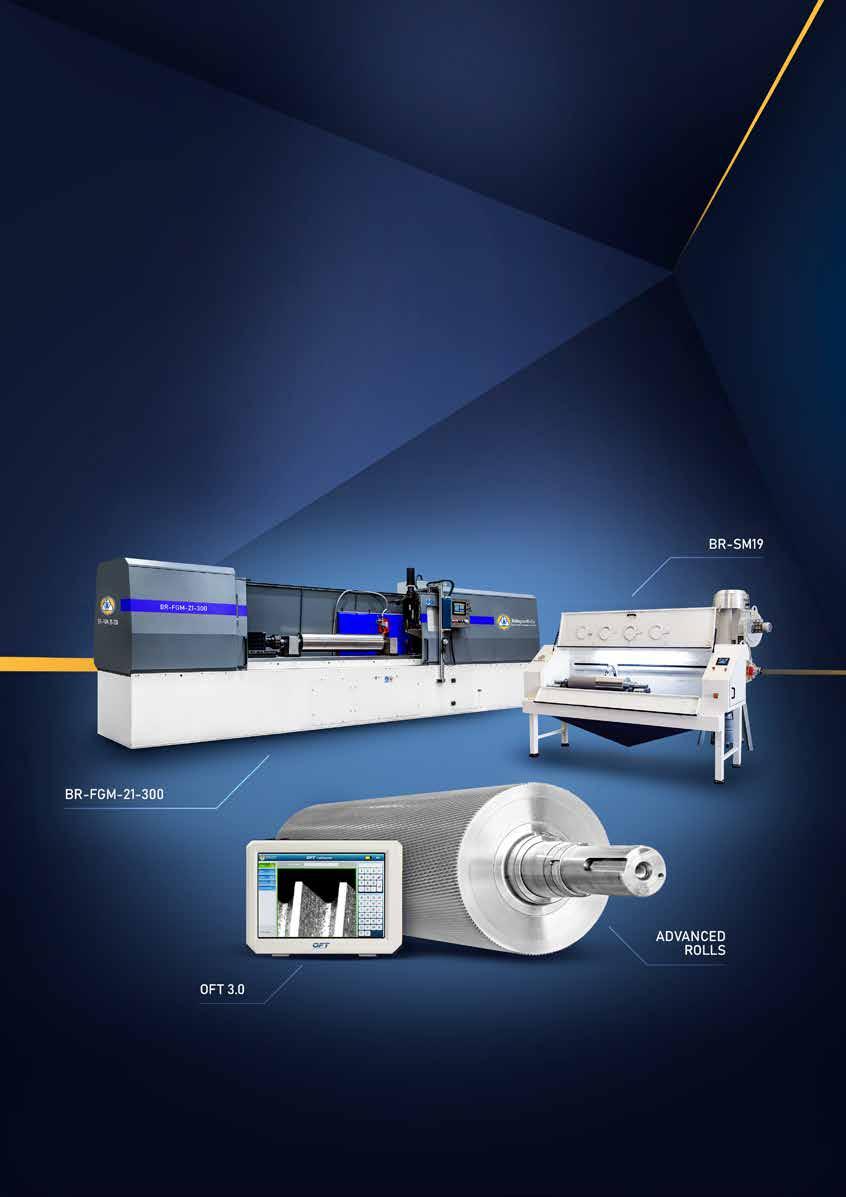

www.balaguer-rolls.com Facebook Youtube Linkedin
TO BOOST YOUR PROFIT
El Gobierno filipino trata de utilizar el libre comercio como herramienta deflacionaria
Filipinas anunció recientemente una decisión de reducir los aranceles restrictivos a la importación de maíz para el maíz no ASEAN de 35 a cinco por ciento.
La Orden Ejecutiva 171 citó la economía de la situación mundial actual impulsada por el conflicto entre Rusia y Ucrania y el papel fundamental del maíz en más del 50 por ciento del costo total de producción de las raciones de pollos y cerdos a gran escala para la decisión de reducir los aranceles a las importaciones de maíz.
El Consejo considera que se trata de un paso responsable del Gobierno filipino en la medida en que se enfrenta a presiones inflacionarias internas.
“Las industrias agrícolas de Estados Unidos y Filipinas han gozado de una sólida relación durante mucho tiempo”, dice Ryan LeGrand, Presidente y CEO de la USGC. “El Consejo está dispuesto a ayudar al gobierno y a la industria filipina a llenar cualquier escasez de suministro de materia prima que el país enfrenta. Los agricultores estadounidenses tienen un cultivo de maíz abundante y sostenible listo para su despliegue cuando sea necesario”.
La industria de piensos de Filipinas depende en gran medida de las importaciones de trigo forrajero debido a su historial de altos aranceles a las importaciones de maíz fuera de la ASEAN. Los recientes trastornos de la cadena de suministro mundial de trigo han tenido un impacto negativo desproporcionadamente en los precios de los insumos filipinos.
“Si estas reducciones arancelarias se mantienen a largo plazo, la industria ganadera filipina tendrá la oportunidad de volverse competitiva de nuevo con sus vecinos de la ASEAN. Cuando se dispone de un suministro constante de maíz, la demanda general de maíz crece, dado que el maíz sigue siendo la fuente de energía preferida por muchos nutricionistas”, dice Caleb Wurth, director regional de la USGC para el sudeste asiático y Oceanía.
“Esta mayor demanda de maíz también ayudará a los productores locales de maíz a unirse al mercado global de maíz, aumentando la eficiencia y la rentabilidad. El Consejo estará allí mismo con nuestros socios para asegurar que todas las partes en la cadena de suministro agrícola participen equitativamente en este movimiento histórico”.
… because that’s what we do, too. On every single FILIP cleaner, we monitor every detail throughout the entire manufacturing process. We know that our proven quality will guarantee effective sieve cleaning within your plansifters. And that, in turn, will ensure a high yield from your passages.

Efficient. Quality. Cleaning.
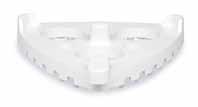
FILIP GmbH • Müllereibürsten • Anemonenweg 4 • D-33335 Gütersloh


Telephone: +49 (0)5241 29330 • Telefax: +49 (0)5241 20321
E-mail: info@filip-gmbh.com • www.filip-gmbh.com
Subscribe with our
new app!
mymag.info/e/1456
PARTNER
all
Get notified when new issues are available as well as access to our back catalouge of issues.
YOUR GLOBAL
SIEVE CLEANERS
12 | Julio 2022 - Milling and Grain Milling News
EXTRUSION AND EXPANSION TECHNOLOGY YOU CAN TRUST
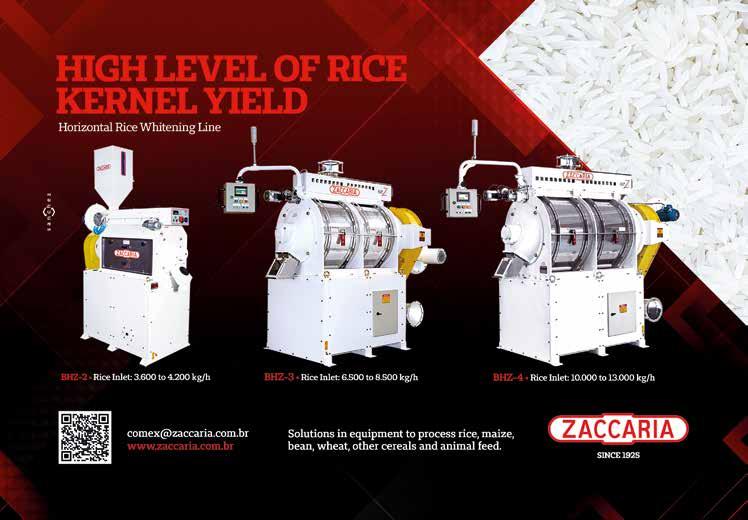

Scan the QR-Code for more information www.almex.nl
Visit us at Victam International Utrecht - The Netherlands Booth 1.432 Milling and Grain - Julio 2022 | 13 Milling News
www.almex.nl Which improves the quality of finished feed as well as a more efficient process. The Almex expanders have a reliably and sturdy design and are equipped by an unique Active Disk system (AD-system) in order to control exact product input and assure the quality of the product. with the Expander AL300


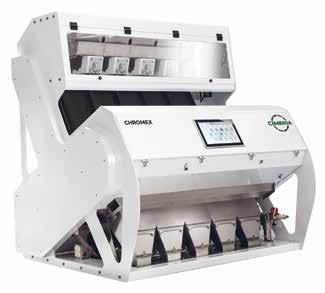
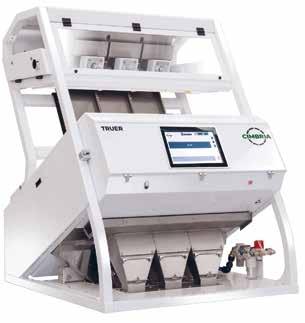
DSM adquiere la empresa líder en tecnología de nutrición animal de Brasil
La agricultura de precisión está creciendo rápidamente, impulsada por la creciente demanda de sostenibilidad, eficiencia, trazabilidad y bienestar animal en los sistemas alimentarios bajo presión para proporcionar proteína animal a la creciente población mundial.
Royal DSM, una compañía global de base científica dirigida a este propósito, anuncia que ha llegado a un acuerdo para adquirir PRODAP, una compañía brasileña de tecnología y nutrición animal que combina ofertas tecnológicas, servicios de consultoría y soluciones nutricionales personalizadas para impulsar la eficiencia y sostenibilidad en la cría de animales.
Las soluciones de nutrición de precisión de la empresa para la nutrición y la salud animal incluyen Verax™, un sistema de gestión animal integrado único e innovador que aprovecha los datos para proporcionar una comprensión más profunda de la salud, la productividad y el bienestar de los animales, Y Sustell™, un servicio inteligente de sostenibilidad diseñado para mejorar la sostenibilidad ambiental de la producción de proteínas animales.
Con sede en Belo-Horizonte, PRODAP se encuentra a la vanguardia del mercado de soluciones digitales, que está creciendo particularmente rápidamente en Brasil. PRODAP combina servicios de nutrición, consultoría y tecnología para optimizar las operaciones de cultivo de rumiantes.
A través de su cartera de soluciones digitales, recopila datos y desarrolla conocimientos en tiempo real, que se traducen en soluciones nutricionales personalizadas para los clientes, con asistencia remota o en persona proporcionada por sus consultores experimentados.
PRODAP tiene operaciones en los estados de Mato Grosso y Minas Gerais y emplea a 330 empleados, sirviendo a más de 5000 fincas en todo Brasil con impresionantes tasas de lealtad de clientes.



Precisión y personalización
Al aprovechar el poder de las
soluciones digitales de PRODAP, DSM dará otro paso adelante en su viaje de precisión y personalización. DSM fortalecerá y desarrollará aún más sus soluciones digitales para llegar a más mercados globales y especies, permitiendo una toma de decisiones nutricionales más inteligente gracias a la inteligencia artificial y otras herramientas.
PRODAP complementará el profundo conocimiento de DSM en nutrición animal y sus capacidades de asesoramiento con su amplia experiencia en consultoría, facilitando un nivel aún mayor de experiencia del cliente.
Además, al apoyar una agricultura más eficiente, la adquisición contribuye al compromiso de DSM de permitir una reducción de dos dígitos en las emisiones de ganado en la granja para 2030 como parte de sus compromisos de sistema alimentario para 2021.
«La necesidad de una cría animal sostenible nunca ha sido mayor ni más urgente. La nutrición de precisión es un camino clave para mejorar la eficiencia y sostenibilidad de la cría de animales, creando valor para una serie de partes interesadas, incluidos los agricultores y la sociedad en general”, comenta Ivo Lansbergen, vicepresidente ejecutivo de DSM Animal Nutrition & Health.
“Como tal, estoy encantado de que estemos uniendo fuerzas con PRODAP para ofrecer soluciones de agricultura de precisión a nuestros clientes, lo que contribuirá a una ganadería más sostenible para todos. ¡Juntos, lo hacemos posible!'
Leonardo Sá, CEO de PRODAP, dice 'Estamos encantados de haber encontrado una empresa como DSM que sinceramente comparte nuestro propósito de transformar la ganadería en todo el mundo y la visión de adoptar las nuevas tecnologías esenciales para lograr una agricultura sostenible y eficiente. Esperamos acelerar la expansión de estas nuevas tecnologías en la industria, junto con DSM.
Se espera que la transacción, que sigue sujeta a las condiciones habituales, se cierre más adelante este año.
Milling and Grain - Julio 2022 | 15 Milling News
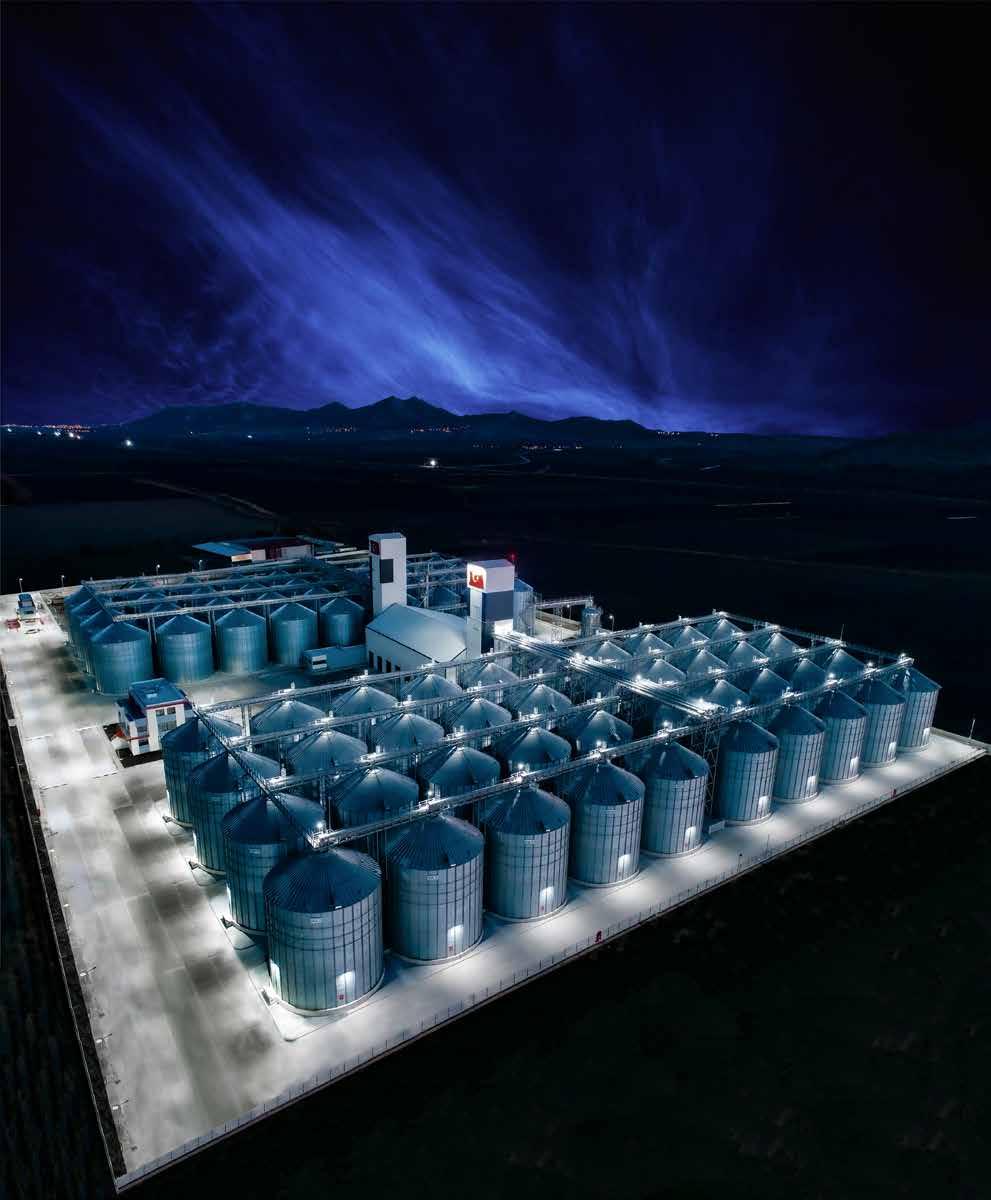
La Universidad Estatal de Oklahoma está desarrollando trigo de mayor calidad
La cosecha de trigo está en marcha en Oklahoma, y como preludio apropiado, los miembros del Equipo de Mejoramiento de Trigo de OSU están trabajando en variedades de trigo más fuertes y de mayor calidad.


Brett Carver, presidente de genética de trigo de la Universidad del Estado de Oklahoma, compartió con los productores de trigo en el reciente Día de Campo de Lahoma que su equipo de investigadores de trigo de OSU han estado criando variedades de trigo con una calidad excepcionalmente alta de gluten, excelente rendimiento y una resistencia fiable a las enfermedades.
“Con el trigo, podemos observar muchos factores de calidad diferentes, pero el que probablemente más destaca es la calidad del gluten”, dice Carver. “Cuanto mejor sea la calidad del gluten, mejor podremos hacer una hogaza de pan. Eso no es para descontar el rendimiento. Siempre vamos a pensar en el rendimiento, pero vamos a llevar la calidad a la conversación”.
Una mayor calidad del gluten podría significar más rentabilidad para los productores al aumentar el valor de un cultivo de trigo, y cuando ese rasgo se combina con una alta resistencia a las enfermedades, los productores también podrían ver un aumento en los rendimientos.
“Estas nuevas líneas fueron criadas con el propósito de maximizar la fuerza del gluten. Para hacer esto, tuvimos que usar la genética que nunca habíamos usado antes con la clase de trigo duro rojo de invierno”, dice el Sr. Carver sobre la nueva línea de variedades de trigo de OSU con linaje Gallagher.
Una variedad actualmente llamada 'OK15MASBx7 ARS 8-29' fue el enfoque principal del Sr. Carver para la presentación del día. Fue creado por la cría cruzada Gallagher y una variedad de la Universidad Estatal de Colorado llamada Snowmass.
Los agrónomos de OSU han creado este nuevo calibre de Gallagher para utilizar una proteína específica de gluten natural que no existe en otras variedades de trigo de OSU.
La variedad 8-29 serviría como ingrediente en el pan en lugar de como un cultivo independiente porque su gluten es increíblemente fuerte.
También tiene una fuerza equivalente o mejor que las variedades de primavera roja dura del norte de Estados Unidos y Canadá, y promedia dos fanegas más por acre que Gallagher.
“La adopción de la variedad 8-29 cambiaría lo que aparece en la etiqueta del ingrediente del pan”, dice el Sr. Carver. “El gluten vital del trigo se está agregando al pan para reforzar la fuerza y permitir el procesamiento moderno y rápido que se produce. Creemos que podemos hacerlo naturalmente en nuestras variedades de trigo por sí mismas”.
Mantener la alta calidad
El Sr. Carver dice que los investigadores de OSU han comenzado a experimentar con otros cuatro derivados de 8-29 que también tienen un fondo Gallagher, con la esperanza de crear un rendimiento aún mejor manteniendo la alta calidad.
“Este es un momento monumental para nosotros. En 2012, cuando iniciamos este programa de cruzamiento, no tenía idea de que aquí es donde terminaríamos –en una clase de trigo excepcionalmente funcional”, dice el Sr. Carver.

“Quiero asegurarme de que los productores tengan algo de lo que puedan crecer y captar valor, no sólo en la industria de la cocción sino también a nivel de los productores. Estamos tratando de averiguarlo lo más rápido posible”.
Espera que OSU lance las nuevas variedades de trigo Gallagher en los próximos dos años.
Milling and Grain - Julio 2022 | 17 Milling News

El consorcio de actores holandeses de la cadena avícola está uniendo fuerzas en una asociación públicoprivada en relación con los insectos como fuente de proteínas en las dietas avícolas. Protix, ForFarmers, Esbro, Venik y Wageningen Livestock Research, entidad holandesa del Grupo PHW, trabajarán estrechamente durante los próximos dos años.
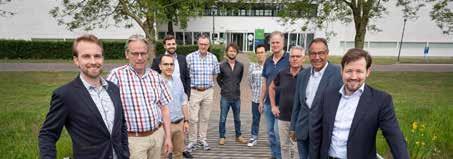
Su esfuerzo conjunto es investigar cómo los ingredientes de insectos del soldado negro vuelan en el alimento de las aves de corral, afectan la sostenibilidad, la salud y los parámetros de bienestar de pollos de engorde lento crecimiento.
En su entorno natural, los insectos son una fuente favorable de alimento para las aves de corral. Alimentar a las aves de corral con insectos es ahora una oportunidad interesante para transformar subproductos orgánicos de bajo valor en ingredientes de alimentación de alta calidad, ya que la Comisión Europea aprobó el uso de harinas de insectos en piensos para aves de corral y cerdos en septiembre de 2021.
Esta oportunidad podría ampliar la gama de materias primas de piensos para los productores de pollo, pero aún se necesita más información para toda la cadena avícola. El consorcio va a avanzar diligentemente en un enfoque basado en la ciencia para evaluar elementos potencialmente de valor agregado de las dietas de pollo que contienen ingredientes de insectos de la mosca soldado negra (BSF).
El proyecto de investigación se llevará a cabo en tres fases, a partir del 31 de mayo de 2022, con un proyecto piloto para estudiar los efectos de los diferentes niveles de inclusión de ingredientes derivados de larvas de FBS en los piensos para aves de corral. Sobre la base de los resultados de este proyecto piloto, se probarán diferentes dietas para pollos de engorde a gran escala en granjas de
pollos. En la tercera fase se probarán productos de FBS en dietas de pollos de engorde en combinación con otras fuentes alternativas de proteínas cultivadas a nivel regional para estudiar estos efectos.
“La identificación continua y la evaluación científica de alternativas innovadoras a los ingredientes convencionales de piensos para aves de corral son elementos importantes de nuestra estrategia de sostenibilidad”, dice Marcus Keitzer, miembro del Consejo del Grupo PHW y responsable de Proteínas Alternativas.
“Por lo tanto, nuestro objetivo es investigar el impacto específico de la inclusión de componentes derivados de insectos en las dietas de aves de corral en pollos para asar de crecimiento lento desde diversos ángulos. Este PPP nos permite hacerlo conjuntamente con algunas de las instituciones más reconocidas en el sector de los insectos y la agricultura de Europa”.
Ambición y responsabilidad


Según Kees Aarts, fundador y director ejecutivo de Protix, “los tiempos sin precedentes de hoy revelan dolorosamente la urgencia de restablecer el equilibrio con la naturaleza. Los ingredientes sostenibles juegan un papel importante en esto. En Protix nacimos de la sostenibilidad, y estamos orgullosos de unir fuerzas con estos pioneros y trabajar juntos en un enfoque integrado de la cadena de valor.
“La creciente demanda mundial de proteínas animales exige soluciones innovadoras y sostenibles para los piensos y las granjas. La proteína de insecto podría tener un papel importante como fuente alternativa y sostenible de la proteína en alimento animal.
“Esta asociación es un gran ejemplo de la ambición y la responsabilidad de ForFarmers de desarrollar nuestro conocimiento e innovar para el futuro de la agricultura”, afirma Joost Sparla, Director de Marketing de ForFarmers.
Los actores clave de las aves de corral unen sus fuerzas para evaluar a los insectos como una fuente de proteína viable
Milling and Grain - Julio 2022 | 19 Milling News
El Gobierno del Reino Unido busca equilibrar la seguridad alimentaria y sostenibilidad medioambiental
Las críticas a la política de la Estrategia Alimentaria para Inglaterra publicada recientemente por el gobierno del Reino Unido han sido injustas y el gobierno ha dado prioridad correctamente a la producción nacional de alimentos.

Esa es la opinión de Mark Lumsdon-Taylor, socio de los contadores públicos MacIntyre Hudson (MHA), quien dice: “La estrategia alimentaria del gobierno y la respuesta al Informe Dimbleby se han enfrentado a muchas críticas, pero el sector necesita adoptar una visión más comedida”.
La mayoría de las críticas se centraron en la disminución, o el rechazo, de las propuestas del Informe Dimbleby que apuntaban a promover una alimentación más saludable y el trabajo ambiental en la Inglaterra rural.
“Aunque esto es lamentable, los críticos dejan de lado que el gobierno tuvo que tener en cuenta los acontecimientos recientes. La estrategia que el gobierno produjo prioriza sensiblemente la producción nacional de alimentos.
“A medida que Rusia estrangula el suministro mundial de cereales de Ucrania, este fue sin duda el enfoque correcto. Como indica la estrategia: «el éxito de la producción interna es lo que
nos da resiliencia nacional en un mundo incierto».
Si bien esto significó que las prioridades ambientales pueden haber ocupado más de un asiento trasero de lo esperado, la continua invasión rusa de Ucrania y el bloqueo del Mar Negro han forzado la mano del gobierno.
“Sin embargo, la estrategia todavía establece una visión para mantener el nivel actual de producción nacional de alimentos, reduciendo al mismo tiempo las emisiones de gases de efecto invernadero (GEI) y los impactos ambientales del sistema alimentario, en línea con los compromisos netos cero y las metas de biodiversidad.
Esta ambición demuestra que el gobierno todavía está tratando de unir los objetivos gemelos de la seguridad alimentaria y la sostenibilidad ambiental. Recientemente se ha convertido en un equilibrio más difícil de lograr, pero no imposible.
“Otro objetivo enormemente positivo de la estrategia es situar la producción sostenible de alimentos en el centro de la educación y el aprendizaje. Esto ha tardado demasiado en llegar. Pagamos menos por nuestros alimentos que las generaciones anteriores, pero los apreciamos menos: Esto tiene que cambiar”, añade.
IF YOU THINK YOUR FEEDMILL COULD RUN FASTER... >YOU’RE PROBABLY RIGHT Here at Anderson Feed Technology, we believe that building a successful feed milling operation is about more than just a building. With a combined 200 years-plus milling experience, we help you build efficiency into your entire process – unlocking more from your existing assets. In fact, our popular Feed Milling Health Check is proven to realize improvements of 10-20% for customers. So why not contact us to arrange one or visit our website to learn more. >www.andersonfeedtech.com/healthcheck 20 | Julio 2022 - Milling and Grain Milling News

Revistas de molienda del pasado en el Archivo de Mills
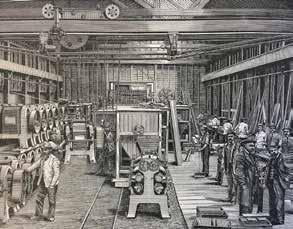
laminadas, sostenidas sobre columnas de hierro fundido. Un ascensor y una escalera de piedra daban acceso a todas las plantas.
El mes pasado resumí la historia de la familia de molinos Davidson hasta 1860, cuando John Davidson pasó a su hijo propietario de la fábrica que había reconstruido recientemente a partir de las cenizas de una horrible explosión en un edificio vecino.

Algunos años más tarde, los señores Davidson e Hijos’, el nuevo nombre de la firma, adoptaron el sistema Harrison Carter para tener una mayor capacidad. Un nuevo edificio de cuatro pisos fue erigido además del antiguo molino que fue utilizado para la limpieza de granos.

El nuevo molino, como se muestra en la ilustración, se enfrentaba a un amplio embarcadero, cuya longitud entera era servida por dos poderosas grúas de vapor. Por la noche el embarcadero podía ser iluminado por una linterna que encerraba seis lámparas eléctricas de 50 candlepower cada una.

Un carro cubierto de ocho pies, pasó a través del molino, conectando el embarcadero con la calle más allá. El nuevo molino se instaló para poner nuestros 35 sacos de harina por hora, y fue construido por el Sr. Walter Scott, a partir de diseños del Sr. Richard Cail.
Construido de ladrillo rojo con apósitos de piedra
El nuevo molino de rodillos fue construido de ladrillo rojo con apósitos de piedra, el interior está forrado con ladrillos de vidrio blanco, descansando sobre una fundación mantener de hormigón y arcos invertidos. Los cinco pisos eran llevados sobre vigas de hierro
Al entrar en el molino a nivel del suelo, había cinco líneas de fastillado que conducía a los molinos de rodillos en el suelo por encima, los ejes se ponen en movimiento por cuerdas, directamente desde el motor. Se colocó longitudinalmente una fila de fondos del elevador en el centro de este piso, y ocho fondos del elevador de un tamaño mucho mayor se colocaron en una línea contra la pared.
La harina de patente y la harina de primera rotura fueron «saqueadas» en este piso. Una escalera de piedra llevó a la primera planta, donde había cinco filas de molinos de doble rodillo con alimentación automática, los molinos que se manejaban de las cinco líneas de fastillado en el suelo de abajo.
Había 50 molinos de rodillos en este piso, todas las máquinas dobles de las cuales 19 eran los molinos de rodillos de hierro refrigerados ranurados de Carter para la reducción del trigo, efectuado en el sistema de siete roturas.
El primer y segundo descansos se produjeron en dos máquinas dobles respectivamente, y tres máquinas dobles se utilizaron para cada uno de los descansos tercero, cuarto, quinto, sexto y séptimo.
También había un molino de rodillos de hierro refrigerado doble ranurado para despojos finos y 30 molino de rodillos de hierro refrigerado suave, 20 molinos dobles Carter y 10 molinos Grays para reducción de enanos medios. Antes de ser reducido el trigo se clasificó en cuatro tamaños.
 Por Mildred Cookson, The Mills Archive, Reino Unido
Los nuevos molinos de harina Phoenix de los Sres. J Davidson e Hijos, Newcastle-on-Tyne Parte 2: El Fénix se expande y se transforma
Harrison Carter four roller break mill
Interior view of erecting shop for centrifugals, scalpers, purifiers etc
Cross section of the new mill
Por Mildred Cookson, The Mills Archive, Reino Unido
Los nuevos molinos de harina Phoenix de los Sres. J Davidson e Hijos, Newcastle-on-Tyne Parte 2: El Fénix se expande y se transforma
Harrison Carter four roller break mill
Interior view of erecting shop for centrifugals, scalpers, purifiers etc
Cross section of the new mill
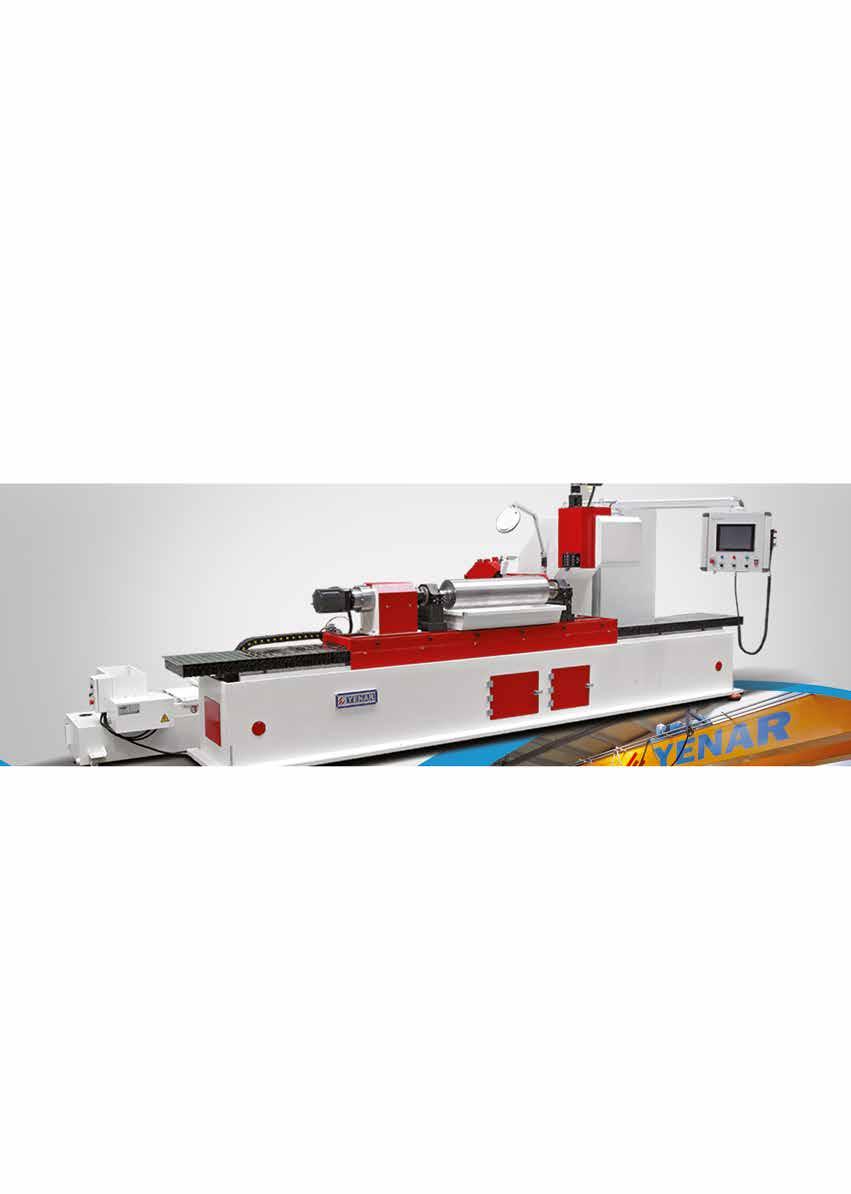
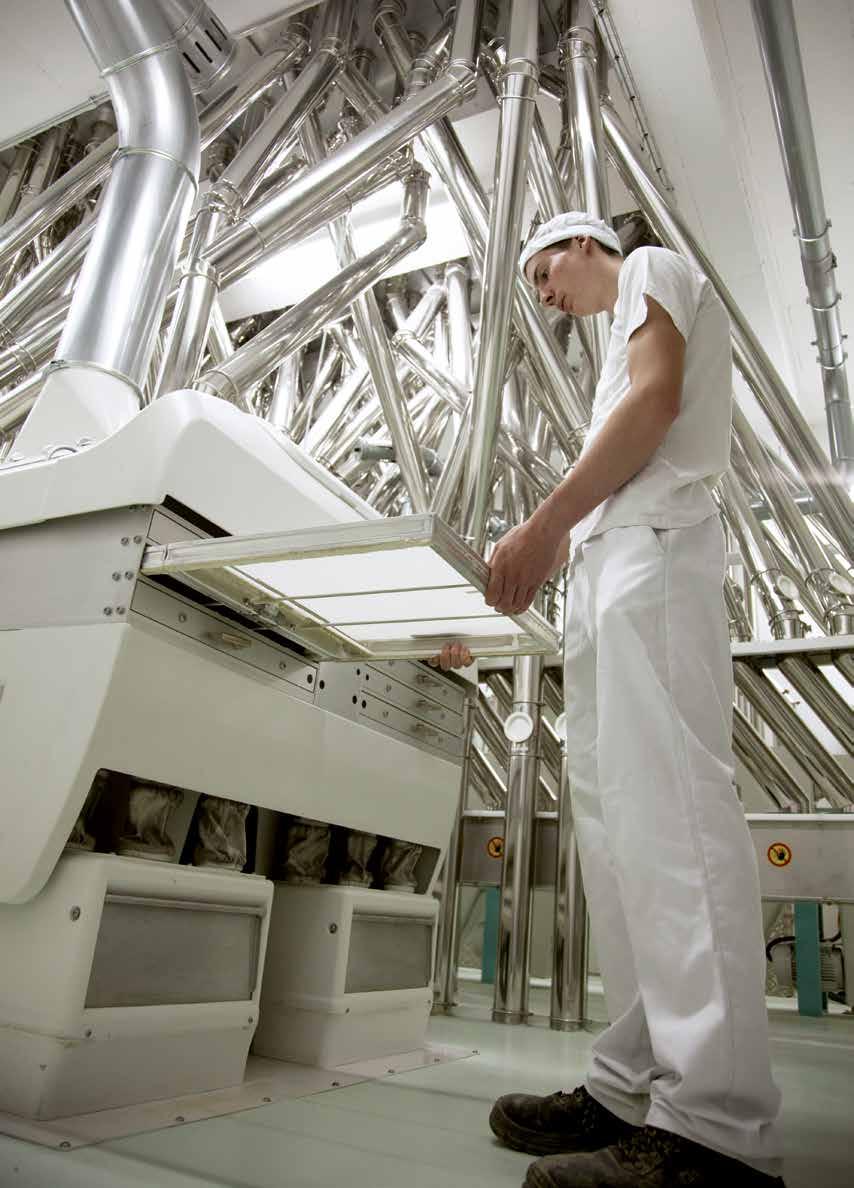

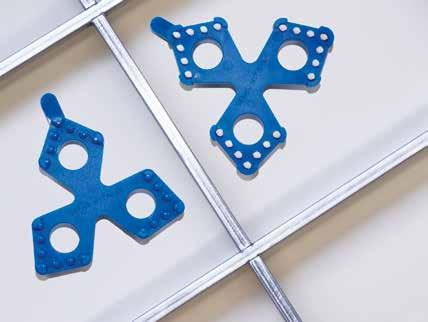

SEFAR NYTAL ® . The name you can trust. Since 1830, Sefar is the single-source supplier to millers for all products for sieving, grading, and dust filtration as well as connector sleeves, sieve cleaners and tensioning equipment. FOOD SAFETY FDA COMPLIANT Headquarters Sefar AG Hinterbissaustrasse 12 9410 Heiden – Switzerland Phone +41 898 57 00 filtration@sefar.com www.sefar.com As your trusted supplier of precision woven fabrics, Sefar is proud to introduce our newest complimentary innovation: SEFAR NYTAL® Sieve Cleaners
Un efecto hermoso
El segundo piso contenía la primera parte de la maquinaria de vestuario y 10 escalfadores que operaban en los productos de la segunda, tercera, cuarta, quinta y sexta pausa. Aquí también había una línea de purificadores de tamiz de Carter, que consistía en 10 máquinas dobles, dos purificadores asignados a cada máquina.

Desde este piso hacia el viejo molino había una pasarela, los lados y el techo cubiertos de chapa de hierro corrugado. La pasarela también tenía tres transportadores, uno para traer el grano limpio del departamento de limpieza de trigo al molino donde fue elevado por medio de un gusano vertical a los niveladores: el segundo transportaba los despojos al antiguo molino, donde se separaba en salvado, pollards y punzones, y finalmente el tercero transportaba la harina de “tirada recta” por medio de una banda de 12 pulgadas al antiguo molino, donde se pesaba y saqueaba.
El siguiente piso fue equipado con dos alumnos de grado Davidson, dividiendo el trigo en cuatro tamaños diferentes antes de ir al primer rodillo de descanso. Además, había 26 máquinas centrífugas fabricadas por los propios molineros de la fábrica, un primer rollo de harina de rotura, que separaba a los enanos, de la harina de pliegue y 22 purificadores de sémola por gravedad de Carter. Un efecto hermoso fue logrado por las máquinas y sus varias boquillas en línea recta.
Un sitio para contemplar
Estas máquinas estaban sobre un transportador con tres «gusanos» paralelos separados de 38ft mm de longitud. En este piso también estaba el eje principal para poner en movimiento las diversas máquinas de vestir.
Un estriado, 8 pies la rueda del diámetro para recibir seis cuerdas, hecho de algodón 2 pulgadas de diámetro. Fue fijado a este eje, la rueda que está conectada directamente con la rueda estriada del motor. Desde
este eje se pusieron en marcha las máquinas del segundo y del piso superior. Las bandas para estos ejes fueron suministradas por los Sres. Angus & Co, de Newcastle.
El cuarto piso tenía el resto de la maquinaria de aderezo de harina, consistente en 9 centrífugas, dos de las cuales fueron usadas para harina patente, 2 escaladoras de séptima rotura, 2 escaladoras de primera rotura, 4 carretes de corte, 2 pulverizadores verticales de salvado Davidson, 3 carretes de doble grado para purificadores por gravedad, 2 carretes de clasificación dobles, 6 carretes de vestir re, y 1 carrete de germen.
El departamento de limpieza de trigo estaba en el antiguo molino y los diferentes tipos de trigo se limpiaron mediante 3 separadores de semillas de Davidson, 2 exploradores Victoria, 3 separadores de trigo de Young, 4 mantillos y 3 conjuntos de cilindros de Van Gelder, 2 máquinas Simplex, 2 exploradores, 2 Cepilladoras de lanzamiento y un secador y una lavadora utilizados para trigos extraños.
La nueva planta fue impulsada por un par de motores de condensación de superficie compuesta horizontal capaces de 80 libras por pulgada cuadrada de presión de caldera de desarrollo de 600hp. La casa del motor en sí era 50ft de largo por 26ft de ancho y 30ft de alto de madera abierta, techo acanalado curvado coronada por una luz linterna de 30ft de largo. Las paredes estaban acabadas en cemento de Keene, con pino dado enmarcado.

Milling and Grain - Julio 2022 | 25
Carter's purifiers
La escasez de nuevos candidatos hace que la industria cerealera francesa asuma el control
Los proveedores tradicionales de candidatos en Francia, como Ensmic o Aemic, ya no son suficientes ante la falta de atractivo del sector, con todo el sector en alerta para remediar esta situación.

Las cifras hablan por sí solas: mientras que casi 80 estudiantes se graduaron de Ensmic (École Nationale Supérieure de Meunerie et des Industries Céréalières) con BTS en las industrias cerealeras a finales de los años 1990s, ahora sólo hay una docena de estudiantes matriculados en el primer año.
El año 2021 fue casi sinónimo del cierre de la única clase BTS en la industria cerealera. Esta observación habla mucho sobre la desafección que experimenta la profesión de la molienda y explica en parte por qué el sector francés de la molienda está luchando por reclutar.
Esta situación es compartida por el sector de la alimentación animal y, de hecho, afecta a todos los procesadores de grano. Frente a esta preocupante situación, el sector -que hasta ahora ha sido bastante pasivo- ha decidido reaccionar, y de una forma nueva, colectivamente.
Esta doble observación, que se autoperpetúa, con, por un lado, una profunda falta de conocimiento de las profesiones de transformación de grano y, por otro, su atractivo muy limitado, no es nueva, pero el año 2021 parece ser el año de la conciencia colectiva de la urgencia de actuar.
Según la ANMF, en el sector de la molienda escasean casi 500 puestos, con preponderancia de puestos para conductores de cilindros y supervisores de molienda, técnicos y encargados de la entrega.
Después de un anuncio inicial de la ANMF, que hizo de esto su caballo de batalla para los próximos años en su convención nacional de septiembre en Burdeos, la Aemic (Asociación de Antiguos Estudiantes de la Industria del Molino y Cereal) organizó una mesa redonda durante la JTIC (Jornadas Técnicas de las Industrias del Cereal) El pasado mes de noviembre, titulado «Empleo, formación, carrera y atractivo de la industria cerealera». ¿El comienzo de una nueva era para el sector?
Comuníquese para salir de las sombras
Si el público en general siempre ha identificado al panadero, por razones de proximidad, o al agricultor que produce trigo en la cadena, el conocimiento del molinero, el vínculo esencial entre estos profesionales, es menos obvio. 'Durante años, hemos logrado arreglárnoslo. También es nuestra culpa», admite Lionel Deloingce, presidente de la fábrica de Paul Dupuis en Seine-Maritime y ex presidente de la ANMF.
«Ya es hora de que esta profesión, que crea valor, conocimiento y pericia, sea capaz de obtener reconocimiento», dice. Durante mucho tiempo, la ANMF
ha centrado su comunicación en el producto acabado, la baguette, dejando a un lado la harina y la propia profesión de molienda.
«Hemos estado cambiando nuestra forma de comunicarnos desde hace algún tiempo insistiendo en la harina, como un producto noble y esencial, Y sobre el comercio para sacarla de las sombras, cada vez más presente en las redes sociales en particular», explica Flavie Souply, directora técnica y de sostenibilidad de la ANMF. Los cortometrajes se han transmitido en las redes sociales, marcando este cambio hacia el público en general. Y para optimizar estos proyectos, la organización contrató a un gerente de comunicaciones a principios de año.
«Jean-Fraçons Loiseau, presidente de la ANMF, ha optado por recurrir a un experto en comunicaciones que también trabajará en nombre del Syndicat des industriels de la Nutrition Animale, en línea con los puentes que existen entre este sector y la industria de la molienda», explica Lionel Deloingce. Actualmente se está desarrollando una campaña de comunicación para el público en general para la industria de la molienda.
Si queremos una campaña de comunicación eficaz, además del papel del gobierno, debe ser llevada a cabo en los territorios y por las empresas. Esta campaña debe ser ambiciosa», añade Lionel Deloingce.
Las bolsas de baguette, los carteles, los videos, los medios de comunicación son numerosos. Dependerá del presupuesto asignado. Pero necesitaremos que todos los actores del sector sean eficaces, porque el presupuesto no carece de fondo. Empresas, claves de la comunicación territorial «Si cada miller pudiera ir a las escuelas secundarias vecinas a hablar sobre el oficio, con una presentación o una guía para ese propósito, sería un buen comienzo», propuso Karine Forest, directora de Minoterie Forest, en el JTIC en noviembre.
“Cuatro meses después, la ANMF, entre otros, ha puesto a disposición de muchas empresas kits de comunicación. «A partir de este verano, los molineros podrán reunirse con estudiantes de secundaria en particular», informa el molinero, entrevistado el 26 de marzo en el Salón de la Agricultura. Yann Foricher, director de la fábrica de Courneau, que asistió a la mesa redonda de JTIC, concuerda y señala el aumento de la visibilidad de las fábricas durante el periodo Covid-19. «Hemos visto un número sorprendentemente grande de personas viniendo a nuestras fábricas, y podemos ver que la imagen del molinero es un buen apoyo», dice, insistiendo en la dimensión de “herencia” del molinero más allá del “transformador”. «Podríamos aportar una dimensión territorial a este tipo de acontecimientos. Hay un día europeo de las fábricas, podríamos aprovecharlo», propuso miller.
26 | Julio 2022 - Milling and Grain Milling News















































Silo block for dosing, 2.900 m 3 in 36 bins www.tsc-silos.com STORE SMART STORE SQUARE SPECIALIST IN THE DESIGN AND CONSTRUCTION OF TAILOR MADE SQUARE SILO BUILDINGS Scan the QR-Code for more information VictamVisitusatInternational Booth1.432 World Leaders in Microwave Moisture Measurement Oil Animal Feed Coffee Rice Grain Hydro-Probe XT Hoppers, chutes, belt conveyors Hydro-Mix XT Mixers, conveyors, Ducting System Hydro-Mix XT-EX Certified for use in ATEX, IECEx and NEC/CSA Hazardous Locations (Dust) Hydro-Mix HT Mixers, conveyors, Ducting System, High Temperature enquiries@hydronix.com www.hydronix.com Contact us for more details Hydronix-Milling and Grain-Advert Jan 2022 215x140mm.indd 1 15/12/2021 12:53 Milling and Grain - Julio 2022 | 27 Milling News
Rex Wailes
Los molinos de viento de Long Island PARTE 1
Por Nathanael Hodge, Mills Archive trust Tomado de un artículo escrito por Rex Wailes, febrero de 1935
Long Island se extiende hacia el Atlántico durante 120 millas al este de la ciudad de Nueva York, y los molinos que describiré están todos situados al este del puerto en Canoe Place y Shinnecot Hills. Sólo quedan muy pocos molinos antiguos, y estos son el molino Beebe en Bridgehampton, tres molinos en East Hampton, uno en Gardiner's Island, Hay Ground, Montauk Point, Shelter Island, dos en Southampton, Y el Mill Hill Mill en Shinnecock Hills.
Ninguno de estos molinos ahora cumplen su propósito original, que en Hay Ground se utiliza como salón de té, y en Montauk Point el viejo molino sirve como parte de una casa, y que en Mill Hill se utiliza como parte de una casa de verano. La mayoría de los molinos datan del siglo XVIII, pero algunos son de fecha posterior. El molino de Beebe fue construido en una colina en Sag Harbour en 1820 y fue trasladado a Bridgehampton en 1837. Se vendió y se trasladó de nuevo en 1882, cuando se añadió energía a vapor y funcionó hasta marzo de 1911, cuando perdió una vela. Este fue el último de él como molino operativo, y eventualmente fue comprado por John E Berwind y trasladado a su actual emplazamiento. East Hampton, que contiene tres molinos de viento, es el hogar de los Dominys, una conocida familia de constructores de molinos de viento, cuyo nombre aparece continuamente en los registros de estos antiguos molinos. El actual jefe de familia, el Sr. Felix Dominy, conoce bien el funcionamiento y la reparación de los molinos de viento.
La primera referencia a un molino de viento en East Hampton se refiere a un «molino de araña», es decir, un molino de caña, que en 1737 fue transmitido a su tatarabuelo, y que se encontraba en un terreno cerca de la carretera a Three Mile Harbor; fue sustituido en 1806 por el Mulford Mill.

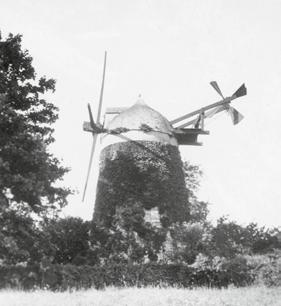
Además de estos molinos hay mención de Merry Mill, Sandy Hook Mill, Hedges Mill (un molino de rejilla), Chelfield Mill, Derby Mill y Dominy Mill. Evidentemente, el municipio era un importante centro de molienda en ese momento. ¡Se registra que una fábrica en Hash Amonock fue vendida en 1788 por 21 libras!



La Colección de
The Gardiner Mill, one of the three remaining, stands on the site on the east side of Main Street Burying Ground, where it was built in 1771. It is in the grounds of the original mill house, now enlarged and owned by Mr Lion Gardiner, a descendant of the Mr Lyon Gardiner who had it built, and the mill is maintained in working order. Notes made by John Lyon Gardiner for whom Gardiner’s Island Mill was built have survived in MSS, and from them we learn that the mill was erected on Monday, May 23rd, 1795 by Nathaniel Dominy Junr and others and cost $773 or £309.7.0. It still stands in working order on its original site by the shore.
The Hook Mill was built in 1796 by Nathaniel Dominy, the timber for it being got on Gardiner’s Island. It was last run in 1907, and in 1920 was purchased by the village as part of a War memorial and repaired. It gets its name from the low tract of land at the east end of the Main Street on which it stands. It is in excellent condition.
28 | Julio 2022 - Milling and Grain
The Pantigo Mill was built, or more probably rebuilt, in 1771 on an artificial mound on the village green. In 1850 it was purchased by Mr Felix Dominy’s father, who moved it on to his land on the Panitigo – Amagamsett road. In 1915 it was bought by Mr George N Buck who had it removed to the garden of the cottage made famous by John Howard Payne as ‘Home Sweet Home.’ He had it repaired and used as a museum and on his death left house, mill and grounds to the village of East Hampton.

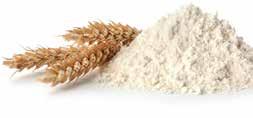


A HAVER & BOECKER Company OUR ROTO-PACKER® In comparison to conventional inline packers the filling spouts of the ROTO-PACKER® are mounted on a rotating machine frame.
Phone: +49 251 9796 252 E-mail: sales@behnbates.com
Milling and Grain - Julio 2022 | 29 Milling News
Contact:
www.behnbates.com
La crisis del aceite vegetal en Egipto
Con el estallido de la guerra entre Rusia y Ucrania el 24 de febrero de 2022, la crisis de seguridad alimentaria de Egipto representa ahora una amenaza para su economía. El Cairo depende de grandes volúmenes de importaciones fuertemente subvencionadas para garantizar suministros suficientes y asequibles de pan y aceite vegetal para sus 105 millones de ciudadanos. La obtención de esos suministros ha llevado a Egipto a convertirse en el mayor importador mundial de trigo y en uno de los 10 principales importadores mundiales de aceite de girasol.
by Dr Mahmoud Riyad, Secretary-General, Egyptian Milling Association, Egypt

La guerra entre Rusia y Ucrania catapultó los precios a niveles insostenibles para Egipto, aumentando el precio del trigo en un 44% adicional y el del aceite de girasol en un 32% prácticamente de la noche a la mañana. Aún más problemática, la guerra también amenaza el propio suministro físico de Egipto, ya que el 85% de su trigo procede de Rusia y Ucrania, al igual que el 73% de su aceite de girasol.

Con la actividad en los puertos ucranianos totalmente paralizada, Egipto ya necesita encontrar proveedores alternativos. Una nueva escalada que detenga todas las exportaciones del Mar Negro también podría sacar los suministros rusos del mercado con un efecto catastrófico.
Además del pan, la guerra entre Rusia y Ucrania ha comenzado a perturbar el suministro de Egipto de aceite de semillas de girasol, el principal aceite vegetal del país junto con el aceite de soya. El gobierno importa el 95% de su aceite vegetal y ofrece a los consumidores egipcios una mezcla altamente subvencionada de aceite de girasol y aceite de soya.
El USDA pronostica que el consumo de aceite de girasol de Egipto en el año 2021/22 alcanzará las 355.000 toneladas métricas (TM), de las cuales 350.000 toneladas métricas o el 98,6% serán suministradas por las importaciones. Ucrania y Rusia son los principales exportadores del mundo y representan colectivamente más de las tres cuartas partes de la oferta mundial de exportación de aceite de girasol.
En 2020, Egipto importó el 54,4% de su suministro de aceite de girasol de Ucrania y el 18,83% de Rusia. El 28 de febrero,
el aceite de girasol ucraniano fue evaluado en US$1.950,50 por TM, hasta US$470,50 frente al precio previo a la guerra de US$1.480 por TM del 23 de febrero de 2022. Ese precio era para aquellos que realmente podían adquirir un envío para la entrega física. La empresa de información de precios de las materias primas Platts ha puesto en pausa las evaluaciones del aceite de girasol del Mar Negro desde el 23 de febrero de este año.
Como Ucrania y Rusia son los exportadores dominantes, Egipto no puede encontrar fácilmente proveedores de reemplazo. Tampoco puede aumentar fácilmente el volumen de aceite de soya, ya que los productores Argentina, Brasil y Paraguay experimentarán un déficit de producción de soya de 9,5 millones de toneladas debido a las insuficientes precipitaciones en las regiones productoras de América del Sur.
El mercado mundial de aceites vegetales ya había sido testigo de una tormenta perfecta de precios en alza del petróleo en 2021. Al 1 de junio de 2021, Egipto aumentó el precio de los aceites vegetales no mezclados subvencionados en un 23,5%, mientras que la botella de un litro de aceite mezclado de soya y girasol fue sustituida por una botella de 800 ml al mismo precio, equivalente a una reducción del 20%.
Si bien la reducción de las subvenciones fue útil para combatir la ola de inflación mundial de los alimentos por petróleo de 2021, la guerra entre Rusia y Ucrania de principios de 2022 ha convertido esa ola en un tsunami de picos de precios, a medida que los países luchan por encontrar alternativas al aceite de girasol.
En enero de 2022, Indonesia, que produce el 58% de la oferta mundial de aceite de palma, impuso fuertes límites a las exportaciones para reducir sus propios crecientes precios internos del aceite de cocina debido a los aumentos de 2021.
Malasia, el próximo mayor productor de aceite de palma con un 26% de la producción mundial, experimentó una producción de aceite de palma más baja y no podrá hacer frente a la mayor demanda de las naciones que buscan un sustituto para el aceite de girasol, lo que deja a Egipto aún enfrentándose a una crisis de aceite vegetal.
Milling News 30 | Julio 2022 - Milling and Grain

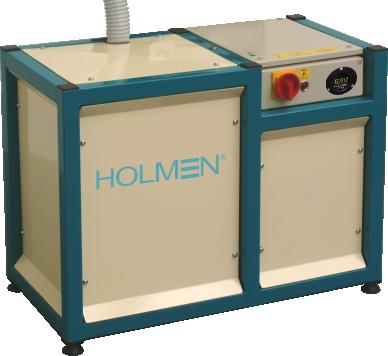

TEK / SALES / AD VERTISING/Q3/2022OFFER We reserve the right to alter these specifications without prior written notice Email: info@tekpro.com Tel: +44 (0) 1692 403403 TekPro Ltd - Willow Park - North Walsham - Norfolk - NR28 0BD - UK *Place your order for an NHP300 Inline Pellet Durability Tester between 1st July 2022 and September 30th 2022 and receive your first Inline Sampler Absolutely FREE!^ Samplex IL50 NHP300 Inline Pellet Durability Tester Order This Get This Included for Free* ^Offer is valid for all customers on presentation of this voucher at the time of order only. No monetary equivalent value offered. A single Samplex IL50 will be included in the packing case with each Holmen NHP300 Ordered. Order and deposit must be received by TekPro before 30th September 2022 to qualify Not valid for use with any other offers or promotions. TekPro reserves the right to withdraw or limit this offer Samplex IL50 Inline sampler 8320010722300922
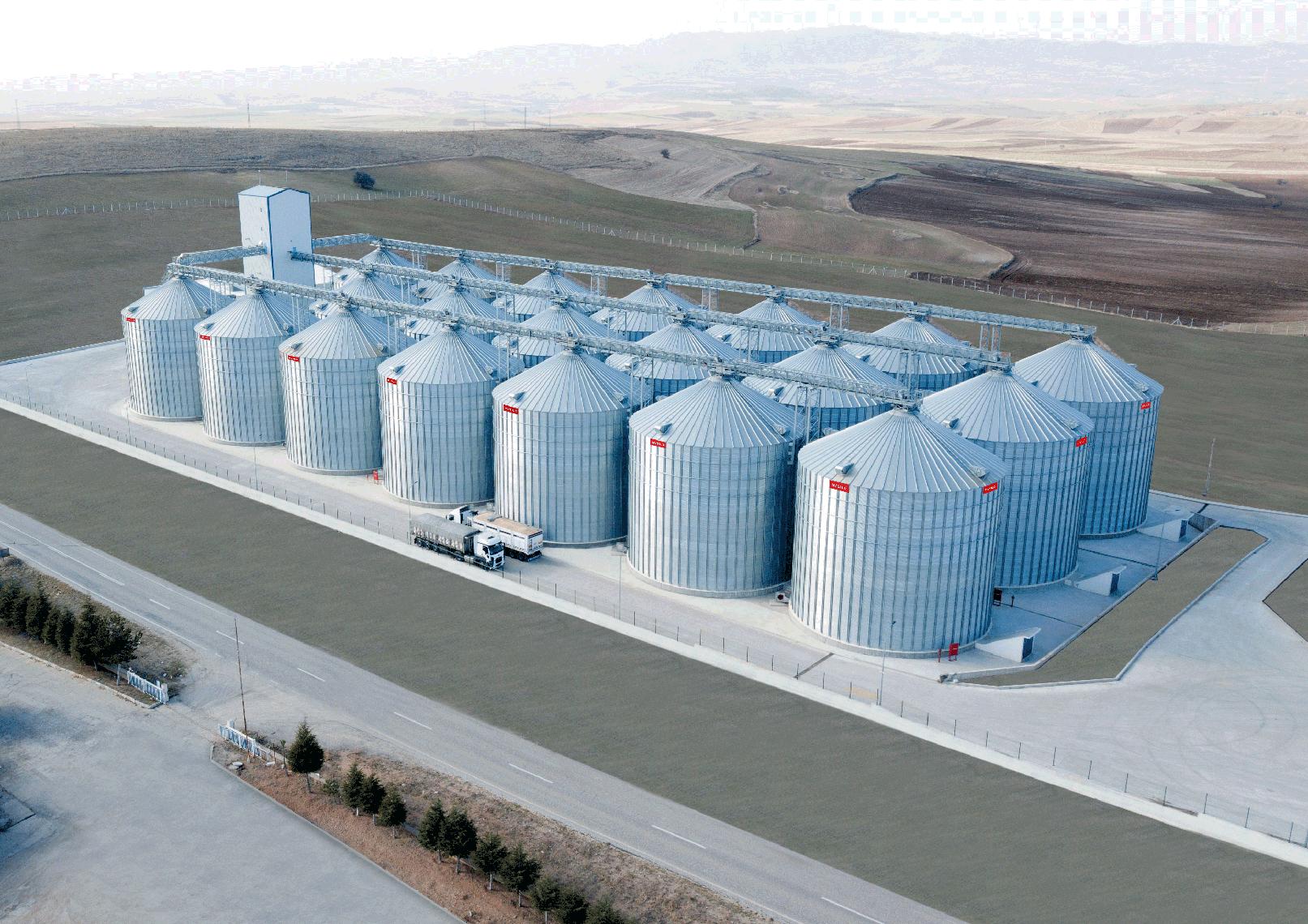


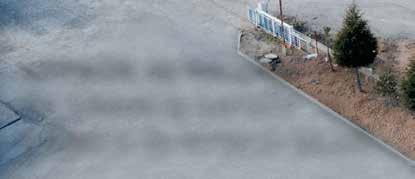
CONTINENTS more COUNTRIES than 5 80’ APPROX 40 MILLION TONS OF GRAIN IS SAFELY STORED IN MYSiLO SILOS.




more more CUSTOMERS PROJECTS than than 2000’ 2500’ HAPPY WITH MYSiLO GRAINS MYSiLO GRAIN STORAGE SYSTEMS INC.CO. Erenler OSB Mah. R. T. Erdoğan Blv. No: 30 Aksaray / TURKEY info@mysilo.com | www.mysilo.com | +90 382 266 22 45

Online Aquafeed Production School

El tamaño del mercado mundial de la acuacultura se valoró en 285.359,7 millones de dólares EE.UU. En 2019, y se prevé que alcance los 378.005,5 millones de dólares EE.UU. En 2027, registrando un CAGR del 5,8 por ciento en sólo ocho años.
Con este crecimiento se presenta una gran oportunidad, razón por la cual ahora es más importante que nunca que los profesionales de la industria de piensos puedan obtener la procedencia de sus conocimientos especializados pertinentes, lo que convierte a este en el mejor momento para «asegurar» su CV añadiendo una cualificación específica del sector reconocida a nivel mundial.
En la primavera de 2022 se produjo el esperado regreso del curso Online Aquafeed Production School para su edición de primavera de 2022, con una nueva serie de emisiones en línea mejoradas y actualizadas.
Desarrollada y presentada en colaboración por Progressus Agrischools y Perendale Publishers Limited, la serie siempre fiable está diseñada para ayudar a los asistentes a comprender el diseño, desarrollo y operación de una planta de producción de piensos.
Este objetivo se alcanza con un nivel admirable a través de doce sesiones semanales de dos horas de duración en las que participan expertos del sector que comparten sus amplios conocimientos sobre los ingredientes de los piensos, el equipo utilizado, así como proporcionar una revisión nutricional general. A continuación, se realiza una sesión de preguntas y respuestas, que permite a los participantes interactuar en directo con los facilitadores del programa.
Entre estos operadores del sector, cuidadosamente seleccionados y con experiencia, que poseen siglos de servicios de primera línea combinados entre ellos, se incluye a Joe Kearns, que solo ha ocupado décadas cargos directivos en Wenger Manufacturing.
Una mezcla única de sabiduría y fiabilidad
En la edición de primavera de 2022 de Online Aquafeed Production School, el Sr. Kearns asume el papel de presentador principal, un papel que sin duda desempeñará con el mismo nivel de profesionalidad que le ha llevado a ganarse una sólida reputación a lo largo de su carrera por su sabiduría y fiabilidad.
La Escuela de Producción de Aquafeed en línea permitirá a las personas interesadas comprender las posibilidades y los
desarrollos a lo largo del tiempo con respecto a lo que se puede producir, así como examinar cómo todos los aspectos del proceso interactúan para lograr y mantener un estándar exitoso de producción de aquafeed.
Básicamente, hay cuatro áreas de importancia para la producción de alimentos acuícolas: los ingredientes, el equipo usado, cómo se opera, y las especificaciones finales deseadas del producto. Todos los aspectos interactúan como cada uno afecta al otro como el nutricionista hace la fórmula, las ventas o los clientes definen el producto final deseado mientras que la producción necesita funcionar eficientemente.
La comunicación entre estas áreas y las interacciones entre ellas incrementarán enormemente las posibilidades de producir resultados positivos, incluyendo excelente alimento acuático producido con márgenes aceptables.
Resumen de las sesiones 3 y 4
La tercera sesión de esta nueva serie titulada “Contenedores, lotes y mezclas de ingredientes” se divide en cuatro secciones; Revisión detallada de la manipulación de ingredientes – Parte 2, Consideraciones sobre el almacenamiento de ingredientes vegetales, solución de problemas: Cilindro de extrusión y troqueles de extrusión: Troqueles y situaciones que se relacionan con el troquel y la cuchilla.
En la primera sección de este episodio, Giuseppe R Bigliani, el ejecutivo de cuentas internacionales de AG Growth International - AGI, líder mundial en la planificación, ingeniería y fabricación de soluciones integrales, presenta la segunda entrega de la detallada revisión de la manipulación de ingredientes.
El Sr. Bigliani aborda una serie de temas relevantes, como la dosificación, el procesamiento por lotes y la mezcla, y afirma que incluso el mezclador más eficiente no puede producir una mezcla homogénea si los componentes varían demasiado en granulación y peso específico.
A continuación, Joe Kearns analiza las consideraciones sobre el almacenamiento de ingredientes en planta antes de presentar su última entrega sobre solución de problemas de extrusión, que en esta sesión analiza los barriles de extrusión.
En la cuarta y última sección de esta sesión, antes de que concluya con la sesión de preguntas y respuestas, el Sr. Kearns presenta una sección titulada «Troqueles de extrusión –troqueles y situación relacionados con el troquel y el cuchillo»,
Milling and Grain - Julio 2022 | 35 CAPACITACIÓN Mill
Utilizando el martillo de los conocimientos adquiridos para romper el techo de cristal de la subcalificación
una presentación que abarca lo que puede bloquear un troquel, la densidad cambia a medida que cambia el troquel y por qué la distancia adecuada entre la cara de la cuchilla y el troquel es tan crítica.
La sesión de este último lote de sesiones de la Online Aquafeed Production School se centra en el rectificado y la micropulverización. Incluye una presentación titulada Hammermills, RollerMills, Micropulverizers, de Joe Kearns, favorito de OMS, seguida de Detalles sobre el rectificado fino, por Michel Bauer Pereira, Director de aplicaciones globales – Extrusión, Andritz F&B.


En la presentación final de la cuarta sesión de esta serie, Thomas Runde, director ejecutivo y director de ventas de Tietjen Verfahrenstechnik GmbH, presenta una presentación titulada «Molinillo ultra fino con Tietjen – Soluciones y servicio» que examina todas las cosas del rectificado fino, incluidos los conceptos básicos del rectificado, el servicio, además de echar un vistazo a conceptos y máquinas.
Esta presentación concluye con el Sr. Runde que el mantenimiento reactivo no es una opción. La combinación del mantenimiento preventivo, basado en condiciones y predictivo es clave, mientras que el programa de mantenimiento individual debe considerar todos los conceptos, basándose en los datos y el coste/tiempo.

No es demasiado tarde para inscribirse
Aunque esta temporada ya ha comenzado, todas las sesiones están disponibles a petición durante dos semanas después de la emisión final, con esta opción incluida para todos los asistentes sin coste adicional.
La Online Aquafeed Production School funciona todos los martes,
del 19 de abril al 12 de julio, a las 2pm h (hora de Bangkok) y a las 9am h (hora central). Para los residentes en Estados Unidos y América Latina, las sesiones comienzan el 21 de abril y concluyen el 15 de julio de 9am, hora de Chicago.

La certificación del curso es muy beneficiosa para el lugar de trabajo, ya que indica el interés de los asistentes en el sector y demuestra una adquisición de los conocimientos que han adquirido al asistir al programa.
Para inscribirse en el curso de la Online Aquafeed Production School, visite https://aqfeed.info/e/1393 para obtener más información.
TRAINING Mill Experts in Smart Industry Solutions for Feed Production Fully automated process control from order to product High quality product output with less operator actions Interaction with ERP, Formulation and warehouse software Track & Trace and Contamination module included Reporting services & KPI Dashboarding Turnkey projects including MCC cabinets, IT equipment and Fieldinstallation 24/7 remote support keeps you feedmill up & running Scan the QR-Code for more information www.inteqnion.com Visit us at Victam International, Utrecht - The Netherlands, Booth 1.432 36 | Julio 2022 - Milling and Grain


C O S T E F F E C T I V E Spread over the study year, the cost of a module is less
£12 a week T I M E E F F I C I E N T I N D U S T R Y E X P E R T I S E Study increases competence thereby freeing up your time All students are allocated a tutor with a wealth of specialist knowledge Distance learning Distance learning PROGRAMME We will be seeking enrolments from June ... . . . F I N D O U T I F S T U D Y W I T H U S I S R I G H T F O R Y O U A N D Y O U R T E A M W E ' R E H E R E T O H E L P - F I N D O U T M O R E O N L I N E O R E M A I L U S : W W W . U K F L O U R M I L L E R S . O R G | T R A I N I N G @ U K F L O U R M I L L E R S . O R G
than
Julio 2022
En esta edición de la revista Milling and Grain, hemos dedicado nuestra sección Enfoque de Producto a mostrar toda una gama de productos vistos en VIV Europe y Victam International, que se ubicaron este año en los Países Bajos. Durante nuestra asistencia, hemos reconocido que, con el fin de hacer frente a los nuevos retos, la innovación en el sector alimentario sigue creciendo y evolucionando. Con esto en mente, creemos que para reflejar esto correctamente en nuestra revista, incluiríamos una página doble dedicada a cada programa. En esta nota, le animamos a leer y esperamos que disfrute de nuestro informe en la página X, donde podrá encontrar más información sobre las dos exposiciones. Si tiene un nuevo producto o servicio que le gustaría incluir en esta página en una futura edición de nuestra revista, asegúrese de ponerse en contacto con nosotros en e ditorial@perendale.co.uk.
Cangilones elevadores Jumbo CC-S de 4B
El Jumbo CC-S es una versión de servicio ultra pesado del cangilón elevador CC-S de servicio pesado y forma parte de la gama de cangilones de alta eficiencia. Fabricado en HDPE virgen, el cubo ofrece resistencia y durabilidad de servicio pesado. Está diseñado para aplicaciones severas, incluidos terminales de puerto, plantas de etanol y materiales abrasivos. Dispone de un reborde frontal grueso, esquinas y paredes, y están diseñadas para que se puedan montar en una proyección nominal de menos de una pulgada para aumentar la capacidad.
La parte frontal de Iceberg Edge ofrece resistencia a impactos y una larga vida útil, compartiendo las características de diseño del CC-S, al tiempo que incluye la ventaja de la capacidad de almacenamiento, lo que permite ahorrar en costes de transporte y espacio de almacenamiento. Sus principales ventajas son su resistencia y flexibilidad, y ofrecen un diseño apilable para un transporte y almacenamiento eficientes, y un fondo cónico para una separación vertical más estrecha.
go4b.co.uk
Sistema de dosificación Magi-con de Dinnissen
En reconocimiento a los retos a los que se enfrentan los fabricantes de piensos, el sistema de dosificación Magi-con de Dinnissen permite una producción flexible de una amplia gama de piensos en pequeñas y grandes cantidades en la fábrica.
El alimento se toma en un ambiente de vacío y se rocía con dosificación de precisión, seguido por los micro-ingredientes que se succionan profundamente en el grano a través del vacío. Esto es para protegerlos de que se desmoronen al mismo tiempo. Después de lo cual se aplica una fina capa de grasa, para hacer el material más elástico y asegurarse de que se rompe o se desmenuza menos rápidamente.
Al hacerlo, el sistema permite altos valores de energía en el alimento y la prevención de la contaminación. Los microingredientes se pueden dosificar en forma líquida o en polvo con la máxima precisión, para ahorrar costos.
Pesadora multicabezal serie RV de Ishida
El RV proporciona al operador una alta velocidad y un rendimiento de pesaje con varias cabezas de alta precisión, además del apoyo de expertos en pesaje con varias cabezas para productos alimenticios.
La báscula ofrece hasta un 100% de eficiencia, midiendo altas velocidades y niveles de precisión. Entre sus ventajas se incluyen el aumento del ritmo de producción y la vibración antisuelo para mejorar el flujo de productos incluso en aplicaciones pegajosas, con su diseño resistente al agua, fiable y robusto, que confirma que está diseñado para durar.
La serie RV se puede adaptar para incluir tolvas de hasta siete litros de tamaño, para aplicaciones en patatas y frutas grandes. Las capacidades oscilan entre 0,05 y siete litros, con hasta 400 ponderaciones por minuto.
Su diseño resistente al agua cuenta con un índice de protección IP69K para reconocer la protección contra el polvo, las altas temperaturas y el agua a alta presión.
www.ishidaeurope.com
Feedhopper de Eurosilos SIRP


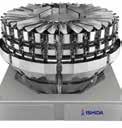

Adecuada para aplicaciones en ganadería, agricultura e industria, la nueva línea de alimentadores con un contenedor de carga de fibra de vidrio y tapa superior se ha diseñado para garantizar la máxima integridad y un almacenamiento correcto de los alimentos.

Diseñado para su uso con granos, pellets y otros materiales, gracias a su estructura autosoportable de dos semicascaras de fibra de vidrio, el Feedhopper protege el aislamiento del contenido y tiene una capacidad total de 7m3.
Sus características incluyen una tapa superior de fibra de vidrio blanca redondeada para la conservación del alimento, cabrestante de apertura lateral para operaciones de carga y cuatro patas de soporte con tirantes, mientras que también tiene una parte inferior compatible con todos los productos de descarga inferior de Eurosilos SIRP.


Este producto se puede equipar con una tira graduada para mantener el nivel de alimento almacenado bajo control.
www.eurosilos.it
Imán de polo externo automático de Goudsmit Magnetics
El imán automático de polos externo, desarrollado recientemente por Goudsmit Magnetics de Waalre, es adecuado para procesar grandes capacidades de alimentos y productos a granel. El imán que se muestra en el stand Victam 1351 puede utilizarse para la admisión en instalaciones de descarga de buques y sirve para proteger la maquinaria.
Dos potentes imanes de captura están montados en el exterior de la carcasa completamente lisa y, dependiendo de la versión, separan partículas de hierro gruesas o muy finas de diversos flujos de material. El imán del núcleo exterior está equipado con imanes de neodimiohierro-boro (NdFeB) para montaje en líneas de caída libre. Una ventaja de este conjunto de núcleo exterior es que no se pueden producir puentes ni obstrucciones en el interior del material. Dado que la caja de válvulas está totalmente integrada en el diseño, la altura de instalación sigue siendo limitada.
El imán de polo externo está disponible en varias versiones hasta una entrada/salida de 300 x 1.000 mm. Es adecuado para grandes capacidades de hasta 200 m3 GB/hora.
www.goudsmitmagnets.com
ENFOQUE DE PRODUCTO
mymag.info/e/844 mymag.info/e/1468
www.dinnissen.eu 38 | Julio 2022 - Milling and Grain


ENFOQUE ESPECIAL
El grupo tecnológico suizo de molienda The Bühler Group ha lanzado su último clasificador óptico para trigo, centeno, avena, granos, café y legumbres: El Sortex H SpectraVision. Con la tecnología de los nuevos algoritmos de clasificación MerlinAi, la solución lleva la clasificación óptica a un nuevo nivel de usabilidad, rendimiento y trazabilidad del producto.


Utilizando los mejores conocimientos técnicos de ingeniería británicos y suizos, la Sortex H SpectraVision es el resultado de los 75 años de experiencia de Bühler en la clasificación óptica. Ofrece tres ventajas clave para los clientes: Facilidad de uso sin igual, alto rendimiento y conectividad mejorada, lo que contribuye a una mayor sostenibilidad.
Los procesadores de hoy deben abordar un número cada vez mayor de defectos como resultado del cambio climático y la reducción de pesticidas. Con su control individual de eliminación de defectos, esta máquina permite a los procesadores mantener la calidad de clasificación con facilidad. El Sortex H también ofrece concentraciones de rechazo hasta un 50% superiores.
El suministro de rendimientos máximos está en línea con el objetivo de Bühler de reducir la energía, los residuos y el agua hasta en un 50 por ciento en las cadenas de valor de sus clientes para 2025 y desarrollar soluciones sostenibles para alimentar a la población mundial de 10 mil millones de dólares para 2050.
Además, la conectividad mejorada aumenta el valor de los procesadores. Se pueden descargar más de 500 puntos de datos cada segundo y enviarlos a Bühler Insights para optimizar y realizar un seguimiento del rendimiento.
Los procesadores pueden supervisar y controlar el rendimiento de sus máquinas desde cualquier parte del mundo, de acuerdo con los estándares de la Industria 4,0. También es posible realizar un seguimiento en tiempo real del rendimiento de la clasificación y las advertencias de emergencia gracias al sistema de monitorización Sortex.
MerlinAi: Innovación, no magia Sortex H SpectraVision, capaz de gestionar una amplia gama de aplicaciones, entre las que se incluyen: Trigo, centeno, avena, granos, café y legumbres, Funciona con los nuevos algoritmos de clasificación MerlinAi. “MerlinAi es el nuevo cerebro de las máquinas de clasificación óptica Sortex de Bühler”, afirma Melvyn Penna, Jefe de Producto de Bühler.
“Sus avanzados algoritmos de ordenación multicapa garantizan un rendimiento consistentemente mayor para los procesadores, ya que se pierde un producto menos bueno en el flujo de rechazo”.
SORTEX H SpectraVision
Una reducción superior de defectos significa que la calidad aceptable puede satisfacerse incluso con material de entrada de menor calidad. “Estos nuevos algoritmos de calibración y seguimiento del producto garantizan que el rendimiento de la máquina se mantenga constante y alto, lo que proporciona a los procesadores una mayor flexibilidad”, añade Mr Penna.
Un sello de aprobación del cliente
Un cliente que ha estado disfrutando de las ventajas de Sortex H SpectraVision es Harivenasa. Como la primera fábrica de avena de España, la empresa se especializa en la producción y suministro de avena de alta calidad y otros productos a base de cereales, manteniendo la filosofía de que la buena salud se puede lograr disfrutando de la vida y la comida.
Harivenasa instaló el año pasado una máquina Sortex H SpectraVision de siete módulos en su flamante fábrica de avena. “Estamos muy satisfechos con el Sortex H porque es muy eficiente, aumenta nuestra productividad y ahora obtenemos una calidad mucho mejor que antes en cuanto a granos sin descascarar, defectos, manchas negras, etc.”, afirma Alberto Loizate, Director Gerente de Harivenasa, Alea.

Desde la instalación de la máquina, Harivenasa ha experimentado una mejora en la calidad de su avena y ahora está buscando entrar en nuevos mercados en nuevos países.
La facilidad de uso es también una ventaja importante. “Nuestro personal dice que es mucho más fácil navegar por el software y realizar el mantenimiento de la máquina. También nos dicen que es más fácil cambiar los parámetros. En resumen, el Sortex H hace que sus vidas sean mucho más fáciles”, dice Loizate.
“El retorno de la inversión también será muy corto. Ya hemos visto una gran calidad con un rechazo muy bajo del producto. El clasificador tiene muchas características completamente nuevas y funciona con las últimas conexiones remotas y conocimientos Bühler. Con Bühler Insights, la máquina está lista para el futuro”, añade.
La Sortex H SpectraVision, que se fabrica y valida en las instalaciones de Bühler en Londres, se ha instalado en numerosas instalaciones de clientes de todo el mundo y está disponible para su compra en todo el mundo. Está disponible con hasta siete tolvas. Se presentó a los procesadores durante una serie de seminarios web específicos de aplicaciones y regiones durante los últimos dos meses.
También fue exhibido en el Congreso Mundial de Semillas ISF de este año en Barcelona, así como en la IAOM en América del Norte e IPACK-IMA en Milán, donde recibió una gran respuesta.
FOCUS
mymag.info/e/1467 www.buhlergroup.com Milling and Grain - Julio 2022 | 41


www.ai-lati.eu



Let
www.paglierani.com www.ocrim.com
’ s w a l k t o g e th e r i nto a n e w E r a
Bühler Networking Days 2022

En una demostración del compromiso de las empresas de estar a la vanguardia de la lucha contra la crisis climática para proteger y restaurar la naturaleza y la biodiversidad, Y para cerrar la brecha en la distribución de la riqueza, 1000 representantes de las empresas líderes del mundo de 95 países se reunieron esta semana en Uzwil en la sede global del Grupo Bühler para discutir la necesidad urgente de que las empresas se unan para acelerar la transición hacia la sostenibilidad. Representando a empresas que entre ellas alimentan a cuatro mil millones de la población mundial y que mueven dos mil millones, los delegados que asistieron al evento Bühler Networking Days 2022 del 27 al 28 de junio, escucharon a destacados académicos, líderes empresariales, empresarios e innovadores sobre cómo las empresas pueden hacer frente mejor a los desafíos globales de hoy en día.
¿Cómo podemos permitir que 10 millones de personas (para 2050) vivan una buena vida dentro de los límites de nuestro planeta?
Esa es la pregunta que Bühler realizó en Uzwil, Suiza (a finales de junio) en 2022 días de trabajo en red, planteó a más de 1000 tomadores de decisiones invitados que representaban a los sectores de alimentación, piensos y movilidad bajo el tema: «Acelerar el impacto juntos»
Este evento único fue creado por primera vez por Bühler en 2016 y se celebra cada tres años presentando ponencias, paneles y demostraciones tecnológicas con un enfoque en el liderazgo, la tecnología, la educación, la inspiración y la acción más allá de las fronteras internacionales de la industria.
Destaca ejemplos de empresas que ofrecen un impacto tangible en la mitigación del cambio climático, la erradicación de la pobreza, la creación de empleo, la protección y restauración de la naturaleza y la mejora de la seguridad alimentaria.
“La industria global tiene excelentes ejemplos de empresas que son altamente responsables, aplicando tecnologías innovadoras en el centro de su transformación y, a través de ello, volviéndose económicamente más saludables y abordando la sostenibilidad al mismo tiempo”, afirma Stefan Scheiber, director ejecutivo de Bühler.
“De hecho, a pesar de todos los desafíos a los que nos enfrentamos –desde el cambio climático hasta la inseguridad alimentaria y energética, pasando por los problemas de la cadena de suministro y las perturbaciones sociales, pasando por las guerras–, estoy convencido de que podemos cambiar las cosas.
“Las tecnologías innovadoras ofrecen muchas oportunidades de negocio cuando también abordan cuestiones de
Una plataforma de colaboración excepcional para compartir, aprender, establecer contactos y proporcionar impacto e inspiración
Por Roger Gilbert, Editor, Milling and Grain con el apoyo del Equipo de Comunicaciones de Bühler
F 44 | Julio 2022 - Milling and Grain
sostenibilidad. No debemos avergonzarnos de aprovechar estas oportunidades”.
Se destacaron las soluciones de empresas globales, emprendedores extraordinarios, nuevas empresas, instituciones académicas y ONG, todo ello ilustrando que las soluciones a los desafíos globales se pueden encontrar y ofrecer a escala.

Las jornadas de trabajo en red crean una plataforma excepcional para compartir, aprender, establecer redes, colaborar, asociarse y, lo que es más importante, crear un impacto positivo.
Uso de tecnologías probadas
Los ejemplos tangibles de empresas que equilibran la naturaleza, la humanidad y la economía en sus decisiones se comparten en los días de Networking.
Entre los asistentes se incluyen: Una empresa de café de Noruega, que reduce las emisiones de CO2e en un 85 por ciento en sus nuevas instalaciones; un empresario de Angola, que ha construido un gigantesco complejo alimentario industrial como primer paso para proporcionar una seguridad alimentaria autosuficiente en todo su país; Un fabricante de baterías en el Reino Unido que está construyendo la primera Gigaplant de Europa con nuevos procesos de mezcla, reduciendo los residuos en el proceso de producción en un 80 por ciento y un miller en la India que está fabricando tortillas en una planta que reduce el consumo de agua en un 84 por ciento y elimina las aguas residuales.
Muchas otras empresas participantes ya están transformando su sistema alimentario con proteínas vegetales suministradas de forma sostenible.
Reconociendo que ninguna entidad, un país, una empresa o un individuo, tiene los recursos, los conocimientos o el alcance para abordar los desafíos globales a los que nos enfrentamos, Bühler ha establecido sus jornadas de trabajo en red para reunir y alimentar su creciente ecosistema global de socios.
“Necesitamos una colaboración masiva entre la industria, las nuevas empresas, el mundo académico, los educadores, la política, Las ONG y el público para manejar y limitar los efectos del cambio climático, la pérdida de biodiversidad y la eliminación de la pobreza”, dice el director de tecnología de la Bühler Ian Roberts.“We need massive collaboration among industry, start-ups, academia, educators, politics, NGOs and the public to manage and limit the effects of climate change, loss of biodiversity, and eliminate poverty,” says Bühler CTO Ian Roberts.
Milling and Grain - Julio 2022 | 45 F
Levantándonos para afrontar juntos los desafíos globales
A pesar de que las empresas se enfrentan recientemente a una miríada de obstáculos, los ejemplos de la investigación de vacunas, los avances en la digitalización y el desarrollo de la comunicación a escala durante el cierre demostraron la capacidad de las empresas para hacer frente a los desafíos globales cuando era necesario.
“Hemos experimentado el poder de la ciencia y la innovación con industrias que colaboran a una nueva escala”, afirma Stefan Scheiber, director general del Grupo Bühler.


“En nuestras industrias –en la nutrición animal, la alimentación y la movilidad– la tasa de innovación nunca ha sido tan alta como la actual, lo que crea impacto porque necesitamos nuevas tecnologías y una colaboración amplia para afrontar nuevos retos, y al mismo tiempo asegurar el futuro de nuestros negocios de una manera responsable. Necesitamos tecnologías, necesitamos colaboración y liderazgo responsable para dar forma al futuro”.
Impacto a través del propósito Ranjay Gulati, profesor de Harvard de Administración de Empresas, y autor de “Profundo: El corazón y el alma de las empresas de alto rendimiento”, advirtió a los líderes de las empresas que no se enredaran en métricas complejas en torno al medio ambiente, la gestión social y de gobierno (ESG) y la responsabilidad social corporativa (CSR) cuando las empresas logran un mayor impacto al tener un objetivo social claramente articulado.
“La primera manera en que el propósito puede acelerar el impacto es proporcionando dirección”, explicó el profesor Gulati. “Propósito crea una brújula y un marco orientado alrededor de donde usted se dirige en tiempos turbulentos cuando tiene muchas cosas a su
alrededor”.
Añadió que centrarse en el propósito social también motiva e inspira a los empleados, mientras que una motivación empresarial claramente expresada a menudo proporciona claridad y orientación útiles a los socios comerciales. Gulati cita a Bühler en su libro sobre Profundo como un ejemplo de una compañía que ha adoptado con éxito este enfoque.
Una vez que se decide un propósito social, debe ser explicado adecuadamente a todos los interesados tanto interna como externamente, de modo que se convierta en parte del ADN corporativo y pueda expresarse en todas las acciones de una compañía.
El papel del liderazgo
En una sesión sobre la necesidad de un buen liderazgo empresarial para mitigar el cambio climático, Satya Nadella, director ejecutivo de Microsoft, dijo que en tiempos de incertidumbre las cualidades de liderazgo se podían diluir en tres atributos clave: Dijo a los delegados que, al evaluar a los futuros líderes de Microsoft, buscaba su capacidad para generar energía, ofrecer resultados bajo limitaciones y crear claridad cuando no existía ninguna.
“Vivimos en un mundo complejo e incierto, siempre habrá ambigüedad en nuestro trabajo, los verdaderos líderes siempre traen claridad y hacen un llamado incluso en tiempos inciertos”, dijo Nadella.
Christian Klein, director ejecutivo de SAP, la multinacional alemana de software con más de 400.000 clientes en todo el mundo, habló en la misma sesión de la necesidad de que los líderes comprendan a fondo su sector y negocio, especialmente en lo que se refiere a la complejidad de

46 | Julio 2022 - Milling and Grain F
Burkhard Böndel, Head of Corporate Communications at Bühler explains the future of sustainable milling - where all aspects are located on one site from flour, pasta, rice, feed, aqua and other milling processes take place alongside a canal which supplies raw materials in volume to attending journalists
•
•
CAROUSEL
STATEC BINDER GmbH Industriestrasse 32, 8200 Gleisdorf, Austria Tel.: +43 3112 38580-0, office@statec-binder.com

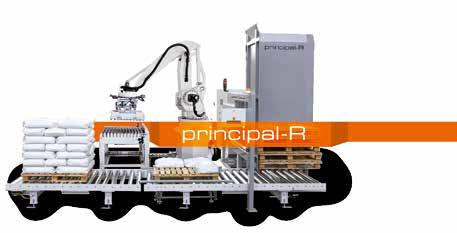

ASSOCIATION AEMIC 66 rue la Boétie – 75008 PARIS Tél. : +33 (0)1 47 07 20 69 - Email : luna@aemic.com - Site web : http://www.aemic.com #I’COMINGTOJTIC2022
Each year, aEMIc organises a unique 2-day event: thE tEchnIcal Days of thE cErEal InDustrIEs WEDNESDAY & ThurSDAY 12/13 octoBEr 2022 pAlAIS DES CONGrES DIJON 6 conferences 70 exposants network Palais des Congres dijon 12 & 13 october 2022 ème technical and economic 72eme exhibition at the service of professionals in the cereal industry french and international professionals in the sector young
job
market-oriented professionals Your specialist for BAGGING & PALLETIZING Solutions for the efficient packaging and palletizing
contact : luna@aemic.com clarisse@aemic.com
graduates,
seekers,
continuously
filled bag
rotating carousel for a well
precision
packaging and palletizing
highest
in
dedicated to find the perfect solution for your requirements
reliable partner for the packaging of your products
• our bagging & palletizing specialists are
STATEC BINDER stands as a strong and
Milling and Grain - Julio 2022 | 47 F
Hy-D



- Builds strength





Broiler Breeders benefit from Hy-D® containing diets have produced more hatching eggs and chicks per hen housed and increased offspring performance, welfare and health. Hy-D® is the safest and most advanced source of vitamin D in the world today.



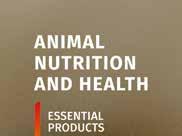



Benefits of using Hy-D ®
®
and increases the number and quality of day-old chicks
Can your Broiler Breeders return more in their lifetime? Adding Hy-D® to the diet increases blood serum level and vitamin D egg deposition. Increased blood serum vitamin D and greater egg deposition increases hatchability, chick bone formation, muscle deposition, early immune response and offspring quality.
Choose strong performance and peace of mind with Hy-D®, the only pure 25 Hydroxy D3 scientifically proven as safe and effective. +10% more chicks per housed hen +2% Egg output Bone strength +2% Hatchability
not us, who? If
now, when? WE MAKE IT POSSIBLE Follow us on: www.dsm.com/anh
If
not
las cadenas de suministro.
“Todos estamos compartiendo datos en las redes sociales todo el tiempo y, sin embargo, cuando se trata de empresas, ¿cuánto entendemos nuestras cadenas de suministro? Estoy convencido de que aquí es donde debemos unirnos para compartir datos y rastrear los flujos de material”, explicó.
“Trazabilidad integral significa que puede pensar en cómo medir la demanda en tiempo real y ajustar su inventario a la materia prima.” Sólo cuando las cadenas de suministro se comprenden plenamente es posible mejorar las normas sobre cuestiones como los derechos humanos y abordar adecuadamente las emisiones de alcance 3, agrega.
Aceleración del impacto con innovación
En un momento histórico, Stephanie Michelsen, cofundadora y codirectora ejecutiva de Jellatech, una empresa de tecnología de vanguardia que produce colágeno y gelatina sin animales en el laboratorio, presentó al evento Networking Days la primera muestra de colágeno sin animales cultivado de forma sostenible que se puede ver fuera de un laboratorio.
Como ingredientes clave para la industria farmacéutica, biomédica y alimentaria, el mercado tiene un valor anual de 8,4 millones de dólares y actualmente depende exclusivamente de subproductos animales.
Para aplausos rapaces, la Sra. Michelsen dijo a los delegados que la agricultura celular tiene el potencial de eliminar todos los daños ambientales causados por la cría de ganado.
“El colágeno y la gelatina son sólo el punto de partida para nosotros, hay tantas otras proteínas interesantes de los animales y de la naturaleza que ahora podemos crecer en un laboratorio”, dijo a los delegados. Jellatech está recaudando fondos para trasladar la tecnología del laboratorio a un piloto y más allá.
El Dr. Christoph Gebald, cofundador y codirector ejecutivo de Climeworks, describió cómo su empresa elimina el CO2 de la atmósfera y lo almacena permanentemente en el terreno para ayudar a revertir el cambio climático.
Lanzada hace 13 años, Climeworks opera ahora la mayor planta del mundo que captura CO2 desde la atmósfera construida en Islandia.
“Esta tecnología ha llegado para quedarse y dentro de 30 años esta industria será muy grande, eliminará el CO2 a nivel de gigatonelada de la atmósfera, y operará sinérgicamente con otras tecnologías de cambio climático como la solar y la eólica”, explicó.
Liderando con el ejemplo
En un movimiento para ayudar a lograr sus propios objetivos de cambio climático para tener soluciones listas para multiplicarse que reduzcan la energía, el desperdicio, Y el agua en un 50 por ciento en las cadenas de valor de sus clientes para 2025, Bühler anunció que había evaluado el impacto de sus diferentes soluciones de procesamiento, en los residuos, la energía, Y el consumo de agua, el uso de la tierra y la huella de CO2e, junto con evaluaciones de cómo los avances tecnológicos impactan en los Objetivos de Desarrollo Sostenible de las Naciones Unidas y los beneficios para la economía circular. “Al evaluar el impacto de nuestras soluciones, podemos empezar a realizar un seguimiento de su impacto acumulativo general”, afirmó Ian Roberts, director de tecnología de Bühler. Una contribución importante es la optimización de la base de activos instalados del sector y Bühler está aprendiendo a supervisar la reducción de la huella de CO2e resultante de los servicios en las instalaciones de sus clientes. Hasta ahora, se han calculado 30.000 toneladas de reducción de CO 2 e acumuladaen sólo 11 de los servicios de Bühler en los procesos de los clientes. “Vamos a ampliar ese cálculo en toda la cartera de servicios para comprender mejor el impacto que podemos reunir en esa huella de CO2e y, a continuación, verificar el cálculo a medida que construimos mejores conjuntos de datos”, afirmó Roberts.
Bühler también está utilizando nuevas soluciones tecnológicas para realizar un seguimiento de las emisiones de CO 2 e evitadas. Roberts
dijo a los delegados que Bühler ahora puede proporcionar un servicio trabajando con los clientes para cuantificar su huella de CO2e. “Podemos realizar evaluaciones de productos y ver dónde se encuentran los puntos conflictivos de procesamiento y crear planes de acción para reducir su huella de CO2e y podemos contar con la certificación externa”, explicó. Holger Feldhege, COO de Bühler, se dirigió a la audiencia y explicó los objetivos internos globales de reducción de CO 2 de Bühler, y cómo se implementarán las acciones definidas en las operaciones de Bühler a través de un programa global que se implementará desde ahora hasta 2030.
Tenemos que hablar de desigualdad
El Presidente y Director Ejecutivo del Consejo Empresarial Mundial para el Desarrollo Sostenible, Peter Bakker, describió los tres mayores desafíos de nuestro tiempo como la emergencia climática, la pérdida de la naturaleza y la creciente desigualdad.
“Creo que la mayoría de ustedes ya tendrán el memo sobre el cambio climático”, dijo a los delegados.
“Yo diría que todavía no se siente cómodo con su papel en lo que se refiere a la desigualdad. Cuando regresemos a esta sala [dentro de tres años] la desigualdad será tan urgente como el cambio climático hoy en día. La sociedad ya no va a soportar grandes diferencias de riqueza con profundas diferencias estructurales en el acceso a las oportunidades”.
Advirtió que había llegado el momento de que las empresas comenzaran a hablar sobre la desigualdad, la transformación del sistema, la necesidad de innovar, el cambio de comportamiento y los flujos financieros.
Impulsar un cambio significativo
Cuando se trata de mejorar la diversidad entre los nuevos empresarios, Izzy Obeng, director ejecutivo de Foundervine, un acelerador de puesta en marcha dedicado a eliminar las barreras sociales y económicas a las que se enfrentan los empresarios de hoy, presentó a la audiencia de Networking Days algunas estadísticas contundentes.
Ella dijo a la conferencia que sólo un centavo de cada euro de financiación de capital de riesgo fue para todos los equipos femeninos en 2020, con 15 centavos en el euro que se destinaron a equipos fundadores de género mixto.
En comparación 84 centavos en el Euro va a todos los equipos fundadores masculinos. Sólo 38 empresarios negros lograron recaudar fondos de capital de riesgo entre 2009 y 2019, lo que representa sólo la mitad del capital total asignado durante los 10 años.
La Sra. Obeng dijo a los delegados que ningún fondo de riesgo dirigido por negros en Europa ha recaudado una importante financiación institucional para invertir en fundadores. Hasta la fecha, Foundervine ha ayudado a más de 5000 líderes del Reino Unido a adquirir las habilidades necesarias para hacer crecer las empresas y aumentar la inversión.
Obeng dijo a los delegados que todo el mundo debía participar en conversaciones sobre diversidad y no sólo sobre los equipos de diversidad e inclusión, añadiendo que las empresas también necesitaban invertir más en sus comunidades locales.
“Como líderes tenemos una oportunidad real de establecer los estándares que dan voz a aquellos que tradicionalmente no han tenido una. Fortalecer las comunidades que han sido históricamente marginadas y ver dónde sus empresas y usted como individuo pueden ofrecer oportunidades de inclusión financiera y de creación de riqueza”.
Palabras finales
Al concluir la conferencia Stefan Scheiber dijo: “Estos dos días han demostrado lo enorme que es el potencial para impulsar cambios significativos en tantas áreas importantes.
“Estoy muy animado por las innumerables interacciones y el deseo común de acelerar nuestro impacto, en todos los sectores y a escala mundial. Juntos podemos crear, y lo haremos, un mundo mejor, más sostenible y más justo para las generaciones futuras”.
Milling and Grain - Julio 2022 | 49 F
Impacto en la
Todo se reduce al equipo que utilizamos
Por Roger Gilbert, Darren Parris y Andrew Wilkinson, Milling and Grain
Un aspecto importante para los visitantes que asisten a las Bühler Networking Days son las grandes galerías denominadas “Centros de aplicaciones”, que albergan la mayoría de las últimas innovaciones de la empresa y que se exponen con su equipo de desarrollo para responder a sus preguntas.

Milling and Grain visitó el “Centro de solicitud de manipulación y procesamiento de grano” y conversaron con el personal de desarrollo sobre las diversas innovaciones que se centran no sólo en reducir el uso de agua, energía y residuos para el objetivo de la empresa del 50 por ciento para 2030. Pero sobre la sostenibilidad y su impacto en la reducción necesaria y significativa de las emisiones de CO 2 de las fases 1 y 2 , que la empresa está decidida a lograr para 2030 como primer paso para alcanzar un nivel net-zero de emisiones de carbono para sus clientes en 2050.
El equipo que atrajo la atención de nuestro equipo de doce o más procesos para los sectores de alimentos y piensos incluye los siguientes:
La nueva SORTEX H SpectraVision con MerlinAi
La clasificación óptica es esencial en cualquier operación de procesamiento, ya que puede diferenciar entre granos individuales, productos alimenticios finales e incluso incoherencias en otros productos masivos como plásticos, lo que ayuda a cumplir los requisitos de seguridad alimentaria y a lograr una calidad de producto más pura.
La avanzada tecnología de cámara (incluida una importante reducción del ruido de la imagen), la iluminación y el aprendizaje
automático mejoran la eliminación precisa de defectos de productos y materiales extraños por color, forma y textura. La compañía también cuenta con una amplia gama de productos basada en el presupuesto, la capacidad y la calidad del producto que necesita lograr.
La lista de aplicaciones conexas incluye granos como trigo y arroz, cacao, garbanzos, nueces y semillas, café, alimentos para animales de compañía y dulces y mucho más.
La clasificación adecuada de los granos no sólo es vital en la industria de procesamiento de granos, sino que también es fundamental cuando se procesan granos de café para garantizar la eliminación de todos los restos de granos de café descoloridos y de material extraño. También es fundamental retirar todo el material de la carcasa de las tuercas desheladas.
Esta avanzada tecnología le permite eliminar de forma eficaz y eficaz una serie de defectos, incluidos granos descoloridos, inmaduros y dañados por insectos, así como diversos materiales extraños como vidrio, piedras, plástico y materiales extraños del mismo color, como palos.
Bühler presentó su última máquina SORTEX H SpectraVision que, en comparación con la máquina SORTEX A ColorVision, no sólo es más precisa en una sola pasada, sino que aumenta el rendimiento del 99,60% al 99,92% en una amplia gama de muestras de grano, incluidas contaminantes difíciles como avena sin casco, semillas de malas hierbas, maíz partido, centeno y cebada. Su rechazo primario mejoró del 4,5% al 2,21%, lo que produjo un 50% menos de residuos. Esta máquina es tan avanzada que ganó el premio a la mejor tecnología nueva que se mostró en los Networking Days 2022 votados por los asistentes.
Bühler's Networking Days 2022 - – where the ‘Virtual World’ crosses over with the ‘Real World’ in the ‘Dome’
50 | Julio 2022 - Milling and Grain F
El Arrius®
El Arrius MRRA es el primer sistema de molienda totalmente integrado presentado en 2020. Entre sus numerosas aplicaciones se incluyen el molienda de trigo, trigo duro, centeno, cebada, maíz y escanda, donde establece el punto de referencia en términos de rendimiento de molienda y eficiencia energética. Entre sus características más destacadas se incluyen: Su facilidad de uso, diseño plug-and-play, seguridad alimentaria, seguridad operativa y personalización.
En el corazón del Arrius se encuentra el paquete de rodillos recientemente desarrollado. Pre-tensionado y sin holgura, lo que permite un proceso de molienda estable y optimiza la transferencia de energía al producto. Junto con el módulo de alimentación optimizado, garantiza un rendimiento de molienda estable y uniforme.

Un servidor web integrado permite la supervisión y el funcionamiento del sistema de molienda desde diferentes dispositivos, incluidos smartphones, tabletas y ordenadores personales.
El armario de conmutación integrado significa que el Arrius está cableado y probado en la planta de montaje de Bühler y se entrega listo para funcionar, con este sistema plug-and-play que reduce significativamente el tiempo de instalación y puesta en marcha.









Todas las superficies que tocan el producto están hechas de acero inoxidable u otros materiales de grado alimentario. Es el primer sistema de molienda que permite la limpieza debajo de la máquina. La función de vaciado garantiza una descarga sin residuos del módulo de alimentación.
La seguridad de funcionamiento incluye cubierta con bloqueo electrónico y protección de la protección de las manos. La última tecnología de sensores, incluida la medición de la temperatura del rodillo, que controla continuamente el estado de la máquina para
garantizar unos altos tiempos de actividad y una eficiencia operativa. El sistema de molienda integrado Arrius se presenta en una versión de cuatro rodillos y en una de ocho rodillos. Los rodillos están disponibles en las longitudes 1000mm, 1250mm y 1500mm. Los clientes también pueden añadir varias opciones, entre las que
Milling and Grain - Julio 2022 | 51 F
Darren Parris, recorriendo el 'mundo virtual' en persona
se incluyen un ajustador de separación de molienda accionado por motor, control de la temperatura de rodillos y cojinetes y medición de la fuerza de molienda.
No es de extrañar que esta sea la máquina que ganó el Victam/Milling and Grain GRAPAS 2022 por su innovación en Utrecht a finales de mayo de 2022.







Manipulación de grano
Las estimaciones sugieren que hasta el 30 por ciento de los alimentos del mundo se pierden o se desperdician entre el campo y el tenedor. Las soluciones de manipulación y almacenamiento de grano de Bühler al inicio del proceso de molienda están diseñadas para minimizar las pérdidas tempranas, adaptando específicamente las soluciones a las circunstancias que encuentran los clientes.
En el Centro de Aplicación de Granos, la compañía mostró su sistema de manejo de granos a granel completamente cerrado que elimina todas las emisiones de polvo y elimina la posibilidad de contaminación del producto en puertos e instalaciones de descarga de barcos.
También se ha centrado en reducir la energía
Alexander Schwemberger saluda a los asistentes interesados en el Sortex H SpectraVision, impulsado por MerlinAi. El equipo que desarrolló la máquina ganó el premio al mejor en la feria (por debajo del centro)
Grain handling goes energy efficient with new motors and improved dust control
Heidi Kotilainen discusses the advantages of salmonella control using an the new Laatu process
52 | Julio 2022 - Milling
F
Bühler Application and Training centres are located worldwide
and Grain
necesaria para mover grandes volúmenes de grano, comprometiéndose con soluciones de elevación mecánica y sustituyendo todos los motores hidráulicos por motores de velocidad variable. Una vez más, en este ámbito se centra la atención en la sostenibilidad y la reducción del uso de la energía.
Embalaje
El BFL-2120 de Premier Tech (anteriormente PTF-2120) se mostraba en el Centro de aplicaciones. Como sabemos, Premier Tech se asocia con Bühler para proporcionar sofisticadas unidades de embalaje que garanticen una extraordinaria precisión y eficacia en el embolsado industrial de los polvos, a la vez que garantizan una higiene de nivel superior y seguridad alimentaria.
Es adecuado para una gran variedad de polvos, como la harina de trigo blando, el salvado de trigo, todas las harinas de granos especiales y premezclas de animales.
Premier Tech es líder en embalaje y permite a Bühler ofrecer una línea de producción completa. Premier Tech no sólo ofrece una amplia gama de máquinas de envasado, sino que también ofrece líneas de envasado








 Melvyn Penna, Product Manager Optical Sorting, explica los nuevos desarrollos de SORTEX H SpectraVision
Manfred Dess, director de producto de Calidad y Suministro de Granos, ayuda a los visitantes a ahorrar energía en la limpieza de granos
Melvyn Penna, Product Manager Optical Sorting, explica los nuevos desarrollos de SORTEX H SpectraVision
Manfred Dess, director de producto de Calidad y Suministro de Granos, ayuda a los visitantes a ahorrar energía en la limpieza de granos
Milling and Grain - Julio 2022 | 53 F
Eliminación de sabores extraños mediante MMS y Bühler Filtex para soluciones de etiqueta limpia
totalmente integradas, incluidos sistemas de pesaje, paletizadores y envolturas de palets.
Además, Bühler también puede beneficiarse de la cartera de soluciones más completa para cualquier producto o producto granular o en polvo, marcando la diferencia con su nueva generación de básculas por lotes, básculas por pérdida de peso y equilibradores de flujo.
El Pulsroll
El Pulsroll huller DRHG, diseñado para eliminar eficazmente las capas de semillas de una amplia gama de pulsos, es una solución de alto rendimiento que ofrece un rendimiento mejorado, un acabado uniforme y una calidad óptima.
Para aumentar el rendimiento, se puede ajustar el espacio de molienda junto con la arena de las piedras de esmeril, las cribas y la inclinación de la máquina. Esto ayuda a mantener un nivel consistente de molienda, mejorar la calidad y reducir la cantidad de roturas.
Las piedras de esmeril vienen en cuatro secciones para que cada sección pueda ser reemplazada individualmente. El sistema de criba intercambiable opcional ofrece una mayor calidad de descascarado. Las cribas se pueden ajustar para garantizar una superficie de fresado uniforme.
El espacio de lijado, las rejillas de piedra de esmeril, las cribas y la inclinación de la máquina se pueden ajustar individualmente. Esto hace posible el casco de muchos tipos y formas diferentes de legumbres.
El Pulsroll tiene un diseño robusto con piezas de desgaste diseñadas para proteger la máquina de productos abrasivos. Las piedras de esmeril también ofrecen alta resistencia y manejan hasta 10.000 toneladas de producto en su vida útil. Esta máquina también puede albergar hasta cuatro toneladas de legumbres por hora, mientras que
puede venir equipada con varios tamaños de motor que oscilan entre 11kW y 22kW.
Laatu
Otra solución de procesamiento que se exhibió en los Networking Days 2022 de Bühler fue su innovadora solución de reducción microbiana in situ para la industria de las especias, llamada Laatu®.



Se trata de una solución industrial no térmica que proporciona calidad de producto con una reducción validada de cinco logarítmicas de salmonela. Ofrece costos de procesamiento minimizados y una huella medioambiental reducida gracias a la tecnología sin productos químicos ni agua, al tiempo que reduce el consumo de energía con un mínimo o ningún desperdicio de producto.

Su sistema integrado de monitorización y registro continuo también garantiza que el equipo funcione dentro de los límites críticos, con informes de calidad de lote que también garantizan la trazabilidad completa de cada lote.
La compañía ha instalado una unidad en EE.UU. para la industria de especias.
Hay varios otros elementos que se deben incluir, y que volveremos a visitar en ediciones posteriores de Milling and Grain.
Los periodistas visitantes se aprovechan de un tiempo tranquilo 'en la cúpula' antes de que llegue el grupo de 1000 visitantes
Multi-milling at one location in the Virtual World
F
Derecha: Jay O'Nien, responsable de equipo de I+D CO2 de Bühler (arriba a la derecha) y Fabio Campanile, responsable global de ciencia y tecnología de Givaudan abordan los problemas de la evaluación de CO2 y la producción de carne de laboratorio, respectivamente
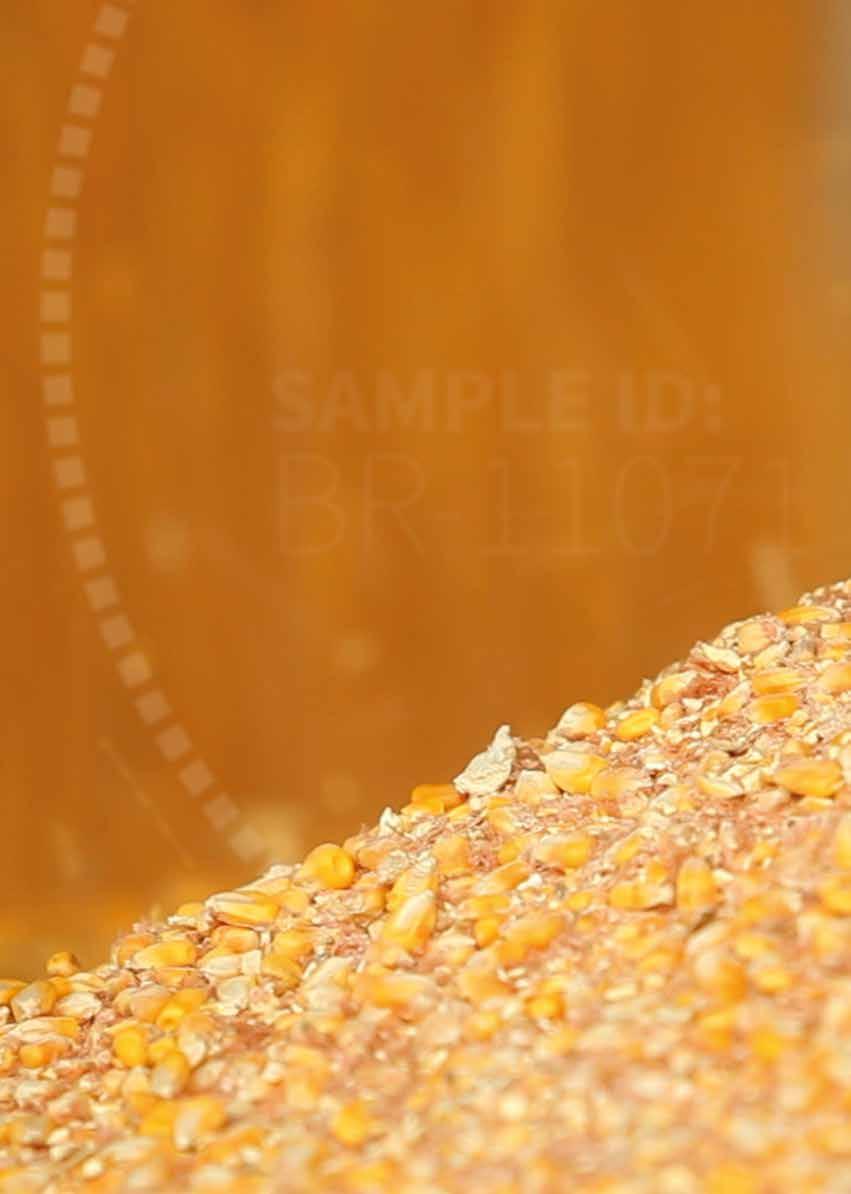

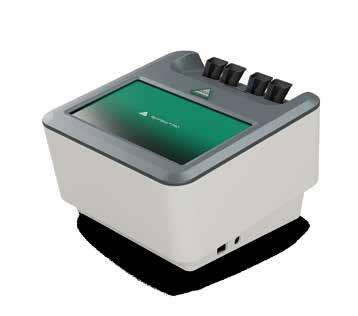

Get fast and actionable mycotoxin test results The AgraStrip® Pro WATEX® test system enables the rapid and �simple on-site quantification of mycotoxins in a variety of agricultural commodities. The streamlined workflow reduces steps to a bare minimum while independent and simultaneous testing for up to 4 samples sets new standards in accuracy and usability. Learn more at www.romerlabs.com SAMPLE ID: BR-11071 COMMODITY: CORN Aflatoxin : 3.4 ppb Deoxynivalenol : 0.8 ppm
· Tightness is improved. Double sealing on both sides of the screws.
· Butyl rolls are supplied with double strip to improve assembly times.


Improve silo tightness. Double Vertical Joint.
symaga.com • +34 91 726 43 04 • symaga@symaga.com 50 million m3 built Projects in 145 countries Top Project worldwide Flexibility and adaptability A reliable team for a reliable project YOUR RELIABLE PARTNER
The future of milling in Uzwil Grain Innovation Centre to open in 2024
A new multi-million Swiss Franc Grain Innovation Centre (GIC) is being developed at Bühler’s Uzwil site in Switzerland.
The GIC will replace the old technology centre, which was built in the 1950s and no longer fulfils the requirements of a state-of-the art innovation hub.
At the new GIC, Bühler and its customers and partners will develop, test and scale sustainable and efficient solutions for grain and feed processing to improve food and feed solutions.
The focus will be on yield, quality, energy efficiency and the flexibility of the plants together with nutritious and great tasting recipes based on a broad variety of grains and pulses.
Embedded in Bühler’s Application & Training Centre ecosystem at Uzwil, which includes bakery, pasta, proteins and chocolate, the GIC will enable the development of innovative solutions from raw materials to finished products. The GIC is scheduled to start operations by the end of 2024.
Humans have been processing grain for around 10,000 years and yet milling has never been more innovative than it is today. Environmental regulations, food safety, customer needs, raw material sourcing – these ever-increasing demands require new processes and plant technology.
Seventy years ago, Bühler built its first application centre for milling at its site in Uzwil. However, it is now getting on in years and can no longer meet future demands.
When today's application centre was built in 1951, the raw materials were still delivered in 100-kilogram sacks. Transport and distribution relied on a great deal of human muscle power alongside the most advanced technology of the time. This is no longer realistic today, when the raw materials are delivered in one-ton bags or in bulk in tank trucks. The building and its infrastructure are reaching their limits.
The contents of the bags delivered are also very different from those of 1951. Today, more and more diverse raw materials are being processed, from the newly discovered old grain types to legumes and recycled plastic granulate PET.
"Everything that can be ground, screened and sorted is in the right place here," says Rudolf Hofer, Head of Grain Innovation Centre.
On the other hand, there is a constant stream of end-product innovation with start-ups, for example, developing products with a local connection to meet current customer tastes.
All of this, in turn, places ever higher demands relating to sustainability, energy efficiency, food safety and traceability.
The circular economy is also becoming increasingly important, requiring new solutions and applications for by- and waste products such as hulls, husks, or bran.

The building, which is a place with a great tradition of innovation, will be partly demolished and rebuilt, and partly renovated.
“Most of the machines developed in the milling sector over the past 70 years have been at least partially tested here in the application centre,” says Stefan Birrer, Head of Business Area Milling Solutions.
“Among them are absolute success stories such as the Airtronic roller mill (MDDK), the first friction-locked roller package that made it possible to greatly reduce the number of roller mills in a mill, or the first double roller mill (MDDL) that had a decisive influence on mill design in terms of diagram layout and space requirements.”
Today, the Application and Training Centre no longer meets the requirements for a future-oriented and safe environment for Bühler’s customers or for the company’s own trials and developments.
For this reason, the decision was taken to build a completely new infrastructure on the site of the present Application and Training Centre, which will give an enormous boost to research and development in the field of milling.
Here, work will also be done on how to merge the machines and process steps with the digital revolution.
“All new developments will come from the new Grain Innovation Centre. Bühler will continue to keep this important part of its research in Uzwil,” says Peter Striegl, Head of Innovation Milling Solutions.
In order to take advantage of synergies, the training centre will be integrated into the existing ecosystem with all existing Application & Training centres, the CUBIC, the new Bühler Energy Centre, and the Protein Application Center announced at the Networking Days.
The Milling Academy will also develop a new curriculum, explore innovative and new ways of learning, and work much more closely with the African Milling School and all other academies at Bühler.
Milling and Grain - Julio 2022 | 57 F
Autres récits des Journées Réseautage
Unir les forces pour répondre à la demande croissante de protéines alternatives
Lors de ses Journées Réseautage, Bühler a annoncé un nouveau partenariat stratégique avec la société d'ingénierie allemande endeco pour faire progresser le traitement des légumineuses, répondre à la demande croissante de sources alternatives de protéines et développer des solutions de traitement des légumineuses avec une empreinte CO2 nettement plus faible. endeco, spécialisée dans la conception et la construction d'usines d'amidon et de protéines, et Bühler, leader du marché des technologies de transformation, ont convenu de construire un nouveau centre d'application des protéines au siège de Bühler à Uzwil, en Suisse, afin de proposer aux clients des solutions de bout en bout, du haricot au burger, y compris tous les traitements par voie humide et sèche.
La transformation des protéines végétales est une technologie clé pour répondre aux besoins croissants de la population mondiale. Les protéines jouent un rôle essentiel dans une alimentation humaine saine. Une part importante de l'approvisionnement actuel en protéines repose sur la conversion des protéines végétales en protéines animales. Étant donné qu'il faut en moyenne quatre kilogrammes de protéines végétales pour produire un kilogramme de protéines animales, et qu'environ deux tiers des terres agricoles sont déjà utilisées pour le bétail, le passage à des alternatives plus végétales contribue à répondre durablement à la croissance de la demande en protéines.

"Ensemble, nous pouvons couvrir l'ensemble de la chaîne de valeur", déclare Johannes Wick, CEO Business Grains & Food chez Bühler.
Le nouveau centre d'application des protéines d'Uzwil permettra d'accumuler du savoir-faire et de poursuivre le développement de procédés pour la production de produits de substitution à la viande. Les légumineuses sont des ingrédients prometteurs qui constituent une bonne source de protéines. Ils peuvent être utilisés pour créer de savoureux pains, pâtes, boissons et substituts de viande. Avec la demande croissante des consommateurs pour des aliments sans gluten et végétaliens, la demande de farine de légumineuses devrait augmenter de 10 % d'ici 2025 par rapport à 2017.
Riz – une denrée alimentaire de base
Dans l'une des conférences d'experts de l'événement, Sujit Pande, responsable mondial du marketing et des produits Bühler pour Rice Solutions, a décrit les complexités associées à la transformation du riz compte tenu des milliers de variétés différentes et des conditions climatiques dans lesquelles le riz est cultivé. "On estime que le riz nourrit environ la moitié de la population mondiale et pourtant, comparé à d'autres sources d'énergie comme le blé, le
Une solution d’économie circulaire pour le marché suisse de la viande
végétale
La société suisse CN & Partners AG a annoncé la création d'une coentreprise avec Bühler pour créer Circular Food Solutions Switzerland AG - une nouvelle société qui produira une viande suisse de remplacement à partir de céréales usagées recyclées produites localement.
Ce produit riche en protéines et en fibres a un faible impact environnemental.
"Pendant des décennies, l'orge maltée usagée était utilisée comme nourriture pour les animaux. Aujourd'hui, nous la réutilisons pour créer des alternatives carnées saines et savoureuses", explique Johannes Wick, PDG de l'activité Grains & Food de Bühler.
"Pendant ce temps, l'entrepreneur suisse Christoph Nyfeler, propriétaire de CN & Partners AG, déclare : "Nous sommes

Notre principal levier de réduction des émissions de CO2
Le développement de nouvelles solutions est important pour transformer l'industrie, mais l'optimisation potentielle des actifs industriels existants, dans le monde entier, est le plus grand levier à court terme pour réduire l'empreinte CO2.
Bühler a présenté des services, des technologies et des solutions permettant d'optimiser les actifs existants, d'ouvrir la voie à la réduction du CO2e dans les nouvelles usines et de soutenir le développement de nouveaux régimes alimentaires et de solutions de mobilité plus durables.

"Notre plus grand impact vient du fait que nous aidons nos clients à réduire leur consommation d'énergie, leur production de déchets et leur utilisation de l'eau, tout en assurant la productivité et le rendement. Nous avons des objectifs clairs sur ces sujets. “En élargissant notre écosystème collaboratif, nous pouvons accélérer un impact significatif et durable dans les secteurs de l’alimentation humaine et animale et de la mobilité”, déclare Stefan Scheiber.
maïs, l'orge et le sorgho, le riz représente environ un quart de la source d'énergie mondiale", a expliqué M. Pande. L'écart entre la source d'énergie et la dépendance de la population est dû au fait que le riz est une culture de subsistance essentielle et qu'il est donc uniquement utilisé comme source de nourriture. Le riz est également lié à la sécurité alimentaire et a donc un impact direct sur la sécurité politique d'un pays. Il a tendance à être consommé dans les régions à forte densité de population.
déterminés à vivre de manière durable et nous le prouvons par nos actions."
L'upcycling (transformation de sous-produits et de déchets en nouveaux matériaux ou produits de plus grande valeur) est le saint Graal de l'économie circulaire. Dans le processus de brassage de la bière, l'amidon du malt d'orge est utilisé pour produire de la bière. Le reste est appelé "drêche". Traditionnellement, elle est utilisée comme nourriture pour les animaux. Mais une grande partie de la partie nutritive du grain se trouve dans cette drêche.
M. Nyfeler a créé une coentreprise avec Bühler AG pour établir Circular Food Solutions Switzerland AG, basée à Lenzburg, en Suisse. Ce partenariat associe l'expertise en matière de transformation et la propriété intellectuelle de Bühler aux compétences, à l'expérience et au réseau de CN & Partners afin d'apporter une nouvelle solution au marché de la viande d'origine végétale.
"Nous travaillons en étroite collaboration avec Bühler sur l'ingénierie détaillée sur le site choisi. Si nous parvenons à garantir une chaîne
d'approvisionnement efficace, nous prévoyons que l'exploitation commencera d'ici l'été 2023", déclare M. Nyfeler.

L'idée originale d'utiliser les drêches de brasserie de cette manière est née d'un concours d'innovation chez Bühler. L'équipe à l'origine de cette idée a vu l'opportunité de créer un nouveau produit à partir de ce précieux flux secondaire et a dirigé son développement par le biais d'une start-up, Circular Food Solutions AG (CFS Global), qui a depuis été séparée de Bühler.
Bühler a l'intention de rendre cette capacité disponible dans différents pays.

"Nous aimerions trouver des entrepreneurs dans d'autres parties du monde qui, comme CN & Partners, peuvent fournir les contacts et l'expérience de la production et de la vente au détail au niveau local, et qui souhaiteraient s'associer avec nous d'une manière similaire", déclare M. Wick.
“Nous cherchons à unir nos forces pour favoriser une économie circulaire véritablement durable dans les alternatives à la viande.”
WINNER
Arrius Integrated Grinding System by Bühler Group Arrius is the first fully integrated grinding system (IGS) for grinding wheat, durum, rye, barley, corn and spelt where it sets the benchmark in terms of grinding performance and energy efficiency.
58 | Julio 2022 - Milling and Grain F

Partnership and initiatives announced
The Networking Days event also provided an opportunity for Bühler to announce a number of joint ventures and partnerships involving industry synergies and technological advances aimed at mitigating climate change.
Bühler announced the following partnerships:
A partnership with endeco enabling complete solutions from crops to plant-based meat and dairy analogues and the building of a protein application lab in Uzwil integrating processes from raw material to finished product
A joint venture with Zeta, an engineering company serving the pharmaceutical industry, to produce a one-stop-shop to scale up bioprocessing from laboratory to industrial production. A partnership with Vyncke, facilitating the production of clean energy from biomass and recovered fuel. Bühler announced new application labs to support the latest technologies in milling. A new joint venture with Christopher Nyfeler supporting the circular economy
The time for action
The time for action and making a significant impact with regard to waste, water and energy reductions within the milling sector contributes to the is now with the goal of achieving net-zero emission of CO2e by 2030.
That’s the clear message attendees heard from several presenters during Bühler’s 2022 Networking Days.
The company aims to have solutions ready to help its customers achieve the 50 percent targets in the areas of waste, water and energy by 2025 and thus help reduce their CO2 footprint. It announced that it had assessed the impact of its different processing solutions and how its technological advances impact the United Nations Sustainable Development Goals and benefit the circular economy.

“By evaluating the impact of our solutions, we can then start tracking their overall accumulative impact and support our customers on their netzero journeys,” said Ian Roberts, Bühler’s Chief Technical Officer.

An important contribution is the optimisation of the industry’s installed asset base and his company is learning how to monitor the reduction in CO2e footprint resulting from its services at customers’ sites.
So far, 30,000 tonnes of accumulative CO2e reduction have been calculated across only 11 of its services used in customer processes.
“With these 11 servcies we learn how to estimate and verify impact, we are going to expand that calculation across the whole service portfolio to better understand the impact we can bring together on that CO2e footprint and then verify the calculation as we build better data sets,” he adds.
Bühler is also using new technological solutions to track avoided CO2e emissions.
Roberts told delegates that Bühler is now able to provide a service to quantify customer CO2e footprint.
“We can do product assessments and look at where the processing hot spots are and build action plans to drop CO2e footprint and have it externally certified,” he explains.
• A partnership with IMDHER specializing in building turnkey plants for animal feed, aqua and pet food plants in Mexico
• A partnership with Flottweg specializing in separation technology
• A partnership with MMS providing membrane solutions across the food and bio pharma industries
• Bühler has partnered with the car manufacturer Volvo to make sure it has the latest technology in its new plant based in Sweden
• Bühler has partnered with Britishvolt in using continuous production technology in the fourth biggest battery plant in the UK
• Bühler has also worked with partners Migros and Givaudan to create The Cultured Hub, to accelerate the future of cultured food processes
• Bühler also announced the setting up of the National Board for Switzerland for “One Young World Switzerland” to enable all Swiss companies to access “One Young World” and identify the most impactful Swiss young leaders of tomorrow
• Bühler announced that it has offset the carbon footprint of the 2022 Networking Days event with two of its partners, Climeworks and Restor.
Ian Roberts, Chief Technical Officer at Bühler
60 | Julio 2022 - Milling and Grain F
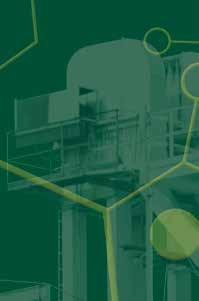

































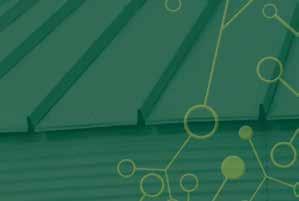





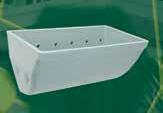
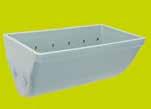















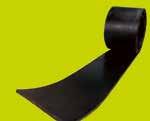






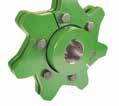

























































































Elevator Buckets Elevator Bolts Belting & Splices Conveyor Chain 4B Designs and Manufactures Components for Bucket Elevators and Conveyors Hazard Monitoring Systems Belt Misalignment Sensors Bearing Temperature Sensors Speed Switches Plug Switches www.go4b.com/milling Engineering Solutions
1888 With sales and technical support offices in North America, Europe, Asia, Africa, Australia and China along with a worldwide network of distributors, 4B can provide practical solutions for any application
matter the location.
Since
no
China Agriculture Outlook Report (2022-2031)
 by Professor Wu Wenbin, Henan university of technology, China
by Professor Wu Wenbin, Henan university of technology, China
The 2022 China Agricultural Outlook Conference was recently held in Beijing. Ma Youxiang, vice minister of Agriculture and Rural Affairs, pointed out at the meeting that China's grain output has exceeded 1.3 trillion catties for seven consecutive years and its grain inventory remains abundant.
According to the Report on China's Agricultural Outlook (2022-2031) released at the conference, the effective supply of grain and other important agricultural products will be guaranteed, the quality, efficiency and competitiveness of China's agriculture will be significantly improved, basic self-sufficiency in grain and absolute grain security will be fully ensured, and the self-sufficiency rate of grain will be raised to about 88 percent in the next decade.

A promising time ahead
Tang Ke, director of the Market and information Technology Department of the Ministry of Agriculture and Rural Affairs, pointed out at the release of the report that after analysis, on the supply and demand situation, in the next decade, benefit from agricultural policies will continue.

China's grain planting area is expected to be stable at more than 1.75 billion mu, whilst rations area is stable in more than 800 million mu. With the implementation of the seed industry revitalisation campaign, grain varieties are expected

The quality, efficiency & competitiveness of Chinese agriculture is set to improve significantly
62 | Julio 2022 - Milling and Grain F






















produces the most reliable and high-quality bulk ship loaders worldwide | neuero.de/en
SHIPLOADER SPECIALIST NEUERO

yield per unit area will gradually increase, and the yield of rice will be more than 210 million tons. With the continuous upgrading of food consumption, rice consumption has shown a steady and slightly downward trend, and the overall consumption will remain at about 210 million tons.

Ration consumption continued to decline, but accounted for more than 69% of rice consumption, feeding consumption will first decrease and then increase with the development of animal husbandry and feed cost price changes. The relationship between rice supply and demand is generally relaxed, and rice import is mainly to meet the demand of variety adjustment.
Wheat
In the next 10 years, the regional layout and quality structure of wheat production will continue to be optimized, the yield per unit area will continue to improve, and the yield will increase steadily. With the gradual increase of corn yield, the ratio of wheat to corn prices will remain in a reasonable range, and the consumption of wheat feed will fall to the perennial level.

However, there is still a large space for the growth of industrial consumption, and the overall consumption of wheat will decrease
first and then increase. China will still import part of special wheat for variety adjustment, but with the continuous improvement of domestic high-quality wheat production level, the import demand of high-quality special wheat will decrease.

Corn
In the next 10 years, the sown area of corn will decrease first and then increase; with the continuous optimisation of maize planting mode, the promotion and application of breeding technology and field management technology, the yield per unit area has been steadily improved, with an estimated annual growth rate of 1.7%.
Yield growth is mainly due to the contribution of yield per unit area, which is expected to reach 323.93 million tonnes in 2031, with an average annual growth rate of 2.0%. As corn feed consumption continued to grow but the growth rate slowed down and industrial consumer demand remained strong, corn consumption maintained rigid growth.
The relationship between corn supply and demand will gradually change from tight to basically balanced pattern, and the import volume will stabilise after decreasing, and it is estimated that the import volume will decrease to 7.57 million tons in 2031.
Decades of Experience Worldwide 50+ Years in Business 66+ Countries Served Experts in Cable & Disc Conveying Solutions Gentle Clean Reliable Conveying Cablevey ® Conveyors is a registered trademark of Intraco, Inc. 06/2022 Milling and Grain - Julio 2022 | 65 F
Intelligent mills
Helping existing flour mills to utilise & benefit from emerging innovations
by Sid Jain, Henry Simon Milling, Australia
Traditionally, flour mills were smaller in size and had a large number of millers and workers, making it easy to make adjustments and ensure the mill was running at optimum efficiency. Most mills are now operating at higher throughputs with fewer millers on site, resulting in a complicated system that must be adjusted to achieve optimal performance with only limited numbers of hands-on-deck.
Although every milling company strives for the highest extraction rate in their production, maintaining the mills in a balanced and efficient state for an extended period of time is tough to achieve. It is inevitable for us to step into this new era of milling with thousands of sensors and artificial intelligence. Even with these advancements, nothing can replace the necessity for an experienced miller who knows his mill, its flow, and the machinery like the back of his hand.
New mills with enhanced technology that allows for immense transparency are continuously emerging, but how can older mills utilise and benefit from these new innovations? What technologies can be applied in these factories to help millers get high extraction rates while minimising downtime?

An important part of a miller's job
One of the challenges faced by most mill operators and plant engineers occurs while conducting a mill survey, especially when the factory is of higher throughput. Such personnel can only make logical decisions and adjustments on the run if they have immense experience or are relying on accurate information made available in real time.
It was estimated that about 254 samples, taken in a strategic chronological manner, are required to perform a complete mill survey in a 660TPD flour mill. Every sample taken must undergo a series of tests including capacity and sieve test, ash
content, ash curve, light index etc. for several flour streams. Mill survey is an important part of a miller's job, and due to the complexity of the milling system, it demands an immense amount of labour to do correct sampling and detailed and reliable analysis of each sample. If any quality concerns are detected, changes must be made, then further sampling and testing is required to

66 | Julio 2022 - Milling and Grain F

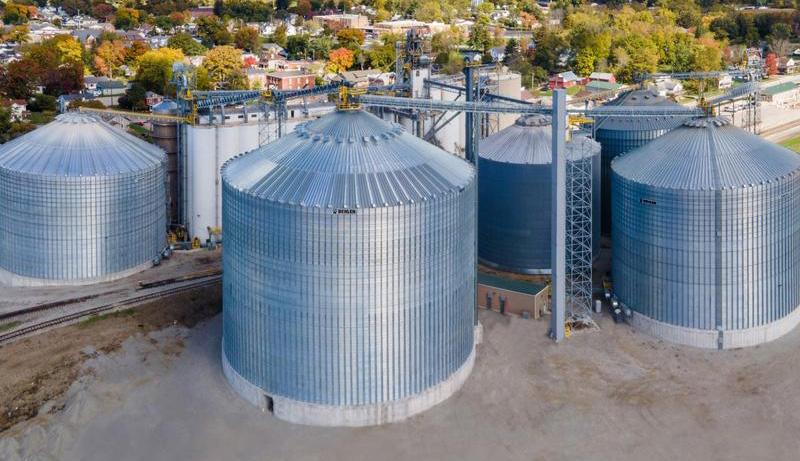




Behlen bins range in
cubic meters. These silos feature
trapezoidal wall panel design. COMMERCIAL GRAIN BINS Behlen hoppers are designed to ensure strength, ease of assembly, and trouble-free operation. COMMERCIAL HOPPER TANKS Behlen Steel BUILT TO LAST Behlen Grain Systems... Standing the test of time with competitive prices and Customer Service second to none. CONTACT US TODAY TO DISCUSS YOUR PROJECT! Call 1-402-564-3111 or Visit www.behlengrainsystems.com Bigger and Better than Ever!
size from 85 to 66,000
a unique

confirm analyses results.
Additionally, it is a common experience that mill operators make changes in the plant for only one grist but do not undo the changes made. From that point on, a mill imbalance will occur gradually and unbeknownst to the operators until it causes a huge problem that cannot be traced without performing another complete mill survey or mill assessment at least to ensure all passages are working efficiently.
This results in higher operation costs. Thus, mill operators will be interested to know what can be added to the existing milling process to ensure optimum and balanced milling performance.
What is intelligent milling?
Once a miller sets up a mill to the desired performance, an intelligence system must be integrated to ensure that the mill continues to run at the same efficiency as originally set.

This is especially important in flour mills with limited staff (remote areas) where constant performance checks are not feasible. Intelligent milling is basically the utilisation of data generated from monitoring systems and sensors to ensure:
1. Quality, capacity, and efficiency of a flour mill is maintained in daily operations.
2. Any changes made to the system can be reviewed quickly.
3. Mill operators can foresee maintenance requirements.
4. Mill operators can foresee product degradation.
5. Millers are making decisions with quantifiable inputs.
An intelligent milling system
In recent times, a range of equipment and services have been made available to allow older mills to replace or retrofit core equipment or additional specialised equipment that help provide transparency in the flour milling system.
Henry Simon has introduced three advanced core milling equipment, namely, Roller Mill, Quadro Plansifter and Purifier. These equipment have a range of sensors which continuously collect data and provide user information, maintenance data, screen information, operational information (radius of oscillation, rpm, for example) on their display or for export to the MCC. The intelligence system also enables and sends notifications when parameters are outside normal range or standards, enhancing product quality control.


Another crucial aspect of flour milling that may requires intelligent technology in most of the existing flour mills is to ensure individual passages meet expected capacity and quality. In a normal milling process,
the stock is weighed at the intake, cleaning, and tempering stages. However, after 1st BK the weighing process takes place when flour is extracted in various flour streams.
Henry Simon’s HSIFM in-line flow meter allows for real time capacity analysis of any milling passage. Simplicity is at the centre of HSIFM's design, it was made with low power and air requirement and can be mounted along mill spouts within minutes and without requiring special installation work or disruptions.
The HSIFM's operation can be described in four simple steps. First, the bottom valve remains open, allowing product to flow in the spout. At a set interval, the bottom gate closes, and product fills the chamber for three seconds. The weight is then measured, and the product is discharged.
This operation is repeated every three minutes along a spout being monitored Weight data obtained will be used to generate plots of the product flow rate and trends which can be analysed in
Milling and Grain - Julio 2022 | 69 F
real-time.
When installed at critical or all passages (Figure 3), a complete dashboard (Figure 4 and Figure 5) of the mill can be created, allowing for easy adjustment and manipulation of passages to achieve better results. The HSIFM is designed to convert any mill into a smart mill.
This data can then be exploited to make changes in the plant, such as analysing particle size distribution results in real time. In addition, it aids millers to detect potential maintenance issues early including abrupt changes in flow rate – like in the event of blockages or overflow etc. (Figure 5)


The HSIFM allows for continuous mill survey without any down time, amendments or re-routing of the product flow.







Another benefit which HSIFM offers is to monitor and ensure feed balances between passages, which is a necessity but not easily accomplished or maintained every day, such as providing even feed into purifiers or sifters.
Efficient, balanced & optimum
In summary, it is inevitable that traditional mills must incorporate some form of intelligence in their plants to compete with new automated mills. Therefore, the retrofit technology offered by the HSIFM allows older milling plants to adopt smart milling technologies with minor adjustments to their design.
The resulting milling system after incorporating the HSIFMs has the potential to provide an efficient, balanced, and optimum mill in operation at any given time with minimal downtime due to maintenance or breakdowns.

Elevator parts Conveyor chains www.vav.nl contact@vav.nl +31(0)71 40 237 01 70 | Julio 2022 - Milling and Grain F

Scotland the resourceful
New report highlights the country’s strength in agri-tech, animal health & aquaculture
Arecent research report has identified more than 200 companies, research centres and academic partners as key stakeholders in the animal health, agri-tech and aquaculture (AAA) sector in Scotland.
The sector is important to both the life sciences and technology sectors and underpins the country’s high performing food and drink industry.
The future AAA landscape was also explored, with multiple new centres, hubs and new trial facilities planned over the coming years, showing the vast expansion and investment in this area.
A fellowship was set up to increase the understanding of and identify strengths and opportunities for the AAA sector in Scotland. It was funded by the Scottish Environment, Food and Agriculture Research Institutes (SEFARI) in partnership with the Scottish Life Sciences Industry Leadership Group and Highlands and Islands Enterprise (HIE). HIE is the economic development agency for the North and West of Scotland.
SEFARI fellow Dr Jenna Bowen, from Scotland’s Rural College (SRUC), has created an inventory by mapping what currently exists in the sector across Scotland, and analysed a survey of key stakeholders.
The fellowship has provided a greater understanding of Scotland’s world leading core capabilities and international assets within animal health, agri-tech and aquaculture and amplifies the voice of this fast-growing sector which is at the heart of the green
and circular economies.
Alongside the report, the inventory provides an overview of the vast breadth and expertise within the sector across academic institutes, companies, innovation centres, networks and consortiums, charities, government and development agencies, and business gateways and venture studios.
A large proportion of identified stakeholder are based around the central belt of Scotland and the Highlands.

The report also includes a list of trial facilities, both animal and crop, which exist across Scotland and contribute to Scotland’s world leading research within the AAA Sector. Crop science also featured strongly in the report and several research institutes contribute to the knowledge base.
World leading facilities
The James Hutton Institute combines research and expertise in crops, soils, land use and environmental research to help address global challenges including food security. It has a broad range of expertise and resources including genome technologies, functional genomics to elucidate the genomes of key and commercially relevant crops for livestock feeds (e.g., barley grain), and pathogens within the crop and livestock sector. The institute houses world leading facilities including research farms, glasshouses and growth facilities. Its Centre for Sustainable Cropping delivers sustainable management practices and improved crop varieties.
The Agronomy Institute in Orkney, part of the University of the Highlands and Islands, is a research facility for the development of plants and plant-based products focussing particularly on the
72 | Julio 2022 - Milling and Grain F
Highlands and Islands. The Institute collaborates with growers, end-users and other research organisations and has a wideranging research portfolio.


It collaborates with the food and drink industry to develop higher value markets for locally grown cereals and create a wider range of distinctive food and drink products using Highlands and Islands ingredients. Current activities include major projects with three Scottish malt whisky distilleries and the identification and utilisation of early maturing varieties of barley, oats and wheat from northern Europe.
SRUC combines and integrates research, education, and
consultancy in the land-based sector, and is the largest institution of its type in Europe. It operates dedicated facilities for crop trials and offers consulting services to over 12,000 customers, using expertise in veterinary services, livestock and crops, environment design, farm diversification and rural business management.



Attracting new start-ups & investment
The AAA sector is developing fast and new crop science developments are coming on stream across the country, for example the International Barley Hub and Advanced Plant Growth Centre (APGC).
pubblicità italiana_MOD.pdf
Milling and Grain - Julio 2022 | 73 F
C M Y CM MY CY CMY K
1 27/01/22 10:59

These two new innovation projects have recently started operating and the main infrastructure will be complete in 2023. Funded through UK£62m/US$74.8m investment by the UK Government and Scottish Government (through Tay Cities Region Deal), they will attract new start-ups and investment.
The International Barley Hub will develop new varieties and growing systems to future proof the barley sector against climate change. The APGC will revolutionise crop productions including the use of indoor vertical farms ultimately reducing cop productions environmental impact.
APGC focuses on pre-and post-harvest technologies and solutions to support, develop and create plant and crop-based industries. This places the APGC at the centre of the emerging disruptive global technologies of total controlled environment agriculture including vertical farming.
The report also showcases the Scottish business base that forms the supply chain for the AAA sector, supporting production companies with new technologies and services.
For example, the Edinburgh based company Crover offers unique grain storage solutions to automate monitoring for optimal storage conditions. Another Edinburgh company, Celestia, specialises in terrestrial and space borne IoT devices including drone and unmanned aerial vehicles for crop spraying.
As mentioned above, the report is the output of a SEFARI Fellowship project aiming to increase the understanding of the AAA sector in Scotland and improve understanding of opportunities and challenges facing the sector.
Co-designed with key partners

SEFARI, the Scottish Environment, Food and Agriculture Research Institutes, is a consortium of six globally renowned
research institutes: Biomathematics and Statistics Scotland, The James Hutton Institute, Moredun Research Institute, The Rowett Institute, Royal Botanic Garden Edinburgh, and Scotland’s Rural College.

As SEFARI, these institutes deliver the Scottish Government funded Strategic Research Programme, which addresses key mid to longer-term challenges for Scotland’s environment, agriculture, land use, food and rural communities. SEFARI was launched by the Cabinet Secretary for the Environment, Climate Change and Land Reform on 29 March 2017.
SEFARI Gateway Fellowships are bespoke opportunities codesigned with key partners to deliver solutions to priority needs that also meet Scottish Government National Outcomes and aligned United Nations Sustainable Development Goals. The report and inventory can be downloaded from the Life Sciences in Scotland website https://lcshome.directories.scot/
F Milling and Grain - Julio 2022 | 75
Cost-effective Salmonella control in feed
The development of preventative and corrective feed pathogen control strategies
by Dr Enrique Montiel, DVM, MSc, PhD, DACPV Global Director of Nutrition and Live Production, & Jorge Trindade, DVM, MBA, Commercial Sales Director EMEA, Anitox, USA
Feed ingredient processors and millers have a new cost-effective option for Salmonella control. Fortrol, from feed safety and productivity specialist Anitox, offers producers the flexibility and power to tackle Salmonella at source, reducing load and prevalence entering live production to improve livestock performance and food safety. “Feed is the most significant investment into animal production and it’s a proven fomite for pathogens,” explains Dr Enrique Montiel, Anitox Director of Nutrition and Live Production.
“It gathers raw materials from multiple sources at the feed mill and can then reach across the entire production operation in a very short time. That means feed is uniquely positioned to continuously introduce pathogens into the food production chain.
“Feed-source pathogens including Salmonella, Clostridia, E. coli and Campylobacter negatively impact animal performance and productivity, operation profitability and consumer food safety.

“But with feed costs at near record levels, our R&D team has been focused on finding ever more cost-effective solutions to the challenge. The result, Fortrol, in isolation or when used alongside our Finio feed sanitiser, enables ingredient processors and feed millers to tailor their Salmonella strategy to incoming risk.
“Increasingly we see producers prioritising feed in their biosecurity programs, and for good reason,” adds Dr Montiel. “Anitox tracks the microbial quality of feed and feed ingredients in its global database.
Over the past 10 years, our records show that 100% of wheat, 69% of soybean meal and 43% of fishmeal samples transiting through our laboratory were contaminated with Enterobacteriaceae.
Those same ingredients were found to have Salmonella contamination rates of 30%, 5% and 34% respectively. Recent experiments using CRISPR – based protocols have demonstrated that not only is Salmonella prevalent in feed and feed ingredients but found that approximately 6% of samples from over 130 commercial mills yielded a positive result and harbored multiple serovars and diverse populations.”
A synergistic organic acid blend
Anitox’s latest feed pathogen control innovation, Fortrol® is a synergistic organic acid blend that is applied to feed and feed ingredients via the same best-in-class application technology as our feed sanitiser, Finio®.
“Fortrol effectively controls Salmonella in feed: Preliminary studies demonstrate a clearly effective dosedependent control of Salmonella when used at inclusion rates ranging from 2kg/MT to 8kg/MT, granting producers the flexibility to mitigate feed-source pathogens based on specific risk,” Anitox’s Commercial Director for EMEA and veterinarian, Jorge Trindade explains.
Fortrol is used in preventative and corrective feed pathogen control strategies, whether that be via application to feed and feed ingredients, use in mill flush programs to uphold facility hygiene or in combination with our feed sanitiser, Finio, to maintain a comprehensive, total feed pathogen control program.
Microbial loads in feed and feed ingredients vary and pathogen prevalence and risk change from batch to batch. The producer’s ability to create and implement customisable feed pathogen control programs is achieved by the ability to easily switch between the use of Fortrol and Finio quickly should the need arise.
76 | Julio 2022 - Milling and Grain F
Taking cost-effective action
“The addition of Fortrol to Anitox’s feed pathogen control portfolio gives feed and food producers a cost-effective, challenge-dependent, option for comprehensive Salmonella control and supports the production of clean feed. Producing and providing clean feed promotes performance and profitability. It’s supported by a team of expert engineers working with highperformance application technology,” Jorge Trindade continues.
“A large body of evidence exists supporting microbial contamination of animal feeds with Salmonella, Clostridia and E. coli. Feed containing high levels of Enterobacteriaceae are more likely to be contaminated with Salmonella. Feed and feed ingredients can sustain bacterial populations of up to one million cfu/g and more.

“Untreated pelleted and non-pelleted feed have been found to contain approximately a thousand cfu/g and 10,000 cfu/g, respectively, at loadout. Salmonella mapping has shown the prevalence in raw materials arriving at feed mills to be as high as 27%, decreasing to almost 6% during pelleting, but rebounding to over 12% by the time finished feed reaches loadout.
“We know that Salmonella persists in feed and feed ingredients, but also in production environments. Unless conditions are properly and consistently managed, feed contamination can worsen during storage and transport.
“That’s why we’re adding Fortrol to our product portfolio, to give producers value tools to respond appropriately to incoming Salmonella risk and to the challenge of resident colonies in some mills.”
If you are a producer seeking more information on how to take cost-effective action against feed-source pathogens with Fortrol, visit Anitox’s website.

Milling and Grain - Julio 2022 | 77 F
by Murat Yıldırım & Ahmet Kutsal Erdoğan, TMS Industrial Solutions, Turkey
Vapour compression cycle coolers
Controlling the temperature and humidity of grain stored in silos
Grain has been one of the most important food sources for thousands of years. It is grown and harvested with care. Unconsumed excess grains are stored in silos and when necessary, grain needs are met from these silos.
The temperature and humidity values of the grain in the silo must be kept under control in order to keep the grain intact for a long time in the silos and to protect it from insect and mould fungi that damage the grain.

In order to preserve the nutritional value of the grain and to keep the moisture value in the grain within the targeted value ranges, cooling is necessary. Thanks to the cooling process performed with TKS Grain Cooling Units designed and produced by TMS Industrial Cooling Industry and Trade Inc, the temperature and humidity in the silo are kept under control and grain; stored for a long time in fresh and healthy environments.
Brief review of today's situation
When analysed on a yearly basis throughout the world, it is seen that grain production is in an increasing trend. According to the latest data of the World Food and Agriculture Organization (FAO) in 2021, grain production increased by 0.7% compared to last year and reached 2.796 million tonne.
Consumption and storage data also follow production data in a similar way. As seen in Figure-1, when FAO examines the latest data, it can be understood that approximately one third of the produced grain is stored. Considering that production and consumption follow each other in similar amounts, it becomes very important to keep the stored grain in suitable conditions without losing quantity and nutritional value.c
On the other hand, the development of agricultural technologies has reduced the time between harvest and storage of grain from weeks to a few hours. In this case, the grain may need to be dried and cooled according to climatic conditions. Another issue is the cases where the grain is transported and stored again for long and even intercontinental transport under harsh conditions. In this case, since the grain is exposed to conditions that are very different from the ideal storage conditions, the balance of nutrients and moisture may be disturbed.
Grain storage and aeration of silos
The life cycle of the grain, stored in the silo, continues. As the life cycle of grain continues, it produces heat and water vapour as a result of respiration. While this chemical reaction continues; on one hand, the nutritional value of the grain decreases, on the other hand, the temperature and humidity value in the silo increases.
This situation also triggers the increase of insect and mold fungus that has entered the silo with the grain. The temperature
STORAGE
F 78 | Julio 2022 - Milling and Grain
by Murat Yildirim & Ahmet Kutsal Erdoğan, TMS Industrial Solutions, Turkey
increase in the silo facilitates the reproduction of insects.
Considering that the insects in the silo breathe, they accelerate the increase in temperature and humidity.
Generally, growth of mold fungus increases above 70% relative humidity. All these adverse conditions trigger each other, causing an increase in temperature and relative humidity inside the silo. As a result, significant losses occur in stored grain. Considering that the grain is a good insulator due to its very low heat transmission coefficient; released heat is kept inside the silo. As a result, the constantly heated environment creates an ideal condition for harmful organisms to reproduce.
When the data based on observations and measurements are examined, temperatures above 21°C generally provide ideal conditions for the reproduction of harmful creatures. It has been understood that there is a significant decrease in the growth rate of insect and other pest populations at temperatures below 16°C (12°C wet bulb and 65% relative humidity).
Reducing the temperature inside the silo is an important factor in the long-term preservation of the grain in the silo, because it also slows down the life cycle of the grain.
The storage of the grain in the silo depends on many external factors such as ambient temperature, ambient relative humidity, exposure to sunlight, silo structure, as well as internal conditions. The change in ambient conditions during the day affects the stored grain positively or negatively.
Different methods are used for long-term preservation of the grain, stored in the silo. The main methods can be listed as; the use of chemical preservatives, natural ventilation with the help of a fan, and the cooling. Fan assisted ventilation is also called “natural or passive cooling.” It is one of the most widely used method.
Briefly, with this method, outdoor air is directed into the silo from the lower part of the silo with the help of a fan. The main purpose of the ventilation method can be summarised as:
- Preserving the vitality of the grain, - Reducing the internal moisture content of the grain, - Slowing down insect growth, - Prevention of mould and fungus formation, - Reducing the use of chemical preservatives,
For homogeneous air distribution inside the silo, and easy cleaning, when necessary, appropriate grid and duct systems should be constructed on the bottom of the silo. Although, directing the outdoor air into the silo with the help of a fan seems to be an effective method, for ventilating the stored grain, and improving the storage conditions, it is a process that needs to be well managed. According to the environmental conditions, this method has some difficulties and negative effects. The most important ones are listed below:
- Ventilation times and conditions are directly dependent on environmental conditions. For this reason, fans can be operated for limited periods at appropriate ambient temperature and relative humidity values. Considering the recent climatic changes all over the world, these periods can be further restricted.
- Since the air rises upwards from places where the counter pressure is lower, temperature and humidity imbalances may occur inside the silo. The temperature variation within the silo is more constant as the silo diameter increases. However, if the
Ottevanger Milling Engineers is supplier of machines, installations and complete process lines for the compound feed industry and grain processing companies.
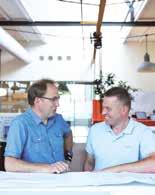

Our expertise in project management, engineering and production ensures the successful realization of machines, process lines and complete installations www.ottevanger.com

Specialist in the design and build of installations for the grain-processing and compound feed industry
Visit us at Victam International Utrecht - The Netherlands - BOOTH 1.432 Fane Valley, Ierland | 60tph Scan the QR-Code for more information F Milling and Grain - Julio 2022 | 79
stored grain temperature is higher than ambient temperature, it takes much longer to cool the larger silos. For this reason, smaller diameter silos should be preferred in cold climates and larger diameter silos should be preferred in tropical climates.
- While the grain is being stored in the silo, a slope angle is formed in the upper region depending on the grain type. In this case, the air ascending from the bottom of the silo will not be able to pass sufficiently over the grain in the top region.
- The temperature difference between day and night may cause
condensation and dripping from the silo roof to the grain. As a result of the wetting of the grain in the upper region due to the result of dripping, these areas become ideal environments for mould and insect reproduction. In order to prevent this situation, the use of additional exhaust fans on the roof reduces this risk.
Cooling of silos & maintaining a grain moisture equilibrium

In order to improve the difficulties and negativities encountered during the ventilation of the silos with the help of fans, the vapour compression cycle (VCC) method can be used for cooling. In this method, with the help of the compressor, the refrigerant is circulated between the heat exchangers in a closed cycle, transferring heat to the environment, and the air passed through the heat exchanger, which meets the desired conditions, is directed into the silo with the help of a fan.
The air taken from the outside is directed into the silo at the desired temperature and relative humidity. Thus, it is ensured that the stored grain is kept in ideal storage conditions for long periods of time. Environment air is conditioned, and directed into the bottom of the silo. The air moves upwards inside the silo and performs the cooling process inside the silo.
The heated air is exhausted back to the atmosphere through the vents on the roof of the silo. During the cooling of the air, the relative humidity value is also controlled.
The cooling capacity, performed using the vapour compression cycle method, can be calculated with the following equation:
W = Δh x Q x ρw

W : Cooling Capacity (kW)
Δh : The enthalpy difference between the ambient temperature and the cooled air (kJ/kg)
Q : Air flow rate directed into the silo (m3/hour)
ρw: Density of outdoor air (kg/m3)
The relative humidity ratio is as important as the temperature of the air directed into the silo. Therefore, it must be controlled. If the relative humidity ratio of the air, in the area where the grain is stored exceeds 70%, it can lead to mould growth, which also causes the temperature to increase due to mould respiration.
Grain is hygroscopic due to its ability to take in and give out moisture from the environment. Water is retained in the grain in three ways; absorbed water, adsorbed water and chemically bound water. The absorbed water is retained within the grain tissues by capillary forces.
It is associated with water-soluble components such as sugars, mineral salts, organic acids, and some vitamins that the grain contains. Absorbed water, consists of gas molecules of water trapped on the surface of porous particulate materials by electrostatic forces. Chemically bound water is present in association with grain components during the developmental growth and maturation of seeds.
Each grain type has a value in which the intra-grain moisture is in equilibrium against the different relative humidity ratios of the air. The curve obtained by plotting these values is called the equilibrium moisture content (EMC) curve. Equilibrium values varies depending on the type of grain, the ambient air temperature, and the relative humidity ratio. EMC represents the moisture content of the grain at which it will eventually stabilise, if weather conditions remain stable for a long period of time.
In this way, depending on the ambient conditions of the stored grain, the moisture values of the grain can be estimated or the moisture value of the grain can be controlled by changing the

F 80 | Julio 2022 - Milling and Grain

ambient conditions. For this process, psychometry diagram, on which moisture balance content (EMC) curves of different grains, can be used (Figure 2).
In addition, regarding the most consumed grains, tables showing the EMC, according to the ambient temperature and relative humidity ratio have been prepared. As an example, tables for wheat, and barley are given in Table-1a and Table-1b. The moisture balance value of the grain can be seen from these tables. For instance, for wheat, it is read from Table 1a that the EMC is 14.5% in an environment at 15 °C and 65% relative humidity. The moisture balance value shows the ratio of the moisture mass in the wheat to the total mass.


Temperature & humidity movement inside the silo
When air is passed over the grain inside the silo, 3 zones and fronts are formed in the silo. Figure 2 shows schematically the zones formed inside a silo, where the aeration process continues. The temperature and relative humidity values in the lowest region are the same as the values of the air directed into the silo (Zone A). At the top region, temperature and relative humidity values are the same as the initial conditions (before the air is directed into the silo) (Zone C).
The region in between has a value between the values in the lowest and highest regions (Zone B). The movement of these zones moves in the same direction as the air flow. The fastest moving part of the region is called the leading edge and the slowest moving part is called the trailing edge. As long as the air is directed into the silo, after a certain period of time, the temperature and relative humidity values in the whole silo reach the air values directed into the silo.
Temperature and humidity fronts are formed in the area between Zone A and Zone C inside the silo. The reason for the formation of fronts inside the silo is that the temperature moves relatively faster than the relative humidity. Practically, the temperature advance rate is one thousandth of the air speed. (10-3). The relative humidity advance rate is 100 times slower than the temperature advance rate. [4]
The variation of the equilibrium moisture content (EMC) for the stored grain in the silo depending on the weather conditions directed into the silo is explained through sample problems prepared by using the book named “The mechanics and physics of modern grain aeration management.”
Example 1:
Wheat is stored in the silo at a temperature of 35°C and containing 12% humidity. If the silo is started to be aerated with air, having 11°C (dry bulb temperature) and 90% relative humidity ratio, calculate the values of the 3 zones (A, B, C) that will form inside the silo?
The temperature and relative humidity values in the zone C, are equal to the initial conditions in which the wheat was stored. Wheat in this region has a temperature of 35°C and a relative humidity of 12%.
Zone A has the same conditions with the air directed into the silo. When the condition of 11°C (dry bulb temperature) and 90% relative humidity is marked on the psychometric diagram in Figure-3 (A), it is read that the temperature of the wheat in this region is 11°C and the equilibrium humidity is 18%.
For 11°C (dry bulb temperature) and 90% relative humidity, the wet bulb temperature is read 10°C on the curve. This is also the saturation temperature of the air. In order to calculate the values of the grain in the B zone, the wet-bulb temperature curve in the diagram is matched with the grain moisture equilibrium curve.
The temperature read at the intersection point is 15.5°C. (B1)

For a more detailed estimation, the rule that the grain internal moisture balance changes by 1% for every 28°C temperature difference is applied. By applying this rule, the humidity of zone B is approximately 0.70% ((35-15.5)/28=0.70) lower than zone C is calculated. In this case, the equilibrium moisture content of the grain for the zone B is 11.3% (12-0.7=11.3).
In the diagram, the dry bulb temperature is 16.7°C for 11.3% on the wet bulb curve. Thus, it is seen that the temperature of the wheat for the B region is 16.7 °C and the equilibrium humidity is 11.3%.
With lower airflow rates, the cooling zone between the leading and trailing edges becomes thinner. When air flow rates are higher, the cooling zone becomes wider or thicker due to the reduced contact time of each air particle with an individual grain core.
Since the moisture front closely follows a constant air enthalpy (parallel to the wet bulb temperature), wet bulb temperature is considered a more satisfactory criterion than dry bulb temperature for the control of grain aeration systems.
The cooling time of the grain, stored in the silo, to the desired
F 82 | Julio 2022 - Milling and Grain 82 | Julio 2022 - Milling and Grain
temperature depends on many variables. However, a simple calculation method that can make an approximate time prediction was introduced by Navaro and Calderon:
F= (M x ΔT x C) / (Q x ρw x CF x ΔH)
F: Cooling time (h)
M: Mass of stored grain (kg)
ΔT: The temperature difference between the initial condition of the stored grain and the cooled grain (°C)
C: Specific heat of stored grain (kcal/ (kg°C)
Q: Air flow rate over the stored grain (m3/h)

ρw: Average density of cooled air (kg/m3)
CF: Correction factor for enthalpy (0.4 ~ 0.5)
ΔH: Maximum enthalpy difference between the air entering and leaving the silo (kcal/kg)
Using this method, an approximate cooling time can be calculated for the grain, stored inside the silo. If it is proceed through the example;
Example 2:
5000 tonnes of soybean (12% moisture) were stored in the silo. While the outdoor temperature of the silo is 45 °C (30% rH), 25,000 m3/h air is supplied to the silo with 20 °C and 65% relative humidity. How many days will the soybean reach to the desired conditions?

Enthalpy differences are calculated on the psychometric diagram. The average specific heat value for soybean is read as 0.34 from the graph in Figure-4. If all values are substituted in the formula;
F = [5,106 x (45 – 25) x 0.34] / [25,000 x 1,225 x 0.5 x (20.5 –10.5)]
F = 222 hours
F = 9.25 days
As a result of the calculations, it takes approximately 10 days, for the soybean to reach the target temperature value.
Aeration san selection
The air directed into the silo is subjected to a high back pressure due to the stored grain. The back pressure value briefly changes depending on the type of grain, the height of the silo and the air velocity. The grain in the silo creates a porous environment due to
SQUARE SILO EXPERTS BELGIUM HQ +32 51 72 31 28 ASIA SALES OFFICE +65 8222 90 96 SCE.BE ENGINEERING A WORLD WHERE NO MORE FOOD IS WASTED. F Milling and Grain - Julio 2022 | 83
its structure and the air moves upwards in this environment.
For this reason, small grain products, such as oilseeds, create higher back pressure than large grain products, such as peanuts. When the air velocity increases, the friction losses in the duct also increase, which causes an increase at the back pressure. Increasing the height of the silo increases the counter pressure as it makes it difficult for the air to move in the vertical axis.
While choosing a fan, these factors should be decided. Centrifugal fans are the most suitable choice, as they are exposed to high back pressure values. Based on the observations, it is recommended that the optimum condition is 3 ~ 6 m3/h per ton in the selection of air flow rate.
When the silo height exceeds 30 metres, this value can be taken as 2 ~ 3 m3/h per ton. High air velocity improves cooling times while increasing static pressure and electricity consumption. As a general rule; a two times increase in air flow causes a three times increase in back pressure and a four times increase in electricity consumption.
Providing heat transfer

Grains coolers that are operating with the vapour compression cycle (VCC) method, have been developed in order to cool the air taken from the outside to the desired conditions, and direct it into the silo. These air conditioners are systems that work with 100 percent outdoor air. In the vapour compression cycle, the refrigerant circulates in a closed cycle, providing heat transfer.
Simple VCC is consisted of the compressor, evaporator, condenser, and expansion valve. In this cooling device, there are additional components such as heating coil and electric heater. The refrigerant in the superheated vapour phase compressed in the compressor is directed to the condenser, where it condenses
into the liquid phase by dissipating heat to the external environment.
The refrigerant then comes to the expansion valve, depressurised and directed to the evaporator. While the refrigerant flows through the copper pipes in the evaporator, the air taken from the outside with the help of the fan passes between the aluminium fins, and heat transfer from the air to the refrigerant is provided. The refrigerant, which evaporates by taking heat in the evaporator, moves towards compressor.
As the temperature of the air passing over the evaporator decreases, the water holding capacity of the cooled air decreases, so some of the moisture in it is condensed and evacuated from the device. Although the absolute humidity in the cooled air decreased, the relative humidity value increased. Since the temperature of the air directed into the silo and the relative humidity are also important, the relative humidity must be controlled before the air leaves the device.
For this reason, after the evaporator, the air is directed to the heating coil and the electric heater, respectively. First of all, in the heating coil, where the refrigerant in the superheated vapour phase is directed, the air is heated and the relative humidity is reduced.
If this heating process is not sufficient, the air is heated a little more in the electric heater to reach the desired output air temperature and relative humidity.
In order to reach the targeted air temperature and relative humidity value in the device outlet air, the air is cooled below the targeted temperature in the evaporator and the excess water in the air is condensed. Afterwards, the air is heated to reach the target temperature and relative humidity.
The air flow is controlled in order to achieve the targeted air
F 84 | Julio 2022 - Milling and Grain
output values in the grain cooler. The fan flow rate is increased or decreased according to the air outlet temperature. During the noon hours when the temperature is high, the air flow may decrease at certain times, while it reaches the highest flow rates at night.
According to the cooling capacity, the use of one or two compressors in the grain cooler may be preferred. At coolers, having two compressors, energy saving is achieved by turning off a single compressor when necessary, depending on the outdoor conditions.

In order to achieve the targeted precise values, proportionally controlled valves, drivers and measuring instruments, that can be controlled via PLC are used.
Grain cooler can be easily adjusted by entering targeted temperature and additional heating for targeted relative humidity. Although it varies slightly according to the relative humidity value of the outdoor environment, it can be said that as a practical rule, every 1°C temperature increase provides a five percent decrease in relative humidity. For a more precise calculation, the psychometric diagram can be used practically.



It is possible to operate only the fan of the grain cooler, without activating the compressor according to the outdoor conditions. In other words, the inside of the silo can be aerated with the help of a fan.
Again, in cases where the grain is stored in the silo at high humidity values, the grain cooler can dry up to a certain temperature value.
During this process, the air outlet temperature of the device is increased by directing the high temperature refrigerant to the evaporator.
The importance of preserving the product
In today's conditions, as the need for food increases, the importance of preserving the produced products without loss has also increased. In this context, it has become a necessity to use the most effective methods to preserve the nutritional value of the grain, stored in the silos for a long time, to slow down or even stop the reproduction of harmful organisms inside the silo.
The most commonly used method of aerating the silos with the help of fans includes the disadvantages mentioned in the previous sections. The most optimum solution to improve these negativities is the grain cooler. Thanks to these devices, uninterrupted cooling can be provided regardless of external environmental conditions.
After the grain cooler is connected to a silo, it can be operated for 24 hours according to the calculated period, ensuring that the grain in the silo reaches the desired temperature and relative humidity value. Since the grain is a good insulator, the grain can be stored for a long time under these conditions. Afterwards, the grain cooler can be connected to a different silo and the same process can be repeated.
When necessary, these devices can be operated in only fan mode, which has the same function with the aeration fans. Additional chemical preservatives are not needed as the insect and mould formation inside the silo is slowed down or even stopped by cooling.
As a conclusion, if the proper selection is done according to the size of the silo, the type of the stored grain, and the targeted cooling times, grain coolers are the most suitable solution that improves the storage conditions.
AZ_GRANIFRIGOR_EN_190x132_RZ.indd 1 11.02.21 14:56 F Milling and Grain - Julio 2022 | 85
Author - Dr Sergio Antolini, President of Ocrim and Paglierani, Italy
Ancient or modern wheat?
A grain of wheat is characterized by a very complex structure, with different wrappings and membranes and moreover with variable characteristics from harvest to harvest, determined by the soil and the climate.
Making the nutrients contained in the grain accessible was a human requirement since the discovery of wheat; it was therefore necessary to work it, starting with the milling.
A real art milling and that of the miller a very special job, which contains a series of vast skills.
The miller must be a botanist, because he must know and distinguish the raw material, the cereals he grinds; the miller must be a chemist and biologist, because he needs to analyze the materials he uses and the products he creates; the miller must mean mechanics and hydraulics, to run the machinery.
All this makes the miller a craftsman and entrepreneur at the same time.
The first grinding techniques, from prehistoric times to the Roman age, are limited to shredding the cereal, crushing it between two smooth stones that are made to rotate only by the muscular strength of people or animals.
From the simple grinding we reach the milling, that is the technique to optimize the grinding process in order to obtain excellent quality flours, different in relation to their final use.
This result is attributable to the experience of the miller alone, who once controlled the results by relying on sight and touch.
Nowadays, in addition to manual rituals, we rely on laboratory results, where very sophisticated equipment is used to detect the physical characteristics of the products obtained.

The manual ritual, a gesture of attention and care, which recalls the caress of a mother to the son, as if the touch should affect the

personality of the flour produced, saw a time, and still sees, the miller dip his hand under the incipient flow of the grind on exit, to feel the flour and act accordingly, educating the mechanism of regulating the millstones. The particular care of a time, to which the miller had to devote himself, are similar to today, obviously revised by virtue of technicalities and technologies now used.
Here is the repetition of the regulation of the distance between the two millstones, to obtain a flour of the desired fineness without burning it, periodically replenish the grooves of the millstones to revive and re-sharpen the edges, keep the hydraulic works clean by removing the infesting vegetation and removing the debris carried by the water: ancient gestures of the past, renewed even today.
Stone grinding is the statement that is increasingly read on the labels of flour bags, highlighting the old (or ancient) techniques and bringing back to us the memory of an old mill. Great confusion created by emotional language. At this juncture, the vocabulary of the Italian language comes to my aid: the old adjective indicates that the thing is dated, obsolete, outdated and often unusable, while the old adjective gives a value to things, value due to the culture and experience that they contain and transmit.
Old (or ancient?) mills with stone grinders are often obsolete and unusable, especially when referring to the current health and safety provisions at work, or to expectations of qualitative performance.
Chameleon information is generated, inaccurate and often misleading, often in the form of rules (which does not mean truth) in many cases generating orthoressia.
86 | Julio 2022 - Milling and Grain
In the era of communication that leads to act and not to UNDERSTAND, in the era of communication that leads to obedience and not to INTERPRETATION, you must leave out the bucolic imagery of television commercials and rely on the art of discernment, to develop a critical vision and filter everything that comes to our ears.
To make good flour the essential components are the quality of the cereal and the technology applied to processing, not limited to the milling technique, but extended to the preparation.
Essential, in fact, an important cleaning of the cereal itself, in order to avoid putting on the table a product contaminated by external elements and mycotoxins (secondary metabolites produced by plant fungi or molding agents of food) which, if ingested, may be responsible for the possible onset of acute or chronic diseases.
Ancient or modern wheat?
The information that repeatedly comes to us is inaccurate and often misleading. Different are the peculiarities of one and the other. The differences between the two grains, ancient and modern, are little consistent on the practical side, but decidedly important on the commercial side, in a media context.
However, ancient grains are richer in micro ingredients, such as iron and zinc, although futile in a diet already rich in such elements.
Ancient grains have characteristics that can be enhanced on the basis of different aspects, including agronomic, transformation
... the art, the universal language, the algorithm that, involving all the senses, is able to transmit messages and emotions.

Art, the light of the interior, the sound of the human soul, the tactile sensation of feelings, the aesthetic taste. But not only... the expression of trades, of traditions, the safe of the human patrimony where opinions and thoughts are the jewels of ...
and genetic improvement: it is important to know that ancient grains do not have miraculous qualities.
Ancient wheat is ancient wheat and nothing else.
Modern wheat is modern wheat and nothing else.
The stone mill is the stone mill and nothing else.
The working technique is the ancient one.
The stone mill, or simply grinds, or millstone mill are synonymous. Its specificity is that of grinding the grain in its
The manual ritual, a gesture of attention, of care, which recalls the caress of a mother to her child ... The solo of an instrument and then the symphony of an asceticism to untold sensations. The magic of transmitting what is unspeakable. Finally the joy ...: “The love that moves the Sun and the other Stars”.
Hands
Filippo Manfroni
The hands have always been vehicles of deep meanings, bearers of a vocabulary of gestures and able to take on very strong symbolic and spiritual contents. A means of connection between man and the surrounding world, the touch communicates, but it is also capable of dividing or even creating deep wounds. But wounds that at the same time can heal and heal. And it is just a sort of salvation that these hands seem to offer to the eye, through that light and sweet touch that turns into a request for welcome and support, and that is charged with an intense psychological value. A touching that becomes a new birth, a meeting. A simple gesture, almost primordial and that might seem banal in its simplicity, but is totally renewed and very powerful in its impact, thanks also to a fine attention to detail and the game of contrasts between the dark background and the complexion of the hands.
Milling and Grain - Julio 2022 | 87
A large boat, built on divine indication to escape the flood and preserve the species. Thought is based on religion and in relation to it reality is thought of as the set of effects of a divine cause. totally ignoring the tangible causes of physical, chemical and biological origin. This mystical basis of archaic thought leads to total participation in surrounding beings, impermeable to individual experience, ignoring the principles of identity, of contradiction and causality. You lose the precise idea of individuality, because you feel part of the group in which you live, you are not able to make a clear distinction between the possible and the impossible attributing every manifestation to a general magical cause.
Flying Ship
Carlo Ravaioli
The subject of the flying ship that appears in some paintings by Carlo Ravaioli is a theme dear to the artist and that finds some of its roots in science fiction stories: rudimentary spaceships, led by brave men, who sail the skies to discover new worlds. is the search for freedom to animate the sails of this fantastic vessel that transports to distant places an entire city. But the soul of these men, of this community that inhabits the sailing ship city, is not led by the feeling of fear, theirs is not to be read as an escape, an abandonment of their homeland, but a search.

It is the desire for freedom and the nomadic soul, always in search of a new place, that pushes to seek an answer to a call to which it is not possible to remain indifferent.
In this painting we find that meticulous attention to detail that distinguishes the works of Ravaioli and a technical skill in the use of oil mixed with acrylic able to make and highlight the most subtle shades.
entirety, preserving its taste and the myriad of elements that it contains, in the quantities and qualities that nature alone (organic grains) or that nature controlled by man (modern grains) has delivered us. The choice to grind the ancient or the modern does not imply an inevitable pairing with the millstone or with cylinders (rollers).
The roller mill is a roller mill and nothing else.
It is a different technique from the stone one and its characteristic is that to undress the grain from its envelope (bran), separating it from the germ, and to proceed separately to the grinding in order to obtain products (always natural) that then, alone, or mixed in the desired proportions, can be used to obtain specific products.
We talk about the number of revolutions of the grinding element, stone grinds in one case, rollers, in the other: if the figure is overestimated, resulting in an increase in temperature, and are exceeded 42 degrees Celsius, there may be an undesirable overheating of the flour, undesirable condition of damage.
The temperature reflects the movement of molecular particles during grinding, closely related to kinetic energy.
It is spontaneous to deduce that the peripheral speed, the scoring, the distance between the grinding bodies are heat generating and therefore, of course, to be sized with great care.
With stone mills the expectation is the result of a pure whole flour, where bran and germ are present without being too chopped, without being heated (preserving the nutritional values) and without the color being changed. The resulting products are of high quality and richness, thanks to the higher concentration of nutrients, such as vitamins, proteins, magnesium, calcium, mineral salts, fiber, essential oils and enzymes.
The applied technique is always the same as in the past: the wheat is conveyed to the center of the two wheels and from here, passing through them, is milled.
The constant feeding of the grain to the grinding wheels, the perfect scoring of the grinding wheels themselves, their shape, their diameter and last but not least, the distance between one and the other, are the parameters that will ensure the success of grinding.
Little by little, the stone millstones have regained dignity and there are still ample possibilities of use today, both for organic, special or niche flours. With cylindrical mills the expectations, being the process aimed at the separate milling of the 3 products belonging to the grain (bran, germ and flour or semolina for durum wheat), the milling parameters are variable according to the desired final product.
Also in this application, the peripheral speed and the scoring of the grinding rollers, in addition to the grinding length, are the guidelines to optimize the final product, with the help of the screening sieves, key for the particle size and densimetric separation of the 3 mentioned elements, bran, flour and germ.
The truth is that the modern version of the old mills, is spreading today ennobled with the latest mechatronic technologies, to ensure the perfect control of grinding parameters and ensuring high expectations.
... the principle of non-contradiction.
(Plato)
It is impossible that the same attribute, at the same time, belongs and does not belong to the same object and under the same regard.
Aristotle
88 | Julio 2022 - Milling and Grain
Expressions Populaires
Myths change but traditions remain; men continue to do what their fathers did before them, even though the reason that the fathers acted in this way is long forgotten.
James George Frazer
It could be said that the whole past deserves to be deepened because every step has led us to the present day, giving us the keys to understanding the facets of our present world.
During the journey, guests of prehistory, when the human being was part of nature and the value of his life was equal to the value of wild wheat or primitive animal, for the first man there was no border between the human species and that animal or plant.
The deep-rooted and ancestral feeling, which can be traced back to the ancestors, has always conditioned human action in its relations with the other, in epochs during which man was not yet at the center of the universe.
In almost all primitive societies the popular imagination, astonished by the inanimate, was satisfied with recognizing and lending faith to supernatural entities, and in particular to the grain spirit.
The ear, until the harvest, was the home, the custody from which that spirit was then to flee when the sickles arrived, transfigured and subsequently incarnated in the reaper or in an animal, came out frightened by his last hiding place.
"(...) as the grain falls under the scythe the animal runs away (...) he who cuts the last grain (...) takes the name of the animal".
(James
George Frazer, The Golden Branch)
A ritual of the peasant people, a custom that remained so until the mechanization of agriculture.
Mythology itself, permeating every aspect and manifestation of real life, manifested all the interspecific violence of nature.
The rituals connected with the spirit of the wheat and the other zoomorphic divinities of the vegetation, customs of clear pagan derivation, justified as, incarnating the divinity, the man and the
Strangeness, dominance and control.
The strange attitude we have with our bodies.
animal were in parity, ignoring the speciesism of the civilized man. The spirit of wheat leads back to Osiris, king of ancient Egypt and rural deity, member of the Ennead, the group of nine Egyptian deities venerated in Heliopolis.
Egyptian mythology tells of his killing and the custom of human sacrifices by spreading the limbs on the fields, to fertilize them and thus favor the incarnation of the spirit of the wheat.
"(...) the god of wheat gave birth to the ears of his body, offered his body to nourish the people, died so that his people could live".
(James George Frazer, The Golden Branch)
For agricultural populations, where the custom of deicide was still well rooted, the sacramental meal was also configured as a mystical meal and with killing the victim it was intended to offer a sacrifice to a deity, to kill preserving them from the ugliness of old age and last but not least, to kill the same divinity to assume its extraordinary powers.
To kill seems to be, for primitive man, a necessity, not so much for a matter of food as for a religious obligation, inserting himself in a panic dimension of nature where man has not yet proclaimed himself the center of creation, but on the contrary it is placed on the same level as plants and animals.
The Athenian sacrifice bouphonia provided that barley, wheat and cereal buns were placed on the altar of Zeus Polieus and then fed to two oxen, identifying the first ox that would eat the offerings the incarnation of wheat, and then sacrifice him as chosen as divine.
Then, with his skin sewn and filled with straw, was fashioned a simulacrum to be yoked to a plow.
The salient feature of the ceremonials and rites is the ferocity, propitiatory to increase harvests, scarecrow of famine and reparatory to appease the spirits and gods.

Popular expressions represent the oral tradition, that is, unwritten, which archaeologist Thomas called folklore.”
Happy is he, among the living men of the earth, who has seen these things! Those who have not been initiated into the sacred mysteries, those who have not had this fate, will never have the same fate, when they are dead, in the damp, rotting darkness beyond.”
(Homer, Hymn to Demeter)
A split relationship: the flow of life, in the physical plane in which we live, made of sensations, emotions, enjoyments and sufferings conveyed by the flesh, and then the body as a casing, a perfect organism, an equally perfect performer.
Time, Courage and Justice
Davide Conti
The balance, symbol of justice and balance, from the astral point of view represents the mediation between physical decline and spiritual growth, between the incarnate being and the essence. While the lion symbolizes the maximum power of the energies, the determination to realize one’s own aspirations and the splendour of one’s own being and the courage of incarnating it. And precisely the balance between choices, acting with courage and the time that passes seems to investigate this image. The female figure in the center, the physical and symbolic cornerstone of this work, holds a balance, on whose plate there is a branch of a tree, while the lion forcefully seizes a leg. The woman looks without fear at the animal perhaps conscious of its ability to overcome and tame it, as well as totally impassive weighs that branch, that life. And that balance of forces that the image recounts is associated with that ability to manage light and shadow and the ability to investigate the body typical of the research of Davide Conti and that also in this case contribute to emphasize the content of the image.
Milling and Grain - Julio 2022 | 89
Markets still raw with supply risk
‘The market will take care of this” - wise words in the past month from Joe Glauber, former chief economist with the US Department of Agriculture, now senior research fellow at the International Food Policy Research Institute, Washington.







Amidst all of the concern about global food shortages and rocketing costs, Mr Glauber’s address to a USDA webinar did not see agricultural markets as ‘broken,’ rather eventually encouraging enough output to rebuild supplies and restore calm. With plenty of incentive from high prices farmers will respond around the world – though, as Glauber noted, a key problem is timing.
by John Buckley















Two thirds of the wheat supply currently available to the world market was sown last autumn - before recent Ukrainian, Indian, US and European supply issues came to the fore. So, the big sowing response cannot come before latter 2022 and actual harvests not till mid-2023. This is why forward grain futures show little significant price moderation until July 2024 (maybe a little pessimistic?) It seems a long way off for milling and feed consumers facing rocketing input costs right now amid the backdrop of declining global stocks.



Glauber compared things to the marketing years 2007-08 & 2010-11 when inventories were similarly tight & any bit of new information could be sending markets ‘screaming higher or lower.’ Still, in the end, “balance will be restored…the market will take care of this.”
Two million tonnes is better than nothing
For the time being, though, with market input still dominated by the events in Ukraine, volatility remains the name of the game. In the past month, for example, President Putin raised hopes that some of the millions of tonnes of Ukraine’s blocked grain exports would be allowed to leave Black Sea ports unhindered by a Russian naval blockade.







CBOT and Paris futures prices plunged briefly, the US market to its lowest in a month, almost 20% cheaper than its mid-May peak. It didn’t last long. Even before renewed missile strikes on Kyiv questioned Russia’s sincerity, its representatives were maintaining its cooperation was tied to the (unlikely) lifting of western sanctions; Russian claims it was Ukraine’s responsibility, having put mines around its remaining ports, to remove them, did not inspire confidence that things could get moving again quickly.



Neither did analysts’ comments that this could take months and – in any event - Ukraine port loading facilities had been heavily damaged by Russian missiles. Even if Ukraine could get them out, there was the still punitive cost of maritime freight insurance for Black Sea grain cargoes.
Ukraine’s hope to still export 2m tonnes of grain a month (rather than the usual 6m) is better than nothing but all these obstacles, along with reminders that it expects far smaller 2022 cereal crops, quickly prompted a rebound in US and European wheat prices – albeit not quite back to their record spring highs.
Russia’s influence remains complex to say the least. President Putin and other domestic sources recently estimated a record wheat crop was on the way with potential exports of 42m (versus the USDA June forecast of 40m tonnes and this season’s expected 33m). Russia also stands accused still of stealing Ukrainian wheat and selling it on the cheap to cash strapped importers in return for their political support. Meanwhile its monthly exports have been falling within a dwindling quota (if staying above last year’s).
It should also be remembered that, before the invasion halted its sea trade, Ukraine had been shipping more wheat and maize than last year from record 2021 crops. However, if its 2022 harvests drop by as much as 40% as some predict, there will clearly be a large gap for others to try to fill on the global export market for wheat and maize.
Another key player in the past month has been India, which, instead of replacing Ukrainian losses, halted its exports after a dry heat-wave reduced its expected record wheat harvest. It now seems the message is sinking in with the Indian government that it will be easier/more economical to go ahead and export more of the wheat blocked in its ports by this embargo than to transport it back to the domestic market (let



90 | Julio 2022 - Milling and Grain
alone let it rot uncovered in the approaching monsoon season).
Amongst the other wheat exporters, the US has so far failed to capitalise on the global wheat ‘shortage.’ Apart from growing smaller crops and reducing its stocks in recent years, the strong dollar on top of dearer trans-Atlantic freight costs has kept it supplier of last resort for all but its most loyal customers.







































Its smaller, usually higher-quality spring wheat crop has been late planting but not so much as to rule out a reasonable harvest. Neighbouring Canada has suffered weather issues for its mainly spring-sown crop – some areas too dry, others too wet - but again, can yet come right if recently improved conditions persist. It has been a little surprising that Canada and Australia, among the few major exporters able to plant more now, have reacted in a fairly restrained way to the US$10/11/bushel wheat market and intense media coverage of ‘global food shortages.’
Canadian exports have had to fall this season after a weaker 2021 crop but could jump back if this year’s yields recover to more normal levels. Australia meanwhile says it can export 26 million tonnes next season which, for the third year running would be far more than usual. (50% more than its five-yearaverage).
The other big Southern Hemisphere supplier Argentina has meanwhile seen dry weather trim its planting and production forecasts. Finally, Europe seems to be heading for a normal wheat crop, especially if major producer France continues
91 | Julio 2022 - Milling and Grain


to benefit from rain after struggling with hot dry weather earlier.
Recent wheat news…
- Russian consultant IKAR in June forecast an 87m tonne 2022 crop – 12m more than last year.
- The Paris milling wheat futures market hit all-time record highs in May.

























- The EU has not seen an expected surge in exports in response to Ukraine’s shortfall, officials blaming the unexpected strength of Russian competition.

- The US winter wheat crop remains in a poor state, the ‘good/ excellent’ proportion dropped to just 27% at one stage versus 48% this time last year (which was hardly a banner one).



- Even if its 2022 crop has fallen under forecast, India has been carrying forward massive stocks which may contribute more to exports than the markets expect.
- A US attaché report saw a possible Australian crop decline of 20% as yields retreated from above normal levels from its last two record harvests. But crop is still seen far larger than the average of seasons prior to 2020/21.









- Argentina’s Rosario Grain Exchange forecast its next crop falling 2m from last year’s record 21m tonnes.
- World stocks of wheat carried into 2022/23 look comfortable in paper around 280m tonnes according to the USDA. But half is ‘off-market’ in China, under government control and probably of questionable milling quality. A 12.5 million tonne global stock decline forecast by the USDA for 2022/23 may continue to interest bullish outside investors in wheat futures.
- A decade or so ago, the US was the world’s largest wheat exporter, accounting for almost a fifth of trade. Since Russia took that place and other rivals like Ukraine, Europe, Australia, Argentina - and now India - upped their game, the US share plummeted and will probably not much exceed 10% for the current season.
- Canadian officials initially forecast 2022/23 planted area plus 7% at 25.03m acres but USDA later saw a smaller 4.9% gain.
- USDA’s June supply/demand update only trimmed the India crop by 2.5m to 106m tonnes – still one of its largest ever; Its 2022/23 exports also drop 2m to 6m tonnes, partly offset by 1m tonnes added to Russian exports. The USA’s 2022 crop estimate went up slightly to 47.3m tonnes, 2.5m more than last year and the first increase for some years.
Maize hopes pinned on US & LatAm crops
CBOT maize futures hit new multi-year highs in early May as traders fretted about rain delays to US planting on this year’s estimated 4.4% smaller area (some analysts think that’s at least 1m acres too low). Later in the period things have dried out and warmed up enough for planting to catch up, so USDA has made no further changes yet to its initial 367m tonne 2022 crop forecast (versus last year’s 383.9m).
As we go to press a hotter, drier forecast is being closely watched as an upside risk factor. However, at this stage, with US consumption 5m tonnes lower at 309m tonnes and exports unchanged at 62m, USDA thinks carryout stocks will only tighten by around 2m tonnes. That looks manageable, albeit
supporting a projected higher average seasonal farm price of US$6.75/bu (last season US$6.95 and previous year US$4.53).
USDA has raised its Ukrainian crop forecast by 5.5m tonnes to 25m. That’s more or less into line with recent private forecasts of up to 26m but far below last year’s record 42m. With the Russian blockages, however, the export forecast remains at a multi-year low of 9m tonnes compared with the previous four year range of 30.3/23m tonnes).
That should be offset considerably by growing supplies from Brazil, expected in 2022/23 to add another 10m tonnes to this season’s already record 116m tonne crop (versus 87m in 2020/21 and just over 100m in the previous couple of seasons).
That’s expected to enable Brazil to raise its exports by 12.5m to a new record 46.5m tonnes. Argentina is also expected to raise output for 2022/23 by 2m ton 55m tonnes.
Also helping to take some of the strain off maize supplies, import demand next season is expected to show an unusual 6m tonne decline in the face of high prices. World corn consumption is seen down too – by over 12m tonnes – led by a near 7m tonne decline in the US. As a result, global stocks are not expected to tighten from this season’s expected closing level of around 311m tonnes (previous season 293m).
Here in Europe, the crop is seen about 2.25m tonnes below last year’s bumper 70.5m tonnes after rain reduced the yield threat from a long, hot spell in key producer France. EU corn consumption is seen relatively stable near the past season’s higher level, requiring imports of some 16m tonnes.
Given the logistical issues within top supplier Ukraine, it’s likely importers here will have to source further afield, hopefully
93 | Julio 2022 - Milling and Grain
being able to take advantage of the larger Latin American crops.
- Helping to restrain US prices, its export sales have been depleted this season by falling trade to China, offset only partially by more going to Mexico. Going forward, both the USDA and Chinese officials see imports down next season – the former by as much as 5m tonnes.
- Maize is still trading at twice its long-term average price and is still being underpinned to some extent by the expended premium now commanded for wheat. 10-years ago, maize prices in Chicago topped out in the US$8.30’s per bushel, a level neared in early May this year.
Soya at decade highs





















The 2021/22 season that draws to a close at the end of August, has long been characterised as a year of shrinking soya stocks. Although the US had a respectable 121m tonne crop last year, South American production was a disappointment, especially Brazil’s harvest, now assessed around 126m tonnes versus 144m initially.












Globally, soybean stocks are expected to finish 2021/22 season at a multi-year low of 86m tonnes versus 100m last season and as much as 114m just two years before that.
While 2022/23 season is promising better supply, markets continue to respond to the tighter old-crop supply situation, CBOT futures this month reaching a new ten-year peak of over US$17.80/bushel. Prior to last season, over several years, the price had spent more time under than over US$10/bushel. The forward situation continues to promise looser supply. The USDA’s early appraisals suggest top producer Brazil can expand its output from last year’s 126m to 149m tonnes, the US from 121m to over 126m and Argentina from 43.4m to 51m tonnes.
For the Latin producers, the forecasts are somewhat speculative, depending on unknown weather for crops that will not be planted until October at the earliest. The markets remember that last year, the auspices were initially promising – then the La Nina weather phenomenon edged in with droughts and heatwaves. There is also the question of fertiliser availability and cost, although soya requires far less than corn, its main competitor for farmland.
This factor may actually boost the US planted area and the crop beyond the USDA forecast. Despite some rainy interruptions, it has been sown more or less on time and, provided a forecast hot dry spell this month doesn’t last too long, may benefit from, so far, mostly favourable weather.
Even if global soybean crush increases as much as USDA expects (around 3.7% or about 12m tonnes), global stocks could be rebuilt to some extent in the season ahead (current forecast over 100m tonnes. Despite that, the forward price picture still looks fairly firm. USDA predicts average US crusher costs of beans of US$14.70/bushel against last year’s US$13.35 but meal is expected average a bit cheaper than in 2021/22 at US$400 versus US$425/ton.



The price outlook, as always, also depends on demand – where there are some uncertainties. In top consumer China, covid lockdowns could affect meat consumption that has only recently been recovering from herd cutbacks caused by African Swine Fever.
China uses 70m tonnes of soya meal a year, twice as much as the next largest consumer, the USA. The US has already seen its sales to China shrink considerably from the briefly-inflated levels of the Trump era trade pacts.
Other oilmeals
While soya provides 70% of global meal consumption (and more like 58% in Europe), next biggest component rapeseed meal also provides an important role (12% globally, 25% in Europe). While costs of rape meal have had to rocket alongside soya, its supply has been less affected than the grains by events in key producing country Ukraine.
That is mainly because its 2021 crop had been quite rapidly marketed while its 2022 one was, as usual, mainly winter sown. The current forecast for that is around 3.2m tonnes- slightly larger than last year’s although how it gets marketed, and who claims ownership under occupied areas is clearly subject to some uncertainty. Russia itself is expected to produce something similar to last year’s 2.8m tonnes.
USDA’s initial predictions for global rapeseed supply look encouraging – projecting 80.8m tonnes versus last year’s 71.4m and 200’s 73.6m tonnes. The main increase is expected in Canada, despite an expected small decline in planted area, as yields (assuming more normal conditions) bounce back from last year’s weak 1.4 tonnes/hectare by some 66%, delivering a crop of 20m tonnes (12.6m).
Slightly larger sowings and normal yields are also expected to boost EU supply by about 1m to 18.25m tonnes. Australia, an increasingly important source has seen its 2021/22 crop uprated to a new record 6.35m tonnes and, even if the stellar yields that delivered this are not quite repeated, should still deliver a much larger than usual 5.4m tonne crop.
Rapeseed prices are still unusually high – blame soya and last year’s Canadian crop shortfall. However, they are at least off the record peaks reached in April, especially in Europe, where the Paris futures benchmark has declined by almost 30% from those levels. Weather issues to watch include less than ideal conditions for sowing the Canadian crop, which still faces some risk from dry weather/moisture reserves after last year’s devastating drought.
Canadian officials recently cut their own crop forecast from 20.2m to 17.95m tonnes, reducing both total crush and export potential by a similar amount. Canadian stocks are also unusually low despite exports almost halving to their lowest since 2008. Some analysts put the starting stock for 2022/23 at just 400,000 tonnes versus the 3.5/1.7m tonne range of the previous two years. The French crop was stressed earlier this year by drought and heat but is not yet being written off.
Overall, global oilmeal production is expected to increase by 12.4m tonnes or about 3.5% with gains in soya, rape and cottonseed meal only partly offset by lower sunflower meal production (mainly the result of an expected 46% drop in Ukraine’s production of this spring-planted oilseed).
Global meal consumption – growth of which slowed almost to a standstill this season – is expected to increase in 2022/23 by about 3% but could expand more if prices – led by soya make a bigger retreat from this year’s record highs.
94 | Julio 2022 - Milling and Grain
The Packaging Group GmbH Gerberstraße 50 · 51789 Lindlar, Germany · www.the-packaging-group.com





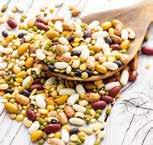


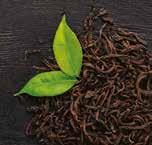

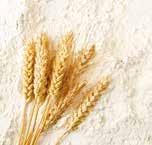

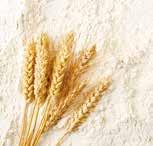













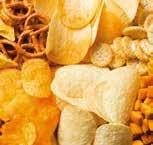



























YOU CAN THINK IT WE CAN PACK IT
our sustainable packaging solutions
IF
Watch
at: www.the-packaging-group.com/videoportal
Bühler
Bühler and IMDHER join forces in Mexico
Swiss Bühler Group announces the creation of a joint venture with IMDHER SA de CV, a leading player in the animal nutrition market in Mexico, that will drive process efficiency, quality, and sustainability in the feed industry.
Animal protein remains an important part of human nutrition and global meat consumption is rising. It is therefore essential to ensure that the animal protein value chain is as efficient and sustainable as possible.
Bühler is committed to reducing the environmental impact of all its customers' operations.
The new company, called IMDHER Bühler, will offer Bühler's core machines as well as IMDHER's expertise to IMDHER's customers, providing solutions that will help them to improve the capacity and efficiency of their operations. IMDHER brings four decades of experience building plants to produce animal feed, including pet food and aqua.
The family-owned business is a turnkey supplier to the Mexican feed market, with 20 percent market share. Bühler is buying a minority stake of 49 percent in the joint venture. The new company, IMDHER Bühler, will be managed by IMDHER General Manager, Luis Díaz.
Despite recent trends in western societies towards plant-based alternatives, meat consumption globally is rising, largely driven by increasing wealth and growing middle classes. Bühler is committed to ensuring this growth is achieved in a sustainable way, with the joint venture being an important step toward that goal.
Expertise in sustainable growth
“We believe that the growth in meat consumption can be achieved while reducing environmental impact. By using the latest and most efficient technologies to reduce waste and energy consumption and to contribute to animal welfare, we provide our support toward meeting the nutritional needs of millions of people in a more sustainable way,” says Johannes Wick, CEO of Bühler's Grains & Food business.
“With IMDHER, we have a perfect partner to serve the important and growing Mexican market with more efficient solutions and optimise an extensive installed technology base.”
IMDHER is one of the best recognised players in the Mexican animal feed market, specialised in the integral design, manufacture, assembly, construction, and start-up of turnkey plants for the production of nutritious feed for animal consumption for various species.
The company has built over 100 feed plants in Mexico and has the experience and capacity to carry out works of high complexity while customizing to the specific needs of its customers.
Bühler offers process solutions and services to transform a wide range of feed ingredients to safe, healthy, and nutritious animal feeds at the highest yields with animal welfare and feed conversion rate in mind. It brings the technology for efficient and hygienic animal feed processing installations, as well as over 150 years of sound processing expertise, which also allow retrofits and improvements on the installed base.

Industry Profile
96 | Julio 2022 - Milling and Grain
'The joint venture with Bühler represents an opportunity for us to add Bühler's technology and solutions to our existing assets and therefore to expand the offering to our customers in Mexico's vibrant and expanding market,' says IMDHER General Manager, Luis Díaz.
Bühler's expertise in feed solutions will help IMDHER's customers produce top quality feed while making more economical use of their raw materials and energy, thus improving the CO2 footprint of operations. This is in line with Bühler's target to have solutions ready to multiply that reduce energy, waste, and water in customers' value chains in all the markets it addresses by 50 percent by 2025.





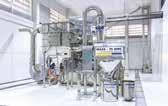






A proven partnership
“The participation has come about as a result of our talks with IMDHER over several years. Our first joint projects are already under way and working well. We will not only install Bühler core machines but also enable IMDHER's existing installed base to be connected to Bühler Insights, our central platform for connected products and services. This will improve the efficiency of IMDHER plants, and reduce energy consumption and waste,” says Olivia Enriquez, Director General, Bühler Mexico.
Bühler has been present in Mexico since 1959. Today it has a local and dedicated team of 115 employees providing services to customers across the region, as well as Cuba and Central America. Mexico is the sixth biggest producer of animal feed in the world, and is particularly strong in broiler and layer chickens, pigs, and dairy. In addition, the pet and aqua feed markets are currently growing fast.

“With this equity stake, we will be able to combine IMDHER's and Bühler's expertise to provide the dynamic animal nutrition market in Mexico with solutions that help them meet their process, efficiency, and sustainability targets. We look forward to working with Luis Díaz and his team and leveraging their skills and experience and ours in this fast-growing market,” says Johannes Wick.

97 | Julio 2022 - Milling and Grain Industry Profile
Agents& Distributors Wanted Maxtex Trading Group Co., Ltd. +662 948 8281 (Auto 10 Lines) Maxtex Trading Pte. Ltd. (Singapore Branch) +66 92 225 2621 E-mail: info@maxtex.net www.maxtex.net MAXX 75 -150 - 200 - 250 Kg/h RFPC • Produce 17 rice flour varieties, 100+ mesh and a shelf-life up to 2 years • Strict food safety industry-standard protocols • Wet-milling method, state-of-the-art technology, industry experience & creativity • Unique flushing/cleaning system enables producers to change rice varieties with ease. Achieve a short ROI with a scalable platform. • OEM service & supply available for your branded rice flour Contact us today for more details. www.maxtex.net We are seeking exclusive agents/distributors who are actively selling Agriculture equipment with a focus on Rice and Rice Flour. Apply today!!! • Schedule Live Streaming/Virtual tours to see Maxx Series operating today – info@maxtex.net Why compact unit? Why wet milling method? Rice Flour Process Milling Platform P r emiumProductofThai l a n d Ad 190x132 MG.pdf 1 20/4/2565 BE 14:42
Left to right: Olivia Enriquez (Director General, Bühler Mexico), Johannes Wick (CEO Grains & Food, Bühler) and Luis Díaz (General Manager, IMDHER).
Case Study
New feed mill for Arabian Farms
It’s hard to imagine increasing agriculture and food production in an inhospitable landscape. But that’s what the United Arab Emirates is doing.
Three-quarters of land in the UAE is covered by desert. Summer temperatures in the country often soar above 40 degrees Celsius, and freshwater is hard to find. Growing agriculture and food production in such a harsh environment seems ambitious in the country.
In fact, its dunes are better known for tourist safaris than their agricultural productivity. Every year, UAE needs to import 90 percent of its food requirements from various countries across the world. It relies on imports of not only food but of nearly all inputs for agriculture and food production.
With rapid growth and development and an increase in a diverse population that is largely made up of protein preferring young population coupling a surging demand in locally produced food led by health awareness and Covid-19 pandemic impacts, the importance of food security and the necessity to achieve self-sufficiency in food has been well recognized in the country.
In November 2018, the UAE launched the National Food Security Strategy 2051. And On 28 June 2020, the UAE Cabinet approved the national system for sustainable agriculture to improve the efficiency of farms, enhance selfsufficiency in food and create new opportunities to ensure that the agriculture sector is always ranked among the best. More and more agri-food producers invest in modern technologies to build sustainable and profitable local food production that will maintain the country’s supply, improve its food security and transform its food system. Arabian Farms is one of these ambitious companies.
Arabian Farms: An ambitious poultry business integrator
In 1978 Jeddah-based corporate houses Sedco Holding and Bugshan Investments joined hands to establish Arabian Farms, with a vision to produce fresh, local, safe and quality table eggs. After working successfully for more than 40 years, the company has become the largest poultry products provider in the UAE and is well-known for the high quality and safety of its products and the flagship brand SAHA Eggs. Arabian Farms is the UAE’s only producer of high-end pasteurised shell eggs.
The company currently operates a fully integrated poultry business in the UEA and Saudi Arabia. Its farms manage over 8.7 million birds and produces more than 270 million eggs a year at locations close to the main cities, which allow consumers easy access to fresh, locally produced premium products from grocers, food distributors, and food service companies across the region.
Its feed mills in Dubai, Al Kharj, and the new feed mill in Al Ain produce layer chick starter, commercial layer feeds, and Omega-3 enriched specially formulated feed. Becoming self-sufficient in feed, Arabian Farms is able to maintain the premium quality of all its poultry products and increase traceability.
Arabian Farms has also expanded into poultry meat products with the development of a greenfield broiler chicken site in Al Ain, UAE. When finished, the state-of-the-art project will produce 6000 tonnes per year of broiler meat an annum, helping Arabian Farms capture two percent of the regional fresh chicken market.
Boosting production with an advanced new feed mill
To support Arabian Farms’ new business ambition and production expansion plan, the company entrusted feed mill expert- the integrated solution provider Famsun to deliver a

98 | Julio 2022 - Milling and Grain
CS
A recently opened facility in Al Ain, UAE seeks to enhance local food production
state-of-the-art feed mill in Al Ain. For the turnkey project, Famsun provided project design, process engineering, manufacturing, project management, installation, commissioning and training services.
The greenfield project has 12 robust storage silos with a combined capacity of 4500 tonnes for maize, soybean meal and finished products. Of which, flat bottom silos are for maize and the hopper bottom silos are for soybean meal and finished products.
The hoppers are designed in different specifications according to the properties of soybean meal and finished feed. Together with supplying a conveying system of 80 TPH and associate equipment, the Famsun solution ensures hygiene, safety and efficiency in the storage, handling and processing.

The company’s delivery range also includes steel structure warehouse and workshop tower. Layout in the buildings keeps biosecurity, lean manufacturing and ergonomic concept in mind to improve production efficiency, product quality and user-friendly. Broiler feed and layer feed are produced flexibly and reliably on the same K-series pelleting line according to the orders from Arabian Farms’ poultry raising facilities nearby.
It can also produce crumbles for chicks. The feed can be delivered to Arabian Farms’ poultry farms in a bulk truck with the reasonably arranged finished product silos or delivered in bags at the last step of production. The feed mill is fully automated with the latest automation system and digital solutions from Famsun to cope up with the demand in production and quality.
Arabian Farms needs full supply chain resilience when investing in new capacity for local production. The new feed mill in Al Ain acquires advanced productivities, quality feed and better traceability to secure its food supply locally and protect birds and consumers.
The same purpose: Increasing local food security
The feed mill was built during the inconvenience of the Covid-19 pandemic worldwide. Construction work was started on August 5, 2020 and was completed successfully on June 2, 2021. Famsun’s local team, global experts, and partners from the local industry worked closely with Arabian Farms experts to overcome obstacles and secure construction continuity for the project.
The partners worked out an effective biosecurity strategy to protect workers on the construction site. Famsun’s digital service solutions allowed Famsun experts from its headquarters in China and other local teams worldwide to provide engineering guidance and share skills remotely to push the construction schedule ahead.
Modern technologies and investments are the drivers to bolster food resilience. “As a technology partner in the agrifood sector, the company is committed to partnering with ambitious producers to create more regional and local food production and supply capacities to ensure that people can access sufficient and nutritious food easily,” says Paul Zhu, Famsun representative in the GCC region.
“And Arabian Farms has made their resolve stronger to increase local production and protect the health and well-being of local people. We at Famsun have the same purpose.”
“We are proud to bring new resilient agri-food production capacity to the UAE’s food ecosystem with Arabian Farms,” adds Mr Zhu.” The new feed mill definitely will contribute to the next phase of the region’s food security and better life.”
Defends
77717201 To find out more about the defensive action of the Salgard range visit www.anpario.com today. Effectively controls pathogens, including Salmonella spp., E.coli and Campylobacter Helps prevent mould growth Aids in improving feed mill hygiene Protects feed from recontamination
Against Pathogens Salgard Nature’s Answer from Anpario Milling and Grain - Julio 2022 | 99
INDUSTRY EVENTS
13-15
SPACE 2022 Rennes, France https://uk.space.fr 15-18





Mill Tech Istanbul 2022 Istanbul, Turkey https://milltechistanbul.com 2022 October 5-6


Poultry Africa Kigali, Rwanda www.poultryafricaevent.com 12-13
JTIC 2022 Dijon, France www.jtic.eu 12-14

Vietstock 2022 Ho Chi Minh City, Vietnam www.vietstock.org 25-28





2022 July 6-8

16th Indo Livestock Jakarta, Indonesia https://indolivestock.com 2022 August 3-5

Ildex Vietnam 2022 Ho Chi Minh City, Vietnam www.ildex-vietnam.com 10-12




Livestock Malaysia 2022 Malacca, Malaysia www.livestockmalaysia.com 24-26


Livestock Philippines 2022 Pasay City, Philippines www.livestockphilippines.com
2022 September 7-9
VICTAM and Animal Health and Nutrition Asia 2022 Bangkok, Thailand https://victamasia.com



32nd IAOM MEA Annual Conference & Expo Zanzibar, Tanzania https://www.iaom-mea.com


2023 February 25-28



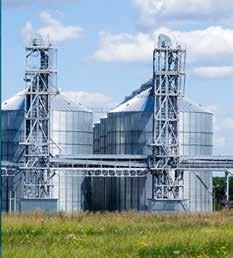
GEAPS Exchange 2023 Kansas City, Missouri, USA www.geapsexchange.com 21-23

Animal Health, Nutrition and Technology Europe 2022 London, UK www.kisacoresearch.com 2023 March 10-12
IDMA and Victam EMEA 2022 Istanbul, Turkey https://idmavictam.com 26-29
GEAPS Exchange 2022 Kansas City, Missouri, USA https://geapsexchange.com 2023 April 17-21
127th Annual IAOM Conference and Expo Minneapolis, Minnesota, USA www.iaom.org/annualmeeting 25-29
2022 November 9-11


AFIA Equipment Manufacturers Conference 2022 St. Petersburg, Florida, USA www.afia.org 9-11
Ildex Indonesia 2022 Jakarta, Indonesia www.ildex-indonesia.com 15-18

EuroTier 2022 Hannover, Germany www.eurotier.com
2023 January 19-20



IFF Insect Revolution Conference Online www.iff-braunschweig.de 22-27
IPPE 2022 Atlanta, USA www.ippexpo.org 31-4
31st Annual Practical Short Course on Feeds and Petfood Extrusion Texas, USA https://mymag.info/e/1477
Agrishow 2022 Sao Paulo, Brazil www.agrishow.com.br 2023 May 1-3
PIX AMC 2022 Gold Coast, Australia www.pixamc.com.au 2-6
126th Annual IAOM Conference and Expo Richmond, Virginia, USA https://www.iaom.org/event/126th-annualiaom-conference-expo/ 3-6
IPACK-IMA 2022 Milan, Italy www.ipackima.com 19-22
IAOM Eurasia 2022 Istanbul, Turkey https://www.iaom.org/event/iaom-eurasiaregion-conference-expo/ 25-27
Agritechnica Asia 2022 Bangkok, Thailand www.agritechnica-asia.com 31-2
VIV Europe 2022 Utrecht, The Netherlands www.viveurope.nl
SPRING COURSE Learn more – Learn onsite Enroll in the 12-week Course www.onlinemillingschool.com 100 | Julio 2022 - Milling and Grain ☑ = Meet the Milling and Grain team at this event
C M Y CM MY CY CMY K

























































































































































Cereals 2022
An industry event in recovery shows green shoots of new growth & optimism
by Andrew Wilkinson, Milling and Grain magazine
Located in Eastern England, the Fens is a naturally marshy region supporting a rich ecology and numerous species.
The word Fen is a colloquialism for an individual area of marshland or former marshland, whilst also designating the type of marsh typical of this particular area of the UK, which is either neutral or alkaline.
Centuries ago, most of these watery outcrops were drained, resulting in a flat, dry, low-lying agricultural region supported by a system of drainage channels and man-made rivers, as well as a smattering of automated pumping stations.
Lying inland of a large coastal area called the Wash, it covers an area of nearly 1500 miles2 (3,900 km2) in Lincolnshire, Norfolk and Cambridgeshire - which is where Cereals agricultural event was held this year.
With the long sweeping flat horizons evocative of northern France, much of the landscape surrounding this year’s location is dominated by evidence of mankind’s timeless and often troubled partnership with nature, with the view broken only by the large blue coils of potato irrigation systems and the pylons supporting the buzzing powerlines overhead.
The flat ground around the village of Duxford has not only supported agriculture over the years, but the village also lends its name to RAF Duxford, a former Royal Air Force airfield that was used as a sector station during the Battle of Britain.
This role was cemented into history in 1972 when the British Ministry of Defence began to house historically important aircraft in the hangars, which became the Imperial War Museum Duxford – with the many vintage aircraft partaking in a spot of aerobatics above our heads during this year’s edition of Cereals standing testament to this.
In June of 1941, an RAF Tiger Moth training biplane was attacked by a Luftwaffe aircraft over a local village, losing its entire tail section but owing to the pilot’s skill and bravery, the aircraft still managed to land safely.
Arriving in a much less dramatic fashion in 2022, the team from Milling and Grain magazine wallowed into the car park in a silver Vauxhall Zafira and set about reconnecting with some of our industry colleagues, many of whom we had not seen since the easing of Covid restrictions.
Recovering attendance figures
The event itself was launched back in 1979, and since then
it has attracted around 470 exhibitors and around 27,000 visitors each year. The show also features 64ha of working demonstrations of agricultural equipment, stands, business advice and specialist services, covering the entire arable industry, including potatoes and renewable energy.
WEDNESDAY 8TH & THURSDAY 9TH JUNE 2022
This year, Cereals 2022 hosted 17,000 visitors, 320 exhibitors & sponsors, nearly 100 speakers, several hundred demonstrations and a wide range of crop plots on display over the two days in Chrishall Grange, in the famous English county of Cambridgeshire.
Now, as the more astute mathematicians amongst you will have already noticed, these figures are noticeably lower than the show’s annual averages. That said, speaking as someone who attended the shows in 2016 and in last year’s Covid-19 hit event, I will say that this event bore more similarities with the show six years ago than last year’s incarnation.
So, there is little cause for panic just yet.
In addition, from talking to stall holders and industry colleagues at the event, I can say that the general buzz was a positive one –there was a feeling that their attendance was well worth the effort and expense. Unlike last year, where there was also an absence of the long strips of empty lots that must have been a cause of real concern for the event’s organisers.
Gone too were the placards mounted on stakes, which last year stood like gravestones in the empty plots, where stall holders had fallen sick or changed their minds in the days leading up to the event.
So, in short, the trepidation of last year was all but forgotten –with a good healthy tweed and polo shirt clad crowd to be found, stomping on Chelsea and Wellington boots throughout the site.
Finding security amidst global uncertainty
Amongst the long tented villages that house the majority of the exhibitors, sit larger constructions that house make-shift lecture theatres where the seminars took place. Running across the two days of Cereals – Wednesday 8 and Thursday 9 June, both days boasted a full programme of unique sessions.
Few would argue that in the current economic climate, the agricultural landscape is changing like never before. This statement holds truth in terms of policy, economics, environment, farming systems, food security and more.
Designed to bring farmers bang up to date with the latest thinking on how to produce food sustainably, this year the

102 | Julio 2022 - Milling and Grain
INDUSTRY EVENTS
Cereals AHDB Theatre was themed 'Code Green for Farming.’.
So, whether it's making the environment pay, finding security amid global uncertainty, or transitioning to a new farming system, a panel of experienced and well qualified experts were on hand to give visitors the answers they needed in order to run a more successful business.

In the session titled ‘Climate change – adapting for financial success’, sponsored by terravesta, Dr Jon Foot, head of environment and resource management at AHDB discussed environmental risk. “This is partly connected to climate change but also changes in nitrogen regulations,” he says.
“Farmers need to prepare for these changes and understand the options to reduce their carbon footprint. Carbon is money and goes hand in hand with greater efficiency and productivity.Global events have focused the industry's need to tackle high fuel and fertiliser prices by optimising production to ensure a profitable return,” he adds.
Sustainable & environmentally beneficial food systems
In a session which asked the question of whether the incoming co-designed farming grant schemes are going to help or hinder farmers, Emily Norton, director of research at Savills, sought answers from industry experts.
“We need to make sure farm businesses are protected from a pure focus on environmental land management. We should be talking agricultural policy not environmental policy and making
sure those messages get through to government,” she says.
Looking at food security, the government has delayed its response to the Food Strategy document and needs to grapple with the twin problems of rising cost of food production and consumers being squeezed and not able to afford food, she says.
“We can't sustain a society on cheap food when the core factors that sustain food production are at risk. For farmers, it is about how they act in a responsible way to the crisis – not by chasing yield and ever diminishing returns in making food cheaper, but instead in playing the long game, developing sustainable and environmentally beneficial systems. The ask to policymakers to support this transition is clear.”
One farmer who has sought to develop more sustainable systems is Ian Piggot OBE, who took part in a panel session looking at the practical aspects of regenerative farming. Managing partner at Thrales End Farm, near Harpenden, Mr Piggot began his journey around seven years ago.
“We recognised that our soils were degrading under intensive cultivation and excessive use of fertilisers and sprays - we needed to make a significant step change in the way we approached growing crops,'' he says.
“With a reduction in farm support on the horizon we also needed to find a way of driving costs out of our business. Diesel was almost an insignificant cost when we started with regenerative farming – now it is five times the price it was.”
The closing session focuses on the latest technology to help farmers farm more sustainably and profitably. Dr Jenna Ross, international business development manager at CHAP, will speak about autonomous slug monitoring and precision biomolluscicide treatment, helping to boost a very limited slug control toolbox.
“This kind of technology could potentially be used to control any pest or disease and speaking about it at Cereals will encourage visitors to think about other possible applications.”


See you next year!
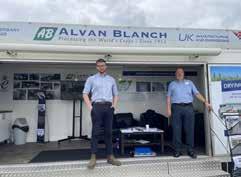
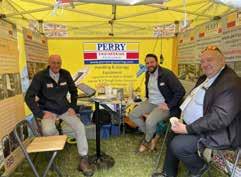
The organising committee look forward to welcoming you to Cereals 2023, which will take place from 14-15 June, 2023 at a rather different location of Thoresby Farming, Newark, Nottinghamshire. Milling and Grain magazine will be there again, so please do get in touch to arrange an appointment.

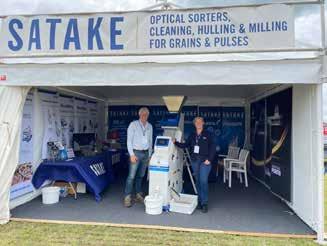
Milling and Grain - Julio 2022 | 103
INDUSTRY EVENTS
INDUSTRY EVENTS
The 6th Annual Aqua Feed Extrusion Conference
Highlights from the program held at VIV Europe 2022 in Utrecht, The Netherlands
by Dr Mian N Riaz, Texas A&M University,
USA
Perendale Publishers Limited, VIV worldwide and Dr Mian N Riaz from Texas A&M University hosted their annual 6th Aqua feed conference at the VIV Event in Utrecht, The Netherlands, on June 1, 2022. This conference was attended by more than 50 participants from all over the world.
Below are the highlights for each talk given by 10 international speakers at this conference.
Dr Mian N Riaz, Head of the Extrusion Technology Program at Texas A&M University, USA

Dr Riaz gave his talk on effect of protein, starch, and fat on aqua feed extrusion. He discussed the sources of the protein (animal vs plant protein) for the aqua feed and their nutritional and functional quality.
Dr Riaz also explains how the functional and non-functional proteins work in the aqua feed extrusion. The role of starch in making floating and sinking feed and fat in the raw material, whilst small changes in fat contact in the raw material can make difference in density and can affect the floatability of the pellet.
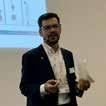
With recent changes in raw material demand and availability, the extrusion of ‘new’ raw materials for dry fish feed and petfood products has challenged the traditional way of producing quality products from premium raw materials.
Mr Arthur Vom Hofe, Segment Manager Feed & Oilseed, CPM Europe BV Netherlands.
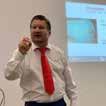
The first step in making aqua feed is to prepare your raw material using proper grinder for extrusion and that can be very costly, if not careful, you can spend lot of energy and efforts and then still ended up with poor quality pellets.
Mr Hofe discussed the raw material grinding to make quality aqua feed. In his presentation he explained hammer mills, their design and operating principles. He talked about tip speed, screen area, hammer pattern, grinding chamber design and hammer position.

Hadrien Delemazure, Manager for Pet Food and Fish Feed Processing, Clextral France:
Twin-screw extrusion has been extensively used to manufacture quality aqua pellets for the last 40 years. Recipes are getting more complex and diversified, fishmeal and fish oil are being replaced by alternative raw materials, which sources may vary according to international prices fluctuation and availability.

Aquafeed production lines are today expected to offer more process
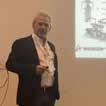


flexibility, reliability and durability that can be achieved using twin-screw extrusion technology. Furthermore, in order to produce both optimal floating and sinking feed, a precise control of the pellet expansion and density is necessary.
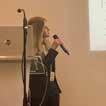
Michel Bauer Pereira, Global Application Manager –Aqua and Pet; Andritz, Denmark
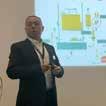

Mr Pereira gave an overview about making shrimp feed with extrusion technology. There are several different types of shrimp feed that is being made such as larvae and post larvae, starter, grower, finisher and brood stock.
This feed can be herbivore and omnivore and pellet stability in water and making is 100 percent sinking are most important factors for shrimp feed. Finished feed must have high protein, low starch and fibre and required amount of minerals and vitamins.
Jessica Wiertz -Brabender GmbH & Co KG and Carolina Schillinger Evonik Operations GmbHGermany
Jessica Wiertz and Carolina Schillinger discussed their work on extrusion processing of fish feed pellets: Influence of silica and oil content on the product properties. Over the last several decades, aquaculture has gained importance since wild capture can no longer meet the global demand for fish.
Therefore, this market has grown exponentially, and with it, the demand for fish feed. In particular feed with high amounts of fat has gained relevance, since it allows for many species (e.g., salmon, trout) the most efficient growth and, thus, farming. Extrusion processing is often used to produce fish feed pellets.
Dr Michael Cheng, Global Business Development Manager, Pet and Aqua; Buhler, Switzerland
Dr Cheng disused Aqua feed extrusion; Focusing on precision. By explain how the precision has move in extrusion technology
104 | Julio 2022 - Milling and Grain
from automated plant to digital assisted plants to self-adjusted plants to finally smart plants. These smart plants provide solutions to digital related services, and expert services.
These plants are targeted to provide highest yield, optimise manpower, support operator, efficient energy uses, flatten consumption, optimise product flow, real time monitoring, enhanced quality, digital assistance for process tracing, higher capacity, optimal performance and reduce downtime.
He explained how sensor technology can be used in granulation control loop for precision particle size distribution to make sure it is not too fine or to coarse.
Jens Erik Stengaard - Global sales of RAS extrusion systems; Wenger Manufacturing, USA
Mr Stengaard discussed in his talk about clean feed, clean water for aquaculture. The world’s demand for aquaculture (farmed fish) is estimated to have a growth of additional two million tonnes per year approaching 2050.
Moving aquaculture into land-based recirculating systems (RAS) is one of the best ways to reduce or eliminate the environmental impacts of farming fish, and as the number of RAS installation is increasing, the demand for RAS-specialised feed is also increasing.
For this reason, it may be prudent to look for newer extrusion technology to produce feed, not only for specialised RAS feeds, but also more environmentally feed for the general aquaculture.

Charlly Hansen, Sales Director Asia & Europe Extru-Tech, USA
Mr Hansen gave his talk on extrusion processing for floating and sinking aquatic feed. Cooking extrusion offers many advantages over alternative forming technology and as a result has been the preferred method for producing many aquatic feeds. Very near or even at the top of the list of advantages is the potential to control the final density of feeds.
Floating and sinking pellet characteristics are often considered a primary specification. Because cooking extruders operate at higher temperatures and moisture levels than other forming methods, the effects of this often equate to significant advantages in the physical characteristics of the finished pellets.
Physical durability that protects feed from disintegration during handling and transport, water stability that helps reduce leaching of nutrients into the environment.
Dr Tom Verleyen- Global Platform Director Nutrition and LiquiSMART Kemin Europe
Dr Verleyen started his presentation by explaining different challenges faced today to the feed industry such as variation in the raw material and production cost which can bring the profitability under pressure. But feed industry does not want to compromise in feed quality, stability and animal performance. He provided few
concepts to improve the cost and quality of the aqua feed. The first concept he discussed was by adding surfactant as a milling aid and mix in before entering to precondition. Surfactant milling aid enhances the preconditioning and improves overall milling performance and feed quality. Some of the benefits can include improved moisture retention, improve starch gelatinisation and strengthen the pellet durability.






James Laxton, Engineering Manager– Dryer Group Famsun, China
Every Aquafeed manufacturer faces operational challenges from time to time when producing high quality feed at maximum throughput and energy efficiency. Understanding the underlying cause of the problems faced during operation is a critical step in defining practical solutions to ensure reliable, high quality, efficient aquafeed production.
Mr Laxton gave his presentation on optimising energy efficiency in aqua feed drying. He explained what is energy efficiency and how is it calculated? What operational factors impact energy efficiency and how can energy efficiency be improved during drying of aqua feed.
WWW.VIV.NET Organized by VICTAM and VIV join forces to fuel growth in the Asian market, staging together at the IMPACT venue the Total Animal Feed and Health event for Asia HEALTH & NUTRITION ASIA 2022 BANGKOK, THAILAND 7-9 SEPTEMBER TRADE SHOW & FORUMS ON FEED, PHARMA & GENETICS IN ANIMAL PROTEIN PRODUCTION www.vivhealthandnutrition.nl Health & Nutrition Asia is co-located with Start warming up your business! Milling and Grain - Julio 2022 | 105 INDUSTRY EVENTS
Welcome to a new home for showtime

Victam Asia and Health & Nutrition Asia
Online visitor registration for the ‘Total Animal Feed and Health’ event is now open
Set to be held in co-location with Health & Nutrition Asia, Victam Asia is officially opening from September 7-9, 2022, and will be hosted at the IMPACT Halls 9 and 10, in Bangkok, Thailand.
The international trade show organisers Victam and VIV worldwide, after a couple of postponements due to the pandemic, are finally ready to stage this co-location and present in Bangkok the much-awaited Animal Feed and Health event for Asia.

The event program was presented at the recent official press conference held in Utrecht, the Netherlands where both organisers are currently hosting their first joint partnership, with the co-location of VIV Europe and Victam International already proving the powerful synergy of this cooperation.
Thailand: relaxed entry to an expanding market
The Press Conference was honored by the presence of HE Mr Chatri Archjananun, Ambassador, Royal Thai Embassy, Hague, the Netherlands who showed his unfeigned support to this first in-person animal health and feed event for Asia and wished for it to run smoothly and contribute to the MICE Industry in Thailand.
HE Mr. Chatri Archjananun reassured on Thailand’s relaxed Covid-19 measures for travelers. Fully vaccinated travelers will no longer need to book a quarantine hotel or show a pre-post departure PCR test. For non-vaccinated travelers, PCR test 72 hours before arrival is mandatory, with no quarantine required. The Ambassador also focused on a few key industry insights and highlighted that statistically for Thailand, the feed additives market is projected to reach 2.56 billion USD by 2025, with the poultry market and compound feed industry as the major growth drivers.
“There are many international as well as local companies in the Thai feed additive market, which are adopting various strategies, like expansions and partnerships to increase their market presence” he says.
Concluding, he addressed both the event organisers by adding, “to sum up, you have made the right choice choosing Thailand to host this event.”
Gateway to ASEAN
At the subsequent open discussion moderated by Ms. Panadda Kongma, Director of Agribusiness and Operations
for VNU Asia Pacific, the 50+ press representatives attending the conference gained latest insights about the show and its program from various panelists – Mr Heiko M Stutzinger, VIV worldwide Director and Chief Operating Officer, Royal Dutch Jaarbeurs; Mr Sebas van den Ende, General Manager Victam International; Mr Anuj Arora, Amorvet; Mr Jérôme Dubuc, Amandus Kahl; Mr Greg Liu, Famsun; and Mr Roger Gilbert, Perendale Publishers Limited.
“We are finally ready to present to the Asian markets, a complete Animal Feed and Health event that we have been working on for the last couple of years. Booth confirmations are well underway, and we will be able to jointly present a total of 300 exhibitors at the modern IMPACT venue in Bangkok. We expect professional visitors from the whole ASEAN region and the rest of Asia with the main profiles being CEOs, feed formulators, mill managers, nutritionists, operation directors, transportation managers, and veterinarians,” comments Mr Sebas van den Ende.
“VIV and Victam are committed in serving Asia’s feed and animal protein industries by jointly developing business opportunities within the feed ingredients and additives segments, which is the fastest growing sector of the Feed to Food supply chain.
“After more than two years without a dedicated show in the region, the market needs a face-to-face show to get back to action,” adds Mr Heiko M Stutzinger.
Daily struggles for the industry
Nutrition-related illnesses that affect livestock animals are daily struggles for the industry. Deficiencies and malnutrition severely impact animal growth, development, and production. The tropical environment of many regions in Asia, represents a high-risk element for pathogen growth in livestock. At the same time, drug residue & bacteria resistance in animals are concerning issues that require attention.
Victam Asia in co-location with Health & Nutrition Asia, want to serve as the business stage where top supplier solutions, innovations and expert knowledge are presented to this booming and growing market.
An elaborate conference & technical seminar program is being organised alongside the exhibition halls. A wide range of topics will
Showtime 106
be discussed including feed milling and formulation, feed safety, aquafeed, petfood, grain and rice milling, high-tech animal health technology, genetics, pharmaceutical solutions for Asia, veterinary equipment, feed additives, bio-energy & biomass pelleting technology and much more.

As one of the main partners, FAVA, the Federation of Asian Veterinary Associations, will hold the Asian Animal Health Award 2022 during the event with two award categories open for qualified veterinarians – field practitioner and academician/ researcher – to recognise its involvement and engagement in animal health. Candidates can apply until August 5, 2022.
All information about the FAVA application is available on the NEWS section at www.vivhealthandnutrition.nl.
Victam Corporation and VIV worldwide are confident that the co-location in Bangkok will mark another milestone in this win-win cooperation. Registration for professional buyers and
visitors is now open on the official websites www.victamasia. com and www.vivhealthandnutrition.nl.
See you in Bangkok, Thailand from September 7-9, 2022 at Victam Asia and Health & Nutrition Asia, by Victam and VIV.
Victam international & Grapas Europe 2022

Organisers ‘very satisfied’ with another successfully delivered edition
This was the early verdict of visitors, conference delegates and exhibitors alike. The exhibition and series of accompanying conferences were successfully held at Jaarbeurs in Utrecht, the Netherlands from May 31 – June 2. Victam International and GRAPAS Europe, co-located with VIV Europe, was the first large animal feed technology and grain milling event organised after the Covid-19 pandemic. "It was an anxious time in the lead-up to the exhibition due to the uncertain progress of the Covid pandemic around the world," says general manager of the Victam Corporation, Sebas van de Ende.
"Due to this long-lasting uncertainty, a number of exhibitors, unfortunately, did not participate. The war in Ukraine also influenced the participation of a number of exhibitors and visitors.”
246 exhibitors from 27 countries
Van den Ende continues: “On the other hand, the participating exhibitors came with exciting stands, machinery, and innovations. We were also able to welcome a number of new exhibitors.
The fact that we were able to organise a trade exhibition where people could meet each other in person again was, of course, great. We are very satisfied with the result!
“The next edition will be held in 2025 and we have already received numerous stand applications. It will also be a special edition as we will celebrate the 60th anniversary of Victam International!”
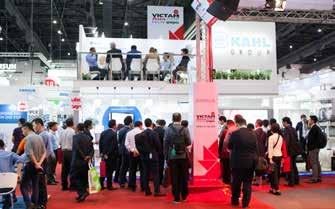
The visitors of the 2022 edition were pleased with the number of exhibitors and the wide range of products on display. Especially the newly launched products and the large number of machines at the different stands were very impressive.
There were 246 exhibitors from 27 countries present.
Likewise, the exhibitors were very satisfied with the visitors. Several stated that it was great to meet their clients and prospects face-to-face again. The exhibitors also commented on the very high quality of the visitors and the wide range of countries from which they came.
Over the three show days, there were over 7000 visitors attending the exhibition, a significantly higher number compared to 2019. Most of the visitors were from Europe, and the organisation was also happy to welcome visitors from other parts of the world. Unfortunately, there was a decline in visitors from Asia and Russia due to Covid and the war in Ukraine.
The conference delegates also confirmed the quality of the presentations presented at the numerous conferences. The conferences had extensive programs, which were well received.
Showtime 107

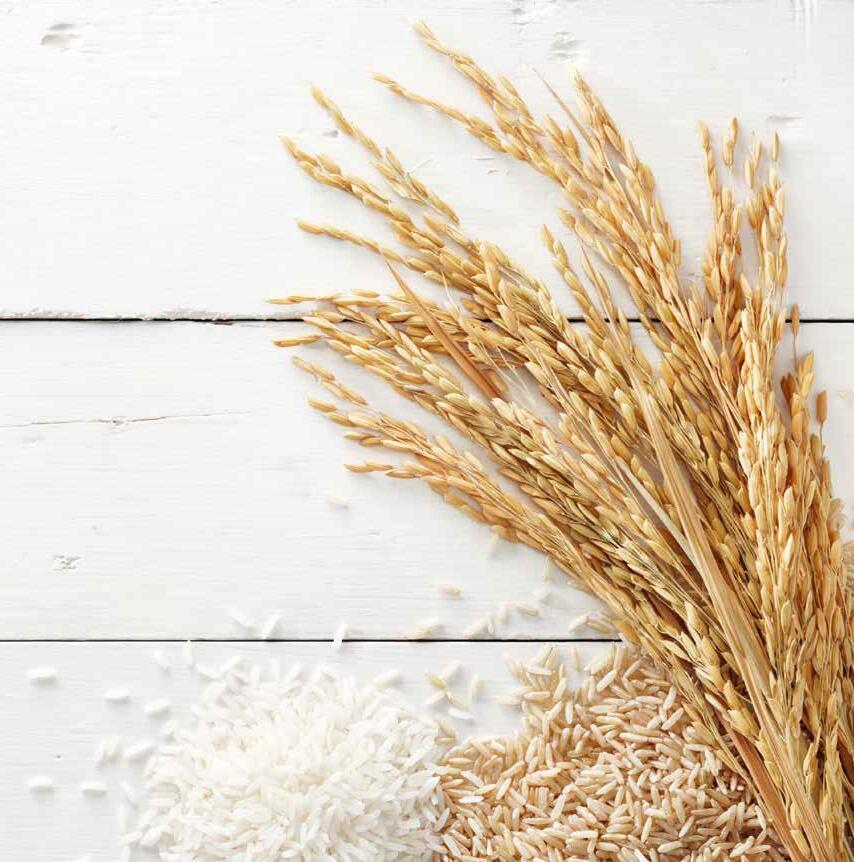
THE EVENT FOR GRAIN, RICE, FLOUR MILLING AND PROCESSING SEPTEMBER 7 - 9, 2022 @ IMPACT EXHIBITION CENTER, BANGKOK, THAILAND REGISTER NOW Visit grapas-asia.com for more information
The International Feed Technology Conference (IFTC) was held for the second time. The IFTC is a cooperation between the University of Wageningen and the Victam Foundation. The conference was fully booked, and the 90 delegates listened to presentations of (among others) Ruurd Zijlstra (University of Alberta), Birger Svihus (University of Life Sciences), Volker Heinz (CEO DIL), and Mia Eeckhout (Ghent University).
We are also proud that we could host several other conferences and meetings:
1. 2nd International Feed Technology Congress (IFTC)
2. Network event of the Royal Dutch Grain and Feed Trade Association
3. GRAPAS and AFTaN Innovations Seminars
4. PetXpert Processing Conference
5. 6th Annual Aquafeed Extrusion Conference
6. 66th FEFAC Annual Public Meeting
7. Young Feed Professionals Congress
8. Grain storage seminar
Additionally, several exhibitors like Kahl, Bühler, KSE, Van Aarsen, PremierTech, Clextral, Promtek, Seid, and Atline presented technical seminars, in the purposely build theater on the exhibition floor.
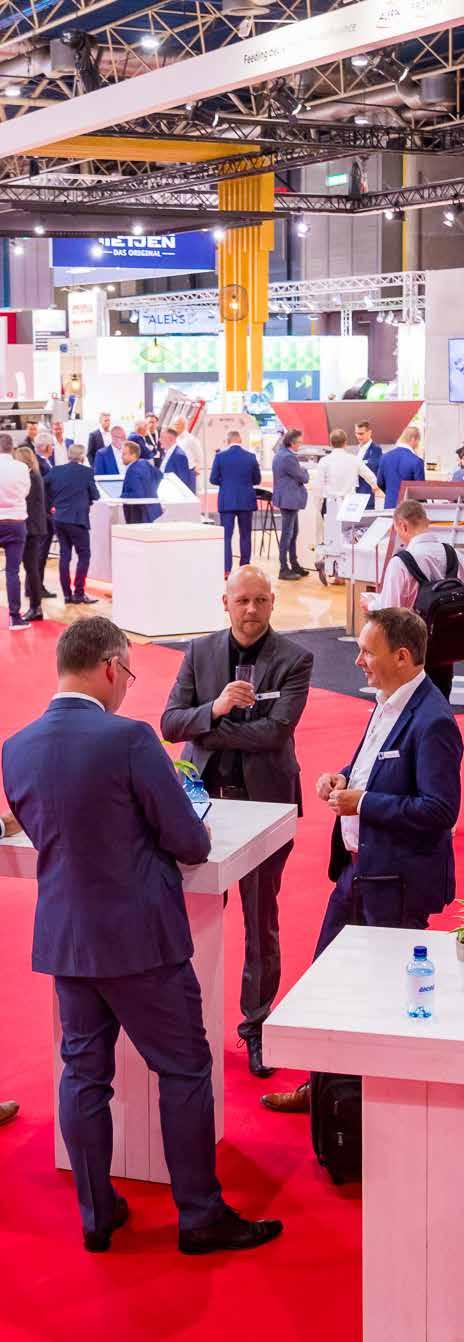
Innovation rewarded
To put all the innovations presented at the event in the limelight there were two innovation awards presented at the event: the Animal Feed Technology & Nutrition Awards (AFTaN) and the GRAPAS Innovation Awards. During the Exhibitor Reception on the first show day, the winners of these coveted awards were announced.
GRAPAS Award winners:
The GRAPAS Award was won by Bühler with the Arrius Integrated Grinding System.
The GRAPAS Distinction Award was given to Henry Simon for their HSPU Purifier.
The Highly Commended was awarded to RollCare Profile Measurement by Yenar
AFTaN Award winners:
Winner awarded to The M007 Cooler by Agentis Innovations
Distinction awarded to Dryer Heat Recovery by Famsun
Highly Commended awarded to Lube for Life Rolls by CPM
- Winner - Aquafeed awarded to SJPS156 Twin-screw Extruder by Famsun
Distinction - Aquafeed awarded to The Extruder Microfeed System by Andritz
The 60th anniversary edition of VICTAM International and GRAPAS Europe will take place from June 3 – 5, 2025 at Jaarbeurs, Utrecht, The Netherlands
Upcoming events:
The next event organised by the Victam Corporation is Victam Asia and Health & Nutrition Asia 2022 in co-location with GRAPAS Asia. The event will be held from September 7 – 9, 2022 at the IMPACT in Bangkok, Thailand. For more information, please visit www. victamasia.com.
Victam Latin America will be organised in 2023. More information will be available soon!
Milling and Grain - Julio 2022 | 109
Kaeser
Amino

Evonik



Bühler


Maxtex
Ozpolat


The Essmueller +1 800 325 7175 www.essmueller.com TSC Silos +31 543 473979 www.tsc-silos.com
Van Aarsen International +31 475 579 444 www.aarsen.com
Cereal and pulse conditioning

Bühler AG +41 71 955 11 11 www.buhlergroup.com

Vibrafloor +33 3 85 44 06 78 www.vibrafloor.com

vibronet-Gräf GmbH & Co.KG +49 6441 62031 www.vibronet.com
Colour sorters
Bühler AG +41 71 955 11 11 www.buhlergroup.com









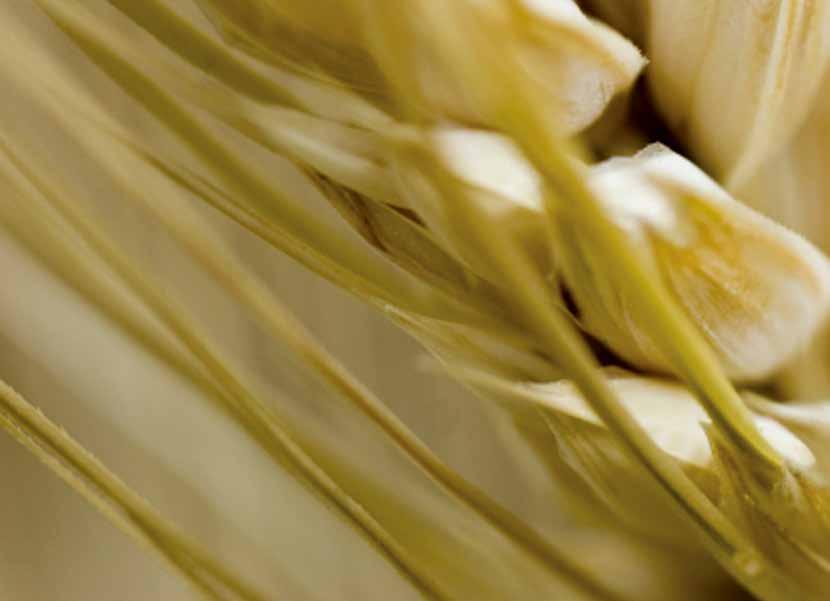












Cimbria Srl +39 0542 361423 www.cimbria.com







Maxtex Trading Group Co. Ltd. +66 29488281 www.maxtex.net
Satake +81 82 420 8560 www.satake-group.com

Computer software
Inteqnion +31 543 49 44 66 www.inteqnion.com
Van Aarsen International +31 475 579 444 www.aarsen.com
Coolers & driers




Bühler AG +41 71 955 11 11 www.buhlergroup.com
Consergra s.l +34 938 772207 www.consergra.com
FrigorTec GmbH +49 7520 91482-0 www.frigortec.com
FAMSUN +86 85828888 www.famsungroup.com Sukup +1 641 892 4222 www.sukup.com
ThermoNox GmbH +49 8442 8823 www.thermonox.de

Yemmak +90 266 7338363 www.yemmak.com
Yemtar Feed Mill Machines +90 266 733
Air products
Kompressoren +49 9561 6400 www.kaeser.com
acids
Nutrition & Care GmbH +49 618 1596785 www.evonik.com/animal-nutrition
Bagging systems
AG +41 71 955 11 11 www.buhlergroup.com
FAWEMA +49 2263 716-0 www.fawema.com
Trading Group Co. Ltd. +66 29488281 www.maxtex.net
Statec Binder +43 3112 38 5800 www.statec-binder.com
improvers
Golden Grain Group +86 371 68631308 www.g-grain.com Bakery
& Co KG
ERKAYA +90 312 395 2986 www.erkayagida.com.tr Mühlenchemie GmbH
+49 4102 202 001 www.muehlenchemie.com Bulk storage AGI www.aggrowth.com Behlen +1 402 564 3111 www.behlengrainsystems.com
Behn + Bates +49 251 9796 252 www.behnbates.com Brock +1 866 658 4191 www.brockgrain.com
Bühler AG +41 71 955 11 11 www.buhlergroup.com
Makina
Gida +90 342 337 1217 www.ozpolatmakina.com.tr
& Engineering
Cordoba
Siwertell AB
Silo Construction
+32 51723128 www.sce.be Silos
+34 957 325 165 www.siloscordoba.com Bruks
+46 4285880 www.bruks-siwertell.com Symaga +34 926640475 www.symaga.com Sukup +1 641 892 4222 www.sukup.com
Wenger Manufacturing +1 785-284-2133 www.wenger.com
Van Aarsen International +31 475 579 444 www.aarsen.com
8550 www.yemtar.com Dosing Bühler AG +41 71 955 11 11 www.buhlergroup.com Van Aarsen International +31 475 579 444 www.aarsen.com Elevator buckets 4B Braime +44 113 246 1800 www.go4b.com Tapco Inc +1 314 739 9191 www.tapcoinc.com Yemtar Feed Mill Machines +90 266 733 8550 www.yemtar.com Elevator & conveyor components 4B Braime +44 113 246 1800 www.go4b.com Bühler AG +41 71 955 11 11 www.buhlergroup.com Henry Simon +44 0161 804 2800 www.henrysimonmilling.com Tapco Inc +1 314 739 9191 www.tapcoinc.com Yemtar Feed Mill Machines +90 266 733 8550 www.yemtar.com Van Aarsen International +31 475 579 444 www.aarsen.com Enzymes ERKAYA +90 312 395 2986 www.erkayagida.com.tr Mühlenchemie GmbH & Co KG +49 4102 202 001 www.muehlenchemie.com PLP +39 05 23 89 16 29 www.plp-systems.com Extruders Almex +31 575 572666 www.almex.nl Andritz +45 72 160300 www.andritz.com Bühler AG +41 71 955 11 11 www.buhlergroup.com Wenger Manufacturing +1 785-284-2133 www.wenger.com Yemmak +90 266 7338363 www.yemmak.com Yemtar Feed Mill Machines +90 266 733 8550 www.yemtar.com To be included into the Market Place, please contact Tuti Tan at tutit@ perendale.co.uk
Feed nutrition
Adisseo
+ 33 1 46 74 70 00 www.adisseo.com
Anpario +44 1909 537 380 www.anpario.com

Biomin +43 2782 8030 www.biomin.net








DSM +44 1452 306129 www.dsm.com
Evonik Nutrition & Care GmbH +49 618 1596785 www.evonik.com/animal-nutrition






R-Biopharm Rhône Ltd +44 141 945 2924 www.r-biopharm.com

Romer Labs Division Holding GmbH +43 2782 803 0 www.romerlabs.com


The Anderson Inc +1 419-897-6758 www.andersonsgrain.com



Feed milling

Bühler AG +41 71 955 11 11 www.buhlergroup.com
milltech +90 332 5021300 www.milltech.com.tr

Dinnissen BV +31 77 467 3555 www.dinnissen.nl

FAMSUN +86 85828888 www.famsungroup.com
Friedrich electronic +49 6406 1509 www.friedrich-electronic.de

Ottevanger Milling Engineers +31 79 593 22 21 www.ottevanger.com

PLP


+39 05 23 89 16 29 www.plp-systems.com
Sangati Berga +55 11 2663 9990 www.sangatiberga.com.br
Van Aarsen International +31 475 579 444 www.aarsen.com






VAV Conveyor Components & Solutions


+31 7140 23701 www.vav-nl.com
vibronet-Gräf GmbH & Co.KG +49 6441 62031 www.vibronet.com
Viteral +90 332 2390 141 www.viteral.com.tr
Yemmak +90 266 7338363 www.yemmak.com
Zheng Chang +86 2164184200 www.zhengchang.com
Golden Grain Group +86 371 68631308 www.g-grain.com
Feed Mill Automation
Bühler AG +41 71 955 11 11 www.buhlergroup.com
Van Aarsen International +31 475 579 444 www.aarsen.com
Flour Improvers

Mühlenchemie GmbH & Co KG +49 4102 202 001 www.muehlenchemie.com

Flour milling
milltech
+90 332 5021300 www.milltech.com.tr




Grain handling systems
Behlen +1 402 564 3111 www.behlengrainsystems.com Brock +1 866 658 4191 www.brockgrain.com
Bühler AG +41 71 955 11 11 www.buhlergroup.com
Cimbria A/S +45 96 17 90 00 www.cimbria.com
Ozpolat Makina Gida +90 342 337 1217 www.ozpolatmakina.com.tr

Sangati Berga +55 11 2663 9990 www.sangatiberga.com.br


Sukup Europe +45 75685311 www.sukup-eu.com
Symaga +34 91 726 43 04 www.symaga.com
Tapco Inc +1 314 739 9191 www.tapcoinc.com
The Essmueller +1 800 325 7175 www.essmueller.com
Yemtar Feed Mill Machines +90 266 733 8550 www.yemtar.com
Zaccaria +55 19 3404 5700 www.zaccaria.com.br
Golden Grain Group +86 371 68631308 www.g-grain.com
Hammermills
Bühler AG +41 71 955 11 11 www.buhlergroup.com
Alapala
+90 212 465 60 40 www.alapala.com
Dinnissen BV +31 77 467 3555 www.dinnissen.nl Ottevanger Milling Engineers +31 79 593 22 21 www.ottevanger.com Selis +90 222 236 12 33 www.selis.com.tr Viteral +90 332 2390 141 www.viteral.com.tr Van Aarsen International +31 475 579 444 www.aarsen.com Yemmak +90 266 7338363 www.yemmak.com Yemtar Feed Mill Machines +90 266 733 8550 www.yemtar.com Zheng Chang +86 2164184200 www.zhengchang.com/eng Laboratory equipment Bastak +90 312 395 67 87 www.bastak.com.tr Bühler AG +41 71 955 11 11 www.buhlergroup.com ERKAYA +90 312 395 2986 www.erkayagida.com.tr Tekpro +44 1692 403403 www.tekpro.com Zaccaria +55 19 3404 5700 www.zaccaria.com.br Loading/un-loading equipment Bühler AG +41 71 955 11 11 www.buhlergroup.com Dinnissen BV +31 77 467 3555 www.dinnissen.nl MSC +44 1473 277 777 msc.com/sugar Neuero Industrietechnik +49 5422 95030 www.neuero.de Van Aarsen International +31 475 579 444 www.aarsen.com Vigan Engineering +32 67 89 50 41 www.vigan.com Mill design & installation Alapala +90 212 465 60 40 www.alapala.com 111 | Julio 2022 - Milling and Grain
ASG Group (Degirmen Makine) +90 342 357 01 50 www.degirmen.com
Bühler AG +41 71 955 11 11 www.buhlergroup.com
Genç Degirmen +90 444 0894 www.gencdegirmen.com.tr
Henry Simon +44 0161 804 2800 www.henrysimonmilling.com
IMAS - Milleral +90 332 2390141 www.milleral.com



Ocrim +39 0372 4011 www.ocrim.com
Ottevanger Milling Engineers +31 79 593 22 21 www.ottevanger.com
Sangati Berga +55 11 2663 9990 www.sangatiberga.com.br
Satake +81 82 420 8560 www.satake-group.com


Selis +90 222 236 12 33 www.selis.com.tr

Silo Construction & Engineering +32 51723128 www.sce.be


Van Aarsen International +31 475 579 444 www.aarsen.com



Yemtar Feed Mill Machines +90 266 733 8550 www.yemtar.com

Hydronix +44 1483 468900 www.hydronix.com
Zaccaria +55 19 3404 5700 www.zaccaria.com.br

Golden Grain Group +86 371 68631308 www.g-grain.com Moisture



Bühler
955
Bühler AG +41 71 955 11 11 www.buhlergroup.com















Dinnissen BV +31 77 467 3555 www.dinnissen.nl
FAWEMA +49 22 63 716 0 www.fawema.com
Maxtex Trading Group Co. Ltd. +66 29488281 www.maxtex.net
Statec Binder +43 3112 38 5800 www.statec-binder.com TMI +34 973 25 70 98 www.tmipal.com Yemmak +90 266 7338363 www.yemmak.com
Yemtar Feed Mill Machines +90 266 733 8550 www.yemtar.com
Paddle mixer
IDAH +866 39 902701 www.idah.com
Palletisers
Bühler AG +41 71 955 11 11 www.buhlergroup.com
Statec Binder +43 3112 38 5800 www.statec-binder.com
Golden Grain Group +86 371 68631308 www.g-grain.com


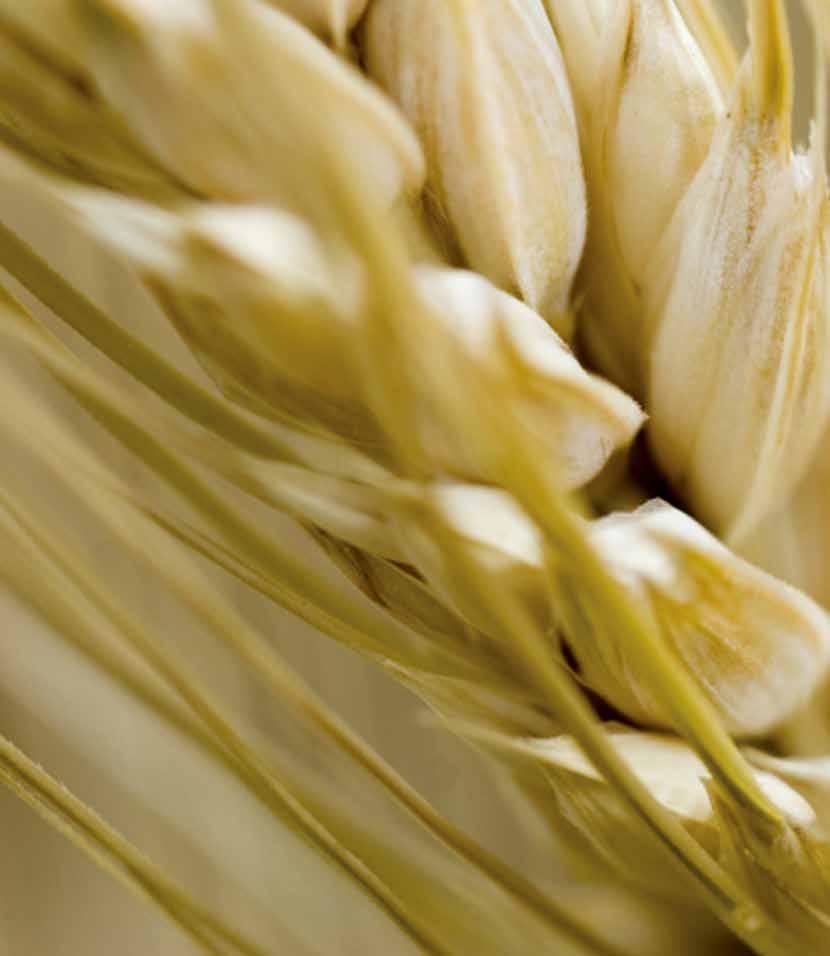
Pellet press
Bühler AG +41 71 955 11 11 www.buhlergroup.com



IDAH +866 39 902701 www.idah.com

Pelleting Technology Netherlands (PTN) +3 73 54 984 72 www.ptn.nl





Van Aarsen International +31 475 579 444 www.aarsen.com

Viteral +90 332 239 01 41 http://viteral.com.tr
Yemtar Feed Mill Machines +90 266 733 8550 www.yemtar.com
Yemmak +90 266 7338363 www.yemmak.com
Zheng Chang +86 2164184200 www.zhengchang.com/eng
Process control
Bühler AG
+41 71 955 11 11 www.buhlergroup.com

Inteqnion +31 543 49 44 66 www.inteqnion.com
Ottevanger Milling Engineers +31 79 593 22 21 www.ottevanger.com
Van Aarsen International +31 475 579 444 www.aarsen.com Yemmak +90 266 7338363
Plant
Bühler AG +41 71 955 11 11 www.buhlergroup.com
Sangati Berga +55 11 2663 9990 www.sangatiberga.com.br
Yemtar Feed Mill Machines +90 266 733 8550 www.yemtar.com

measurement
GmbH &
Mycotoxin management
1 46 74 70 00
Biomin
2782 8030
Packaging
AG +41 71
11 11 www.buhlergroup.com Hydronix +44 1483 468900 www.hydronix.com Vibrafloor +33 3 85 44 06 78 www.vibrafloor.com vibronet-Gräf
Co.KG +49 6441 62031 www.vibronet.com
Adisseo + 33
www.adisseo.com
+43
www.biomin.net
mills
Group
Makine)
112 | Julio 2022 - Milling and Grain
www.yemmak.com Pulverisers IDAH +866 39 902701 www.idah.com Rolls Bühler AG +41 71 955 11 11 www.buhlergroup.com Fundiciones Balaguer, S.A. +34 965564075 www.balaguer-rolls.com Statec Binder +43 3112 38 5800 www.statec-binder.com Yenar Dˆk¸m A.S. +90 332 2391073 www.yenar.com.tr Roller
Alapala +90 212 465 60 40 www.alapala.com ASG
(Degirmen
+90 342 357 01 50 www.degirmen.com Bühler AG +41 71 955 11 11 www.buhlergroup.com milltech +90 332 5021300 www.milltech.com.tr Genç Degirmen +90 444 0894 www.gencdegirmen.com.tr IMAS - Milleral +90 332 2390141 www.milleral.com Henry Simon +44 0161 804 2800 www.henrysimonmilling.com Ocrim +39 0372 4011 www.ocrim.com Pelleting Technology Netherlands (PTN) +3 73 54 984 72 www.ptn.nl Pingle +86 311 88268111 www.plflourmill.com Sangati Berga +55 11 2663 9990 www.sangatiberga.com.br
Roll fluting
Selis
+90 222 236 12 33 www.selis.com.tr


Yemtar Feed Mill Machines
+90 266 733 8550 www.yemtar.com
Golden Grain Group +86 371 68631308 www.g-grain.com
Bühler AG +41 71 955 11 11 www.buhlergroup.com
Fundiciones Balaguer, S.A. +34 965564075 www.balaguer-rolls.com
Yenar Dˆk¸m A.S. +90 332 2391073 www.yenar.com.tr

Reclaim system
Vibrafloor +33 3 85 44 06 78 www.vibrafloor.com


Scalling

Bühler AG +41 71 955 11 11 www.buhlergroup.com
NorthWind +1 785 284 0080 www.northwindts.com

Sifters
ASG Group (Degirmen Makine) +90 342 357 01 50 www.degirmen.com



Brock +1 866 658 4191 www.brockgrain.com
Bühler AG +41 71 955 11 11 www.buhlergroup.com
Dinnissen BV +31 77 467 3555 www.dinnissen.nl
Filip GmbH +49 5241 29330 www.filip-gmbh.com

Gazel +90 364 2549630 www.gazelmakina.com

Koyuncu Sanayi +91 224 723 92 92 www.koyuncufirca.com

Sefar AG +41 898 57 00 www.sefar.com



Selis +90 222 236 12 33 www.selis.com.tr
Zaccaria +1 5519 34045715 www.zaccaria.com.br
Golden Grain Group +86 371 68631308 www.g-grain.com
Silos

Behlen +1 402 564 3111 www.behlengrainsystems.com


Bühler AG +41 71 955 11 11 www.buhlergroup.com
A/S Cimbria +45 9617 9000 www.cimbria.com

CSI +90 322 428 3350 www.cukurovasilo.com


The Essmueller +1 800 325 7175 www.essmueller.com


Obial +90 382 2662120 www.obial.com.tr
Ozpolat Makina Gida +90 342 337 1217 www.ozpolatmakina.com.tr
Silo Construction & Engineering +32 51723128 www.sce.be

Silos Cordoba +34 957 325 165 www.siloscordoba.com
Sukup +1 641 892 4222 www.sukup.com

Symaga +34 91 726 43 04 www.symaga.com
Top Silo Constructions (TSC) +31 543 473 979 www.tsc-silos.com
Van Aarsen International +31 475 579 444 www.aarsen.com
Temperature monitoring

Bühler AG +41 71 955 11 11 www.buhlergroup.com
Inteqnion +31 543 49 44 66 www.inteqnion.com
vibronet-Gräf GmbH & Co.KG +49 6441 62031 www.vibronet.com


Training
Bühler AG +41 71 955 11 11 www.buhlergroup.com
IAOM
+1 913 338 3377 www.iaom.info

IFF +495307 92220 www.iff-braunschweig.de
Kansas State University +1 785 532 6161 www.grains.k-state.edu

OMS +441242 267700 www.onlinemillingschool.com
Vibrators
Vibrafloor +33 3 85 44 06 78
www.vibrafloor.com

Weighing equipment
Bühler AG +41 71 955 11 11 www.buhlergroup.com
PLP +39 05 23 89 16 29 www.plp-systems.com
Van Aarsen International +31 475 579 444 www.aarsen.com
Vibrafloor +33 3 85 44 06 78 www.vibrafloor.com


vibronet-Gräf GmbH & Co.KG +49 6441 62031 www.vibronet.com
Yeast products

Leiber GmbH +49 5461 93030 www.leibergmbh.de
PERENDALE PUBLISHER'S
INTERNATIONAL MILLING
DIRECTORY 30 WILL BE SOON AVAILABLE IN PRINT AND ONLINE.
With close to 30 years of publication behind it, the International Milling & Grain Directory (better known as the IMD) is a high-visibility, high-prestige directory for your company to appear in if you are selling products or services to millers.
The IMD enjoys a global reach of more than 50,000 readers. New for IMD 30 you will find fascinating articles drawn from our sister publication, Milling and Grain. These articles provide real world examples from each different milling specialty, including interviews with leading industry figures, case studies based on visits to flour mills, feed mills and grain storage and handling manufacturers around the world.
Contact the team: Tuti Tan tutit@internationalmilling.com Mehmet Ugur Gürkaynak mehmetg@perendale.com
AGI
www.aggrowth.com
Altinbiliek +90 222 236 13 99 www.abms.com.tr

Ocrim +39 0372 4011 www.ocrim.com
UK Flour Millers +44 2074 932521 www.ukflourmillers.org
The International Milling Directory is free to join if you are a supplier company. List your company, products and services today!
If you would like to order a print copy of the Directory, please visit our website at: internationalmilling.com
30TH PRINT EDITION OUT NOW!

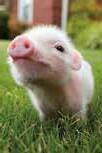






















C M Y CM MY CY CMY K 3-5 August 2022 Saigon Exhibition and Convention Center (SECC) Ho Chi Minh City, Vietnam THE 8TH INTERNATIONAL LIVESTOCK, DAIRY, MEAT PROCESSING AND AQUACULTURE EXPOSITION, VIETNAM ORGANIZED BY POWERED BY FOLLOW US ON @ILDEXEXHIBITIONS www.ildex-vietnam.com The international livestock, dairy, meat processing and aquaculture exposition, has become the leading trade exhibition in the Asia region with strong attendance and plentiful business opportunities. Livestock experts and leading exhibitors have stated that it is the best marketplaceand international business platform for the Vietnamese market. Learn more about us: REGISTER NOW 25th - 28th OCTOBER 2022 HOTEL VERDE, ZANZIBAR, TANZANIA For Registration, Sponsorship & Expo Booking PLEASE CONTACT: info@iaom-mea.com 0096824398767 www.iaom-mea.com 114 | Julio 2022 - Milling and Grain
61 4B mymag.info/e/418 13 AGM-Tech mymag.info/e/1297 68 Alapala mymag.info/e/568 74 Alapros mymag.info/e/1298 26 Almex mymag.info/e/570 16 Altinbilek mymag.info/e/571 20 Anderson mymag.info/e/5799 99 Anpario mymag.info/e/1097 15, 17, 19 Bastak mymag.info/e/102 67 Behlen mymag.info/e/104 29 Behn + Bates mymag.info/e/1143 4 Brock Grain Systems mymag.info/e/261 120 Bühler mymag.info/e/90 65 Cablevey Conveyors mymag.info/e/1299 14 Cimbria mymag.info/e/592 36 Consergra mymag.info/e/197 48 DSM mymag.info/e/1335 50 Dinnissen mymag.info/e/316 39 Erkaya mymag.info/e/173 18, 119 Famsun mymag.info/e/121 12 Filip GmbH mymag.info/e/114 85 FrigorTec mymag.info/e/7288 11 Fundiciones Balaguer mymag.info/e/305 64 Gazel Milling mymag.info/e/182 27 Hydronix mymag.info/e/3322
mymag.info/e/1478 63 Neuero mymag.info/e/627 59 Obial mymag.info/e/128 42, 43 Ocrim mymag.info/e/129 21 Ortas mymag.info/e/1302 79 Ottevanger mymag.info/e/633 6 Pingle Group mymag.info/e/258 73 PLP Systems mymag.info/e/140 55 Romer Labs mymag.info/e/1098 2 Satake mymag.info/e/304 83 SCE mymag.info/e/263 24 Sefar mymag.info/e/648 34 Selis mymag.info/e/148 47 Statec Binder mymag.info/e/791 56 Symaga mymag.info/e/153 9 Tapco Inc mymag.info/e/159 30 TekPro mymag.info/e/309 40 The Essmueller mymag.info/e/161 95 The Packaging Group mymag.info/e/603 27 TSC mymag.info/e/656 37 UK Flour Millers mymag.info/e/306 29 Van Aarsen mymag.info/e/162 70 VAV mymag.info/e/10422 77 Vibronet mymag.info/e/663 5 Vigan mymag.info/e/166 25 Yemmak mymag.info/e/170 75 Yemtar mymag.info/e/8488 23 Yenar mymag.info/e/171 13 Zaccaria mymag.info/e/671 81 Zhengzhou Golden Grain Group mymag.info/e/1031
32, 33 MYSILO Grain Storage Systems


Advertised products in this issue
P
PROFILE
PRODUCTS AND SERVICES FEATURED IN THIS ISSUE my MAG
71 imas mymag.info/e/119 36 Inteqnion mymag.info/e/190 3 Jiangsu Zheng Chang mymag.info/e/189 91 Makenas mymag.info/e/1457 97 Maxtex Trading mymag.info/e/1173
Milling and Grain - Julio 2022 | 115
the interview
Andy Sharpe, President & CEO North American Region, Bühler
As well as holding the positions of President, CEO, and Vice President of Business Development of Bühler Aeroglide, Andy Sharpe is also the current President and CEO of the North American Region at Bühler.
As head of the Bühler North American Sales and Service organisation, Mr Sharpe has developed a culture of trust, respect and honesty – transforming the organisation into one where entrepreneurship, accountability and innovation flourishes.
Prior to holding these positions, he was the Business Manager Cereal and Snack Business Manager Cereal and Snack at Baker Perkins for more than 17 years from 1978 - 1996. Milling and Grain magazine recently met with Mr Sharpe to discuss his colourful career, his views on the current state of our industry and the many challenges that we are all set to face over the coming years.
You were born and raised in the UK. How did your career lead to you working for Bühler and ending up in the USA as its President and CEO of North America?
My career started with Baker Perkins based in Peterborough England as an Apprentice. Baker Perkins focused upon ‘biscuit – bakery- chocolate -confectionery’ plus cereal and snack equipment.
Following my four years apprenticeship and foundation in mechanical engineering I took the decision to move into procurement. Baker Perkins supported continued education, which enabled me to complete a business degree with a focus on supply chain management.
My next step was toward Sales with a stopover in contract management. Then my time in sales started with coverage of the Nordic region and UK. At this time, again with the support of Baker Perkins, I studied for a Marketing degree, which has helped me in so many ways.
Within Baker Perkins I ended up managing the Cereal and Snack division globally. This led me to interact with Aeroglide Corporation, which ended up being my next home. My wife Kate and I moved to Raleigh NC for about 18 months to really get to know the team in Aeroglide.
Upon completion of this work, we returned to UK with a baby girl who was born halfway through our time in Raleigh. From 1998 to 2008 I worked for Aeroglide building a business in Europe, the Middle East, and Africa. In 2008, Bühler acquired the Aeroglide business, so this was the point where I joined the Bühler family.
My next step was moving back to USA to lead Business Development for Bühler Aeroglide in 2012. Then in 2014, Bühler asked me to take over as President and CEO of the Bühler Aeroglide business. This position brought many challenges in terms of driving new business development and ensuring we could grow the business profitably.
The full team in Raleigh got behind these goals and supported in a wonderful way. We worked every day on our values and building a culture that ensured we engaged everyone and provided an environment where lessons could be learned, with positive feedback!
Then, in 2018 Stefan Scheiber and Dieter Vogelti asked me if I would lead the North American region for Bühler to help create a broader collaboration across all of the Bühler business units. So, on January 1, 2019, I officially took over from Rene Steiner as President and CEO for Bühler North America.
What is it about the milling industry and in particular the range of equipment your company supplies that keeps you motivated and driven?
Within Bühler, one of our core beliefs is that every human has a right to safe and nutritious food. With the milling industry being the foundation of Bühler, the products our milling customers supply provides staple foods for so many, globally. Our purpose, to create innovations for a better world, means that we get the opportunity to help these same customers strive daily for excellence in support of this purpose. For me, this is more than enough to get me out of bed every morning!
What are some of the personal challenges you have overcome in order to continue to lead a company that dominates the supply of milling equipment globally?
The challenges I deal with are really around understanding myself and putting myself in other’s shoes, be they customers or the team in Bühler. Remaining consistent in my approach and values every day is key.
It compels me to be present when engaging with both our team and customers. When I am on task, it’s around being able to ‘disconnect to connect’ not allowing other stuff to get in the way.
I don’t believe so. We now have tools to create a more holistic examination of the total process, from the field to the bakery or store. We will find additional areas where improvements can be made!
Just look at our Mill E3 concept and the opportunities it presents for millers. I think there are efficiency gains to be made, and technology and digitalisation will lead the way.
Bühler wants the milling industry to cut its waste, water and energy consumption by 50 percent by 2030. Are millers in North America working towards this target too
This goal is not just about Milling. It’s a commitment made by Bühler to make these reductions in all our customers’ value chains. It was initially stated in 2016 as 30-30-30, then expanded to 50-50-50 at the 2019 Networking Days.
Has technology reached its peak in making the milling industry more efficient?
and how important is this goal in your opinion to the future of milling?
116 | Julio 2022 - Milling and Grain
These goals really force the need to create collaboration across industries to learn and share opportunities and best practices while we drive the innovation necessary to address these targets and be able to sustainably feed 10 billion people by the year 2050. As you may have seen from the NWD 2022 event, these collaborations and innovations are growing exponentially.
Finally, what is the importance of milling in the eyes of consumers? What more must we do to prove that our sector is the most essential to the human condition in the years ahead?

Consumers sometimes struggle to connect the dots, in terms of the work that goes on before a product or ingredient is purchased by them from the supermarket or store.
So, my thought would be to create the transparency needed to show consumers the efforts already on going in managing this essential resource, like improving yields and driving the reduction of energy use, and what that means for them individually and what it means for the planet.
And of course, all this must be done while maintaining, and even improving quality and safety every single day.
AB Agri appoints Dr Michael de Veth as Head of Dairy Innovation – a new role designed to support AB Agri’s growth plans across the global dairy sector.
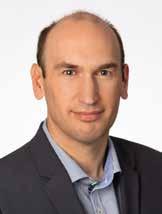
Dr de Veth joins the AB Agri Innovation Lab, reporting to AB Agri’s Innovation Director, Dr Helen (Nell) Masey O’Neill. He will also work closely with Strategic Marketing Director, Ricardo Daura.
“Our goal is to serve progressive dairy farmers across the world in novel and increasingly valuable ways,” says Ricardo Daura. “Michael’s knowledge, experience and leadership will be invaluable in achieving this, and we are glad to have him on our team.”
“AB Agri and its family of businesses are renowned for innovation and deep technical expertise,”says Dr Michael de Veth.“I am excited to be working alongside the experienced and dedicated colleagues within AB Agri.”
Brock Grain Systems promotes new Product Manager of Storage Systems
Dan Wuthrich has been promoted to product manager of Storage Systems for Brock Grain Systems, according to Mark Dingeldein, new product development director for the CTB, Inc business unit.
In his new position, Wuthrich will be responsible for managing projects and programs to help Brock increase market share and ensure profitable sales of its industryleading storage products.
He will develop a deep knowledge of customer needs, market trends and channel opportunities, while working closely with the sales team to improve service, value-added solutions and customer satisfaction.
A native of Milford, Indiana. He currently resides in New Paris, Indiana. A CTB employee since his college graduation in 1994, Wuthrich has gained vast experience at Brock.

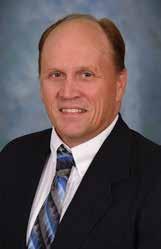
His past positions with the company include International Project Manager, Customer Service Representative, Product Specialist and Product Technical Group Manager.

Anpario appoints new Sales Manager for Egypt, UAE and Oman
Anpario, the independent manufacturer of natural sustainable feed additives for health, nutrition and biosecurity for livestock and aquaculture production, is pleased to announce the appointment of Dr Khaled Elganainy as Sales Manager for Egypt, UAE and Oman.
Anpario has seen significant sales growth over the past few years in the region and have responded by opening a new office in Turkey in addition to the office situated in Dubai. The company also recognises the increasing opportunity for their feed additive solutions within the region across all livestock sectors.
Dr Elganainy graduated from Mansoura University in Egypt with a degree in Veterinary Science and recently completed his MBA at Brooklyn University in the USA. He is a knowledgeable animal health professional with extensive experience in veterinary pharmaceuticals, providing both technical support and business development for producers across all sectors within the region.
Zinpro Corporation promotes colleague to General Counsel
Zinpro Corporation announces the promotion of LaToya J. Burrell, MBA, J.D., to the role of general counsel.

In addition to providing legal counsel, Burrell will retain her current responsibilities leading the company’s diversity, equity and inclusion (DEI) and corporate giving activities, as well as her role as executive director of Anderson Foundation.
“LaToya truly lives our core values, and we have benefited greatly from her dedication to excellence and continuous improvement,” says Zinpro President and CEO Rob Sheffer. “We look forward to leveraging her leadership skills and legal expertise on our leadership team as we continue to grow.”
Since joining Zinpro in February 2021, Mr Sheffer notes that Ms Burrell has led numerous culture-building initiatives, including an employee-focused mental health education campaign – an effort that earned Zinpro NAMI Minnesota’s Employer of the Year award for 2021.
PEOPLE THE INDUSTRY
FACES
New senior appointment seeks to accelerate AB Agri’s plans for global dairy growth
118 | Julio 2022 - Milling and Grain

The next level of optical sorting.
Advance your sort process with the all-new MerlinAi powered SORTEX H SpectraVision

Up to 50% increased reject concentration Save time and money with fast data-based decisions Learn more at www.buhlergroup.com/sortex-h
The SORTEX H SpectraVision is an all-new optical sorter with a range of benefits to offer: The most simple to use optical sorter on the market

Innovations for a better world.
Full color and InGaAs cameras designed in-house, so they are optimized for optical sorting



































































 Por Mildred Cookson, The Mills Archive, Reino Unido
Los nuevos molinos de harina Phoenix de los Sres. J Davidson e Hijos, Newcastle-on-Tyne Parte 2: El Fénix se expande y se transforma
Harrison Carter four roller break mill
Interior view of erecting shop for centrifugals, scalpers, purifiers etc
Cross section of the new mill
Por Mildred Cookson, The Mills Archive, Reino Unido
Los nuevos molinos de harina Phoenix de los Sres. J Davidson e Hijos, Newcastle-on-Tyne Parte 2: El Fénix se expande y se transforma
Harrison Carter four roller break mill
Interior view of erecting shop for centrifugals, scalpers, purifiers etc
Cross section of the new mill














































































































 Melvyn Penna, Product Manager Optical Sorting, explica los nuevos desarrollos de SORTEX H SpectraVision
Manfred Dess, director de producto de Calidad y Suministro de Granos, ayuda a los visitantes a ahorrar energía en la limpieza de granos
Melvyn Penna, Product Manager Optical Sorting, explica los nuevos desarrollos de SORTEX H SpectraVision
Manfred Dess, director de producto de Calidad y Suministro de Granos, ayuda a los visitantes a ahorrar energía en la limpieza de granos















































































































 by Professor Wu Wenbin, Henan university of technology, China
by Professor Wu Wenbin, Henan university of technology, China
































































































































































































































































































